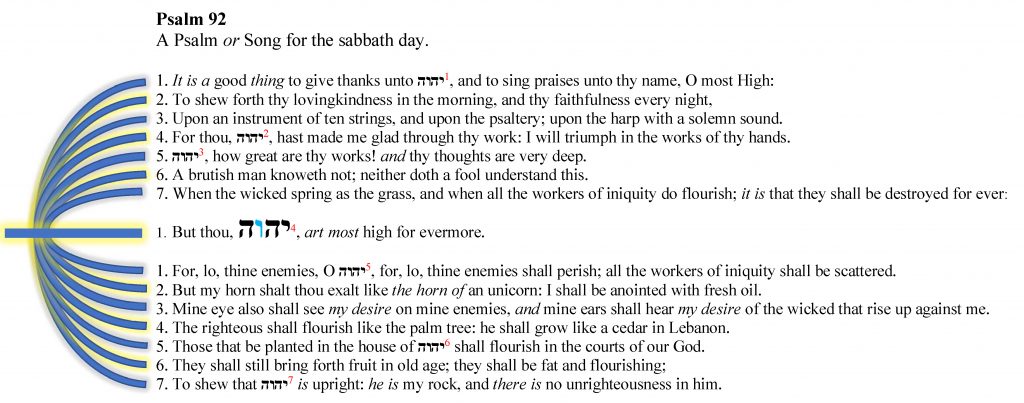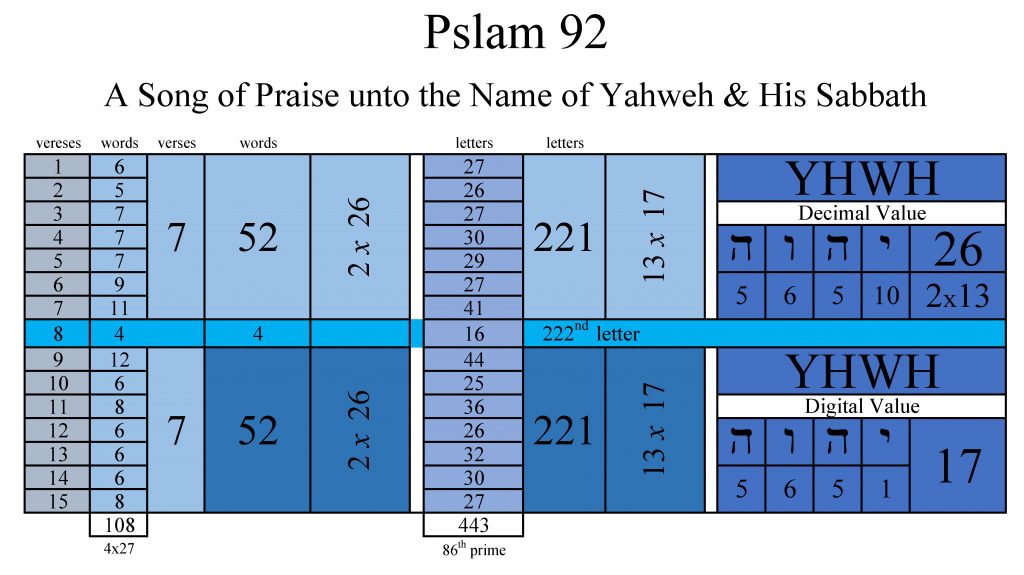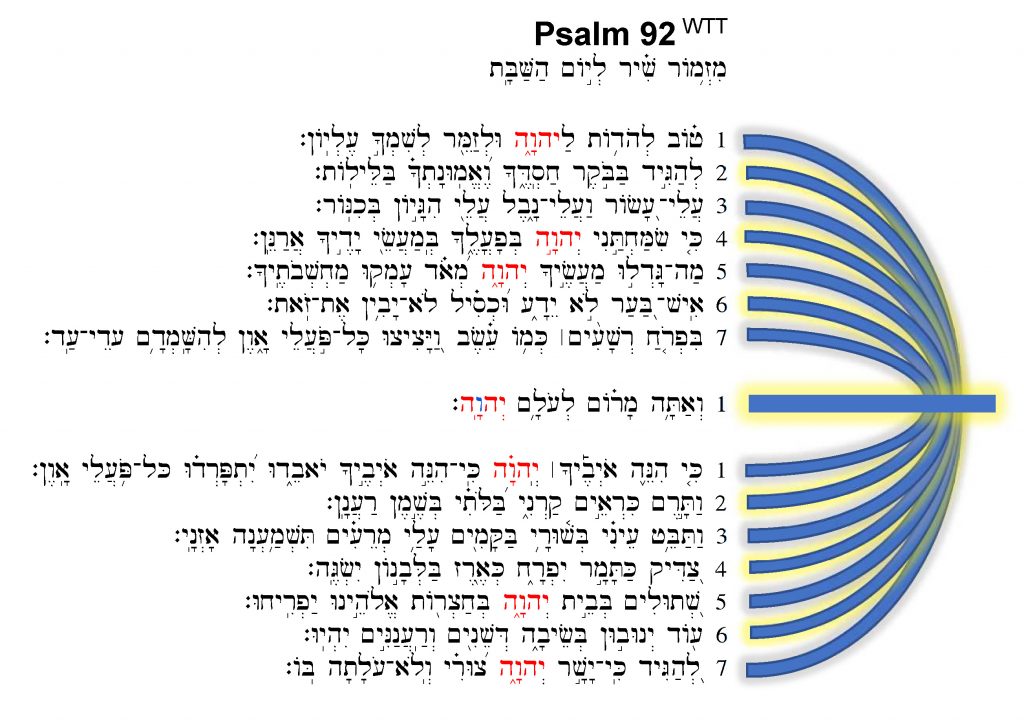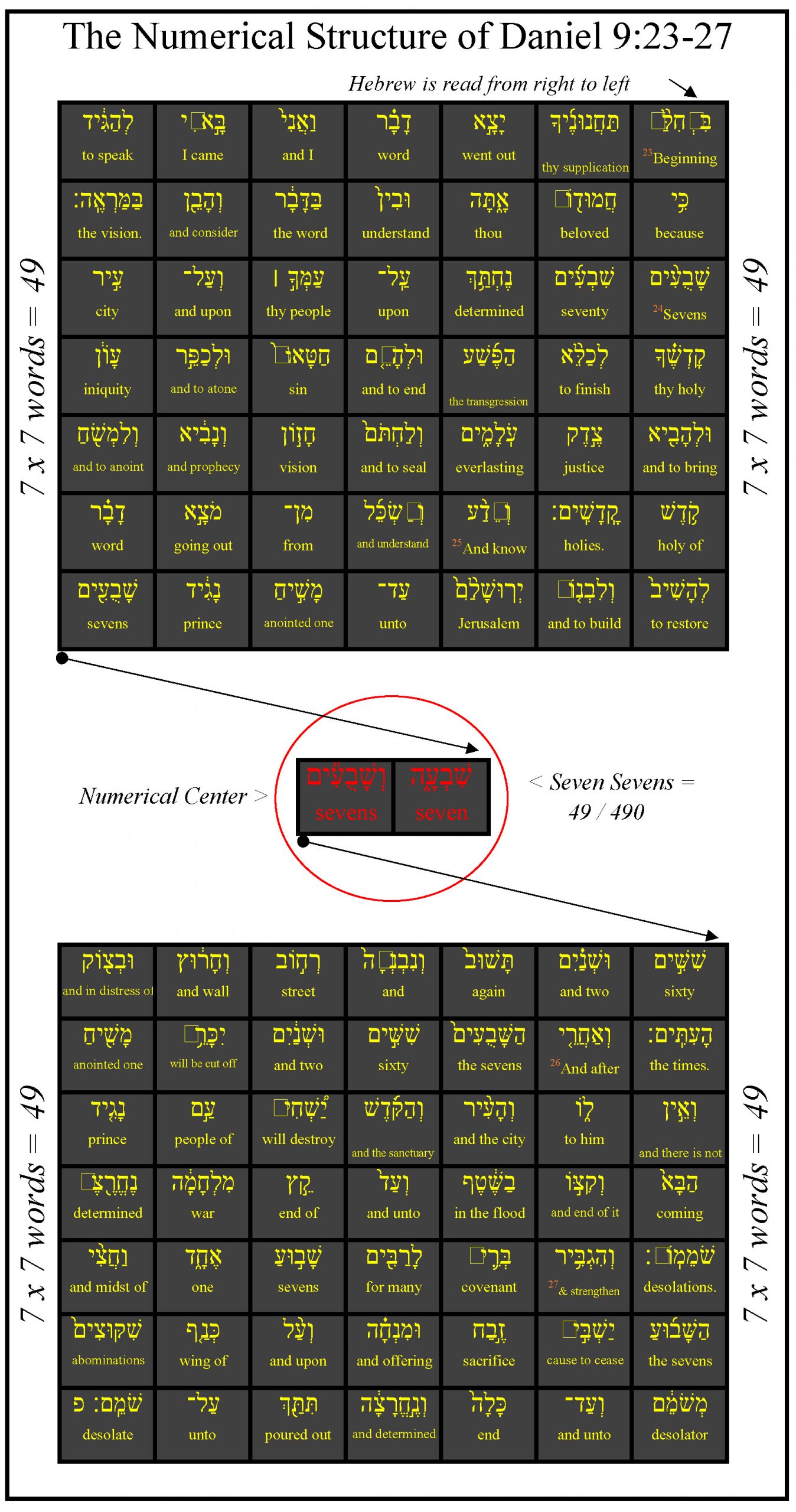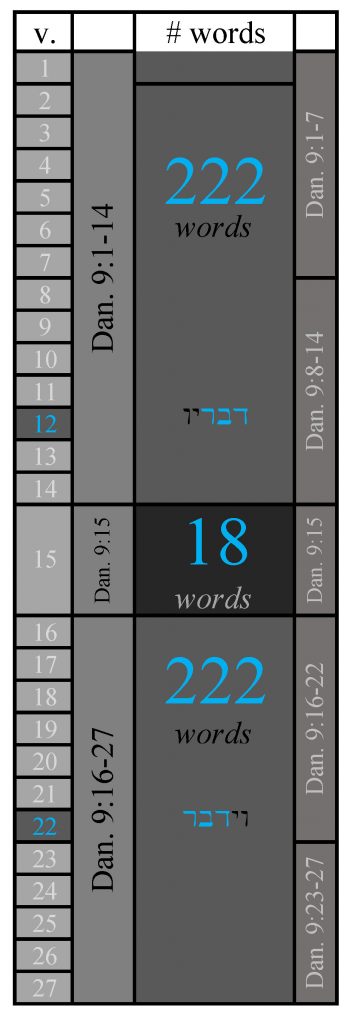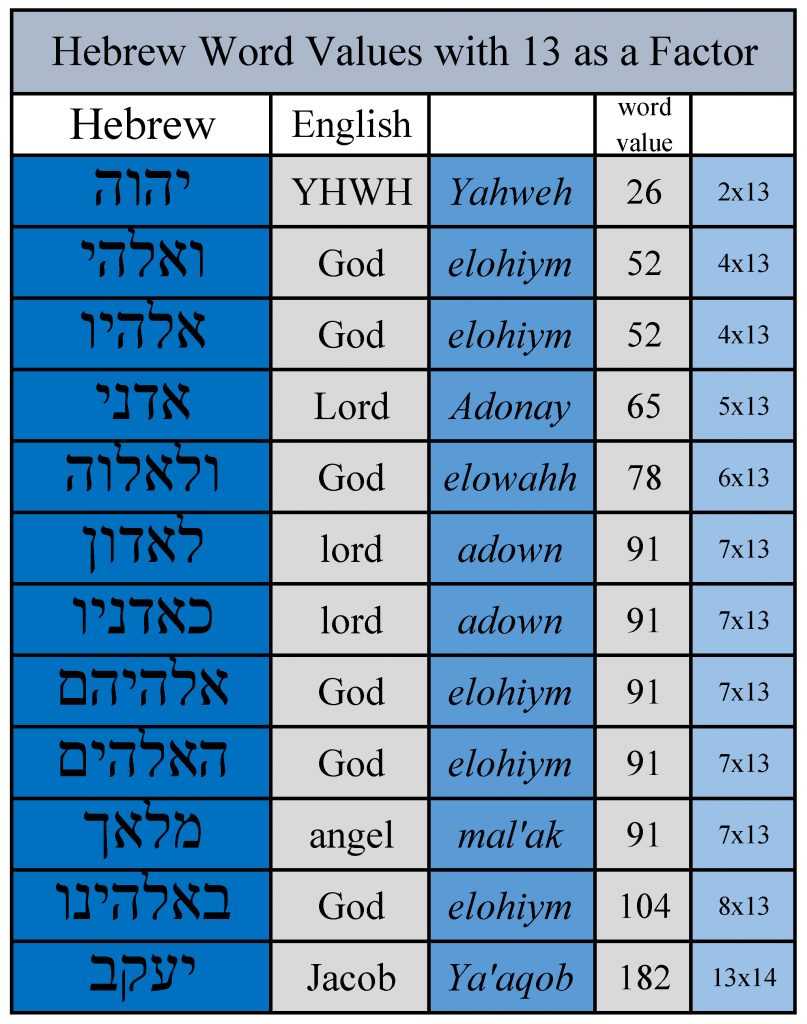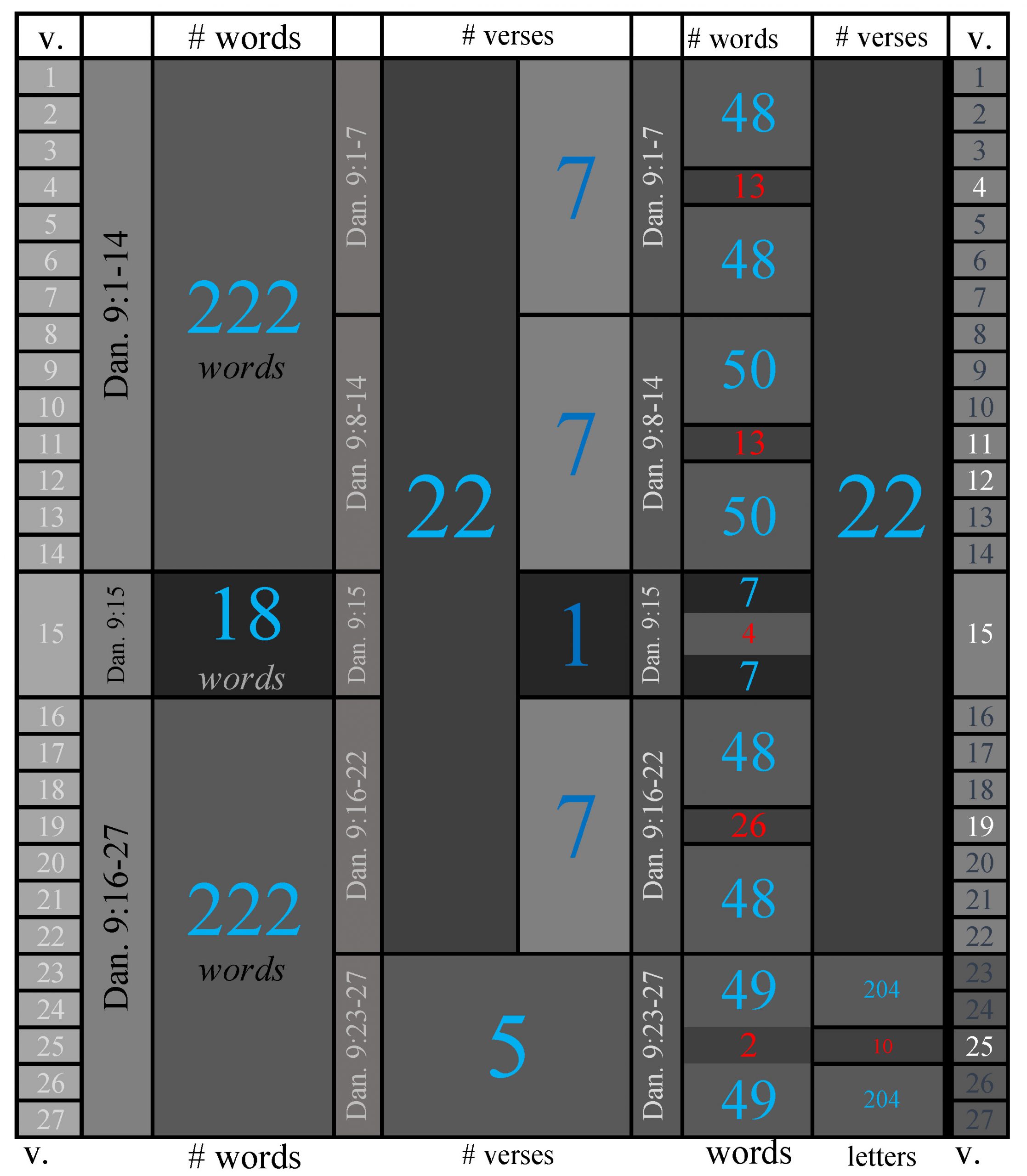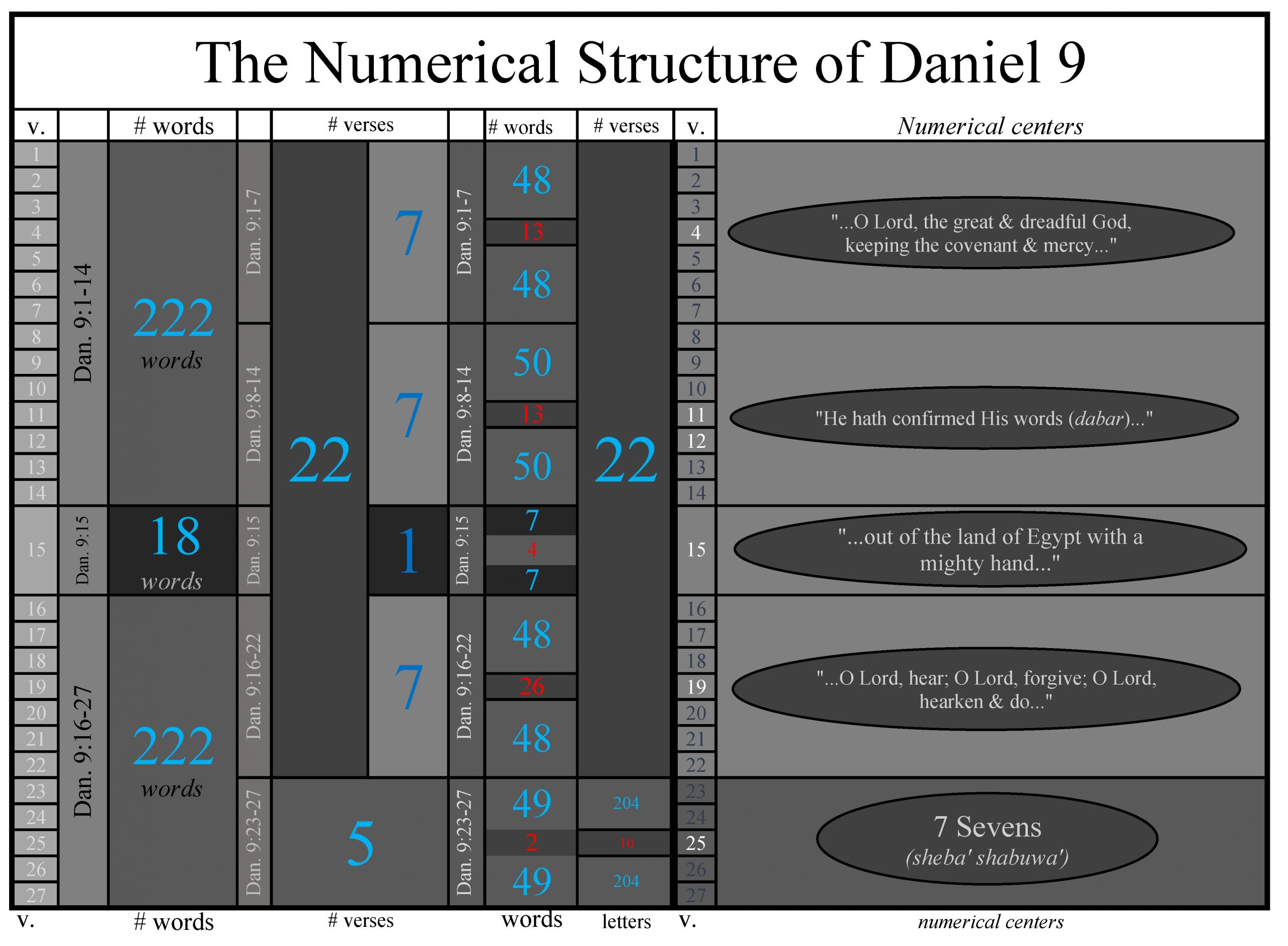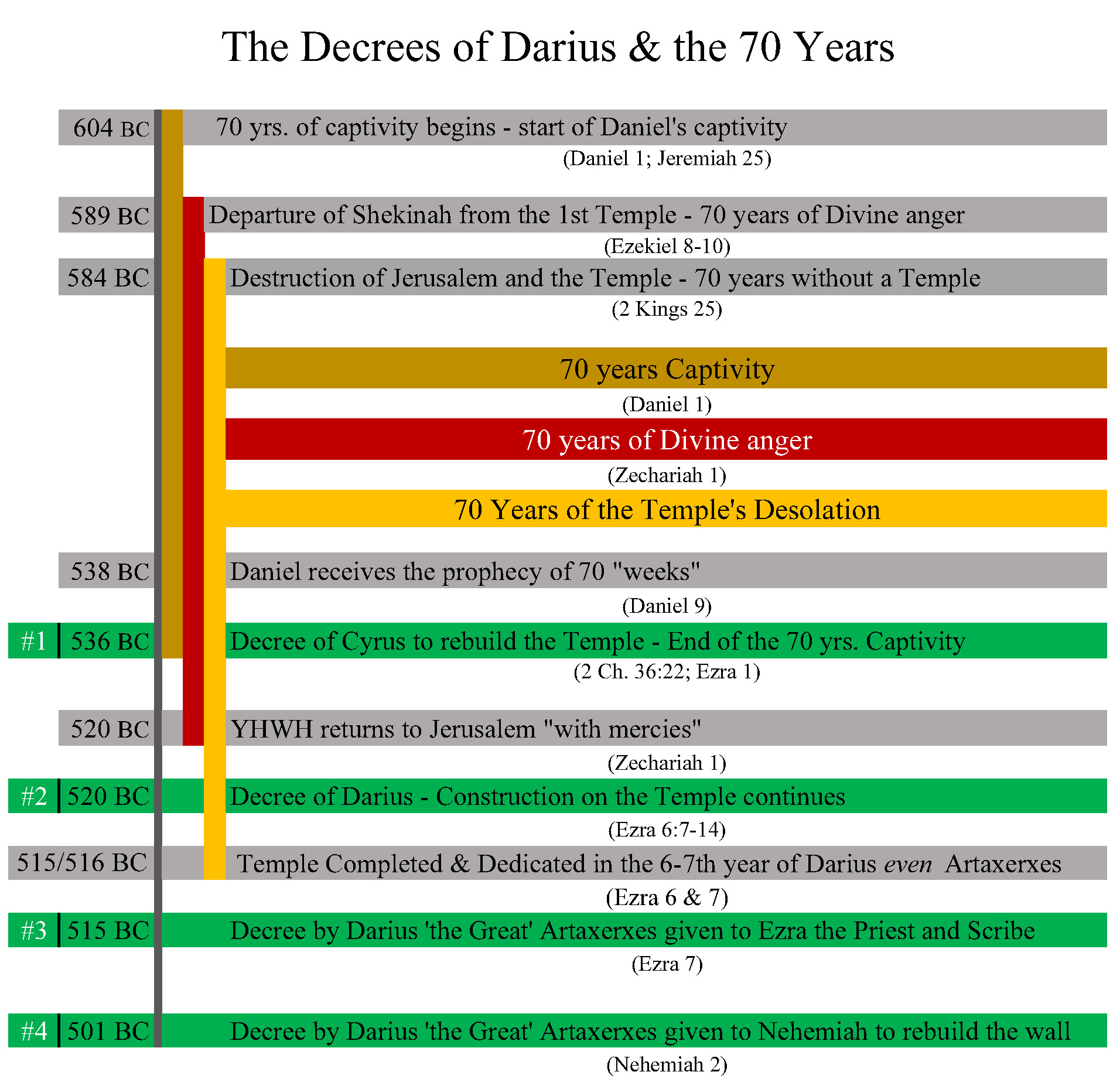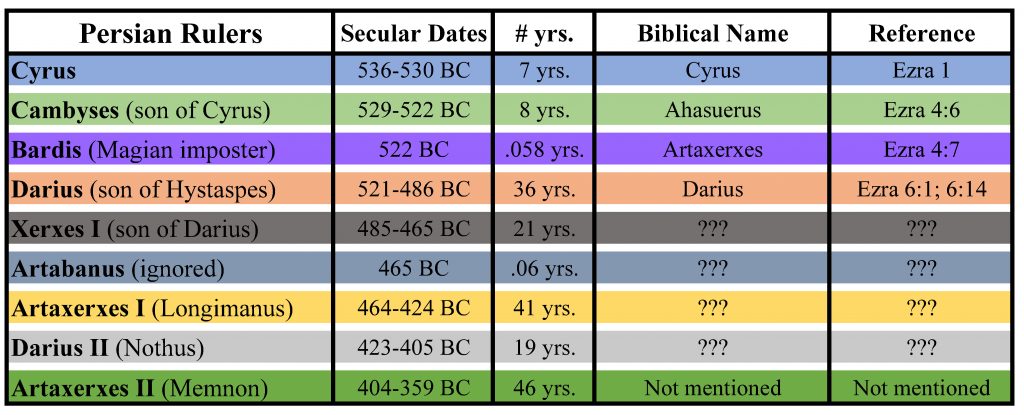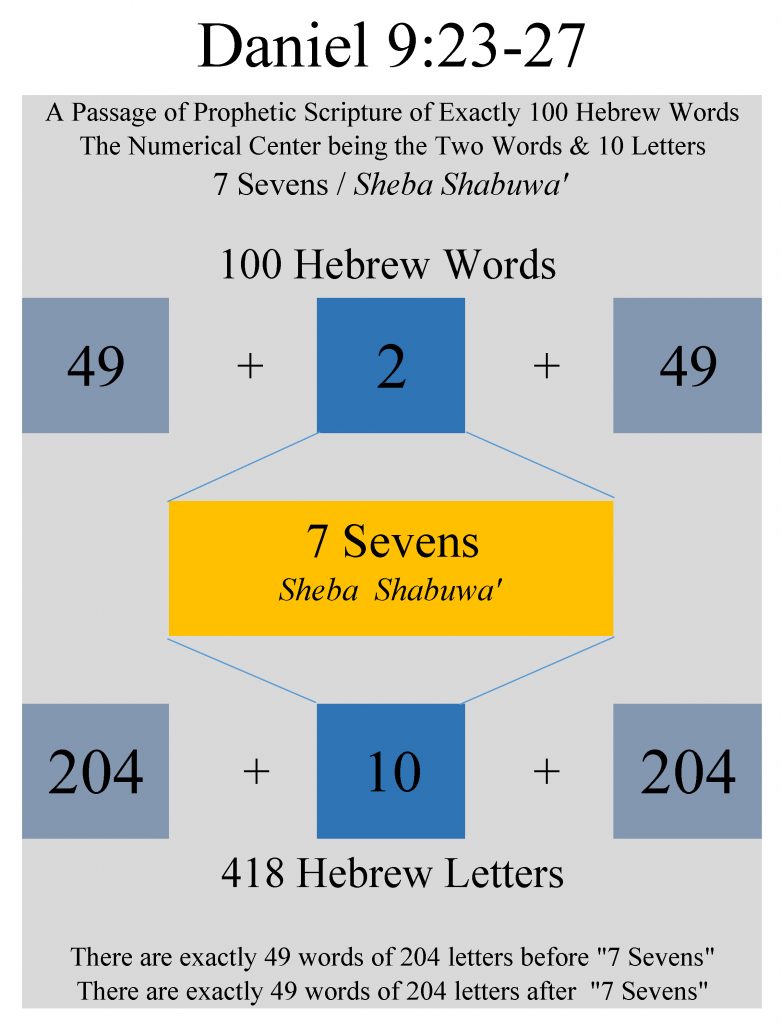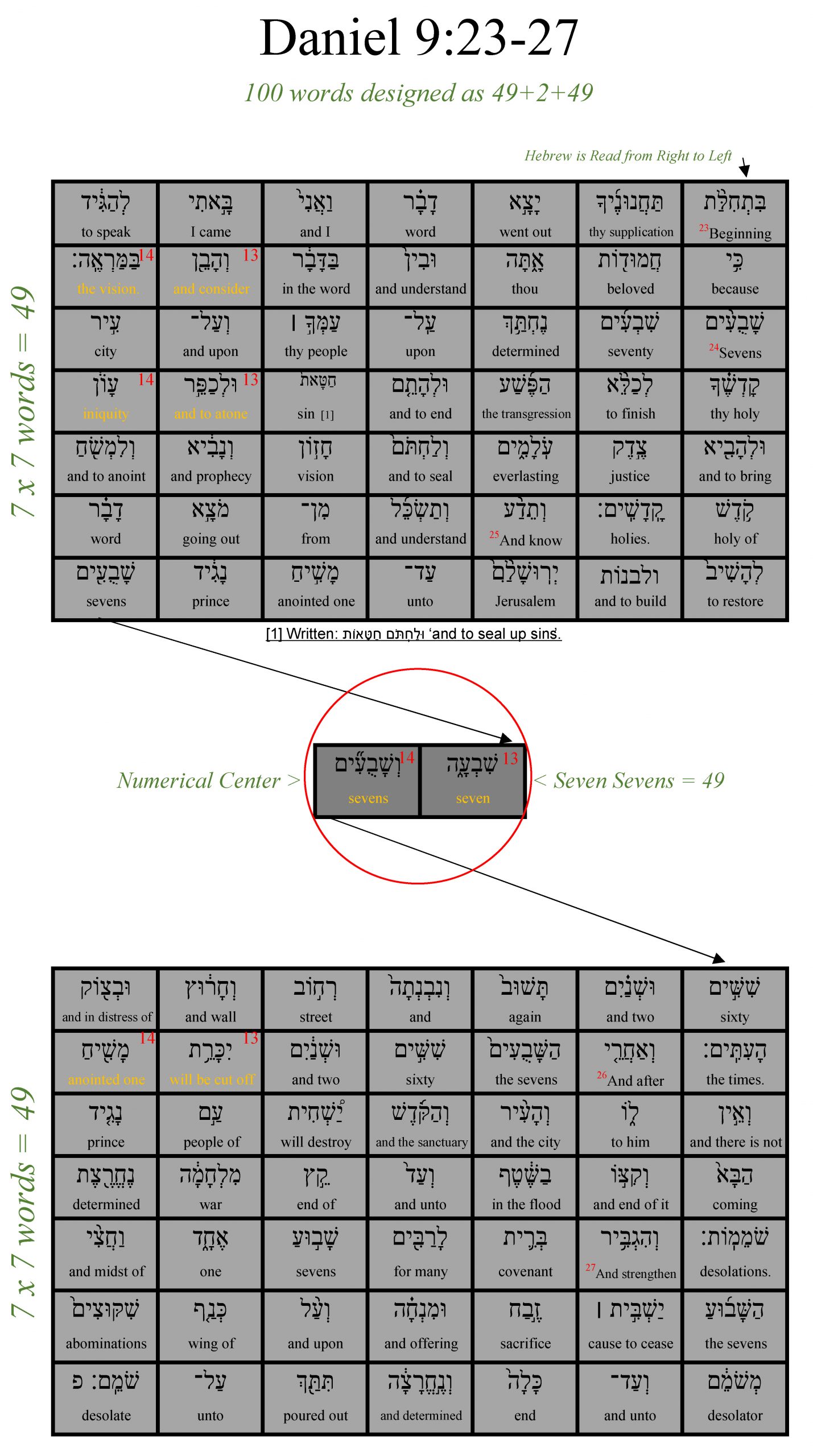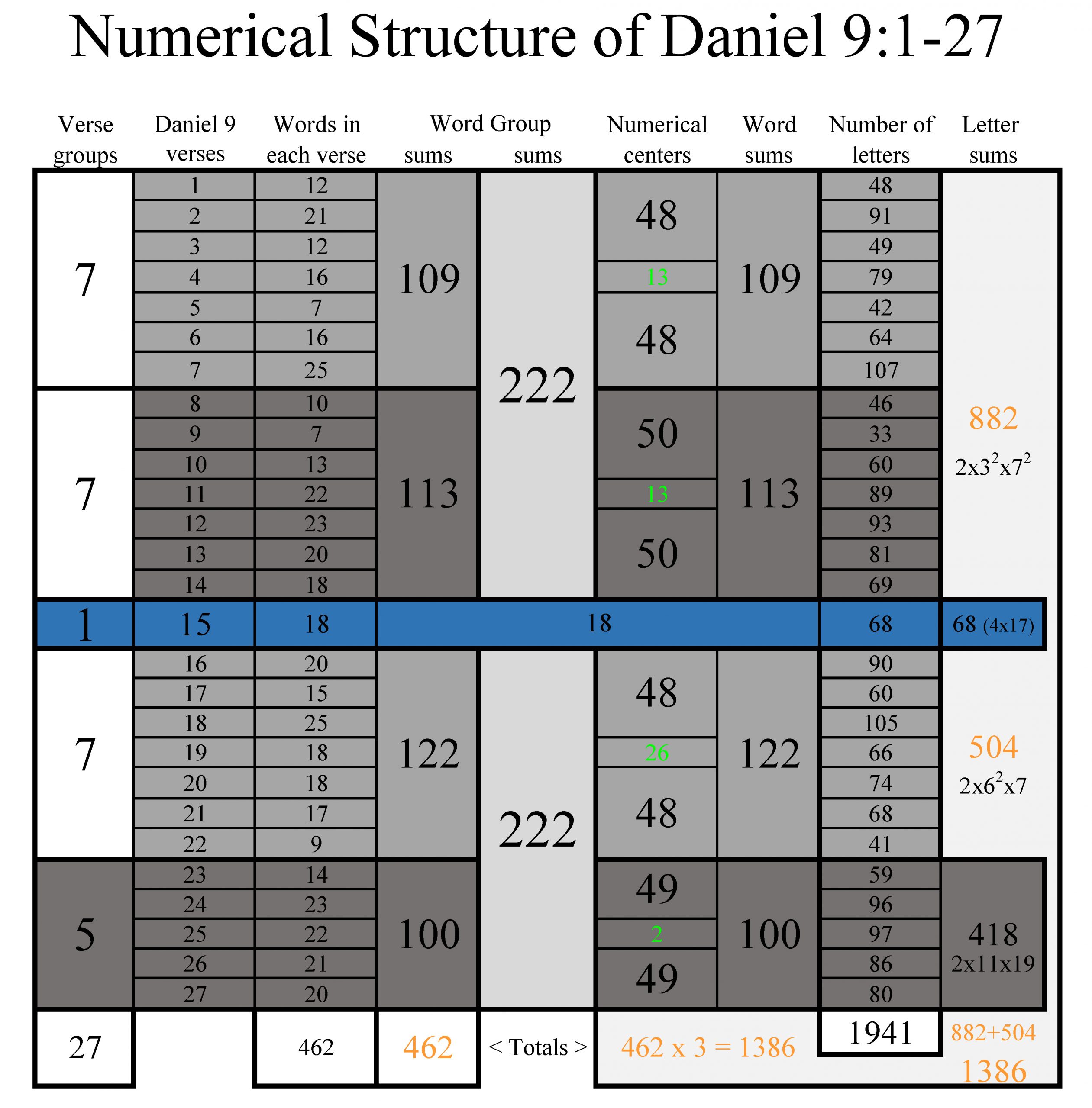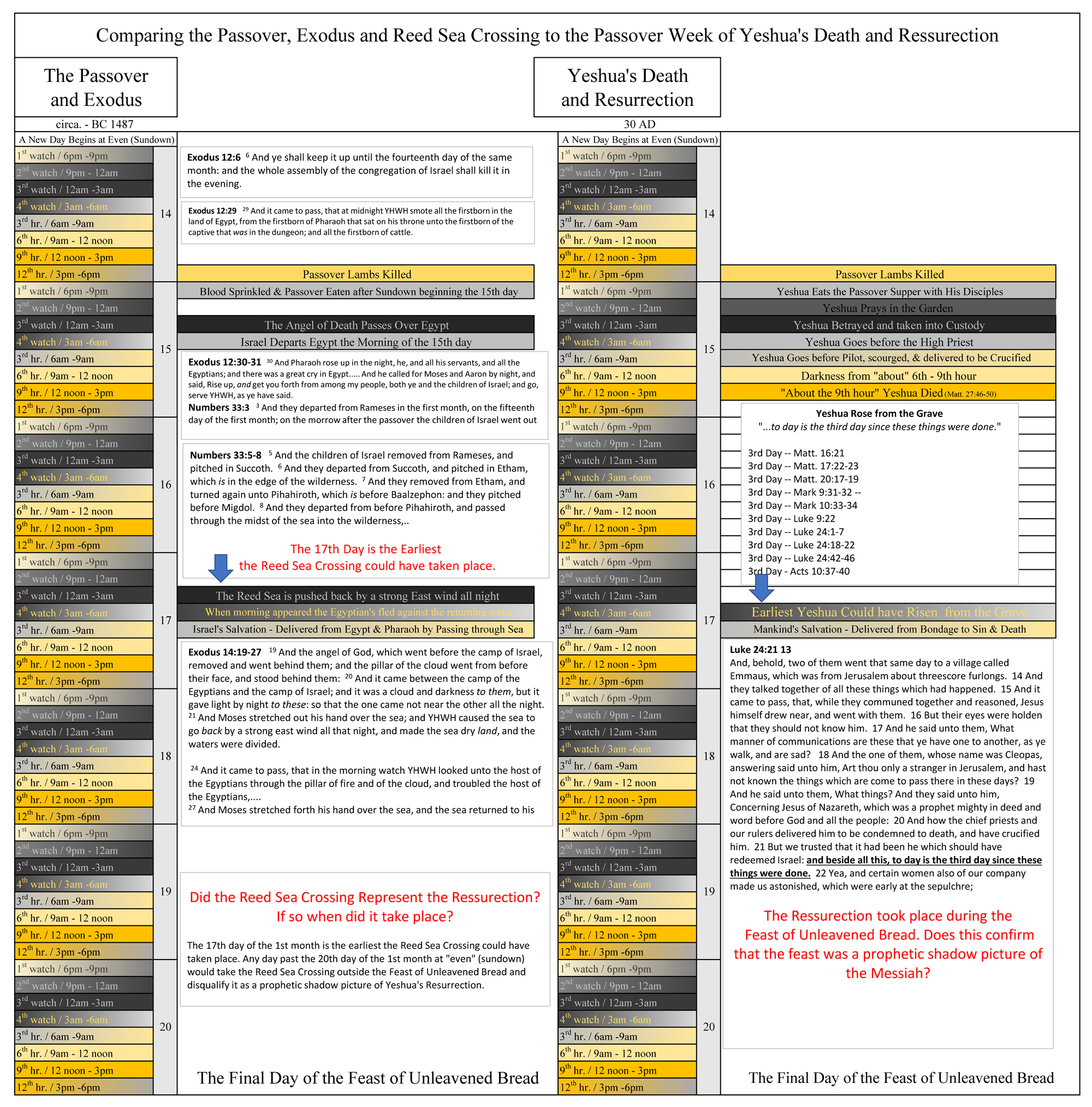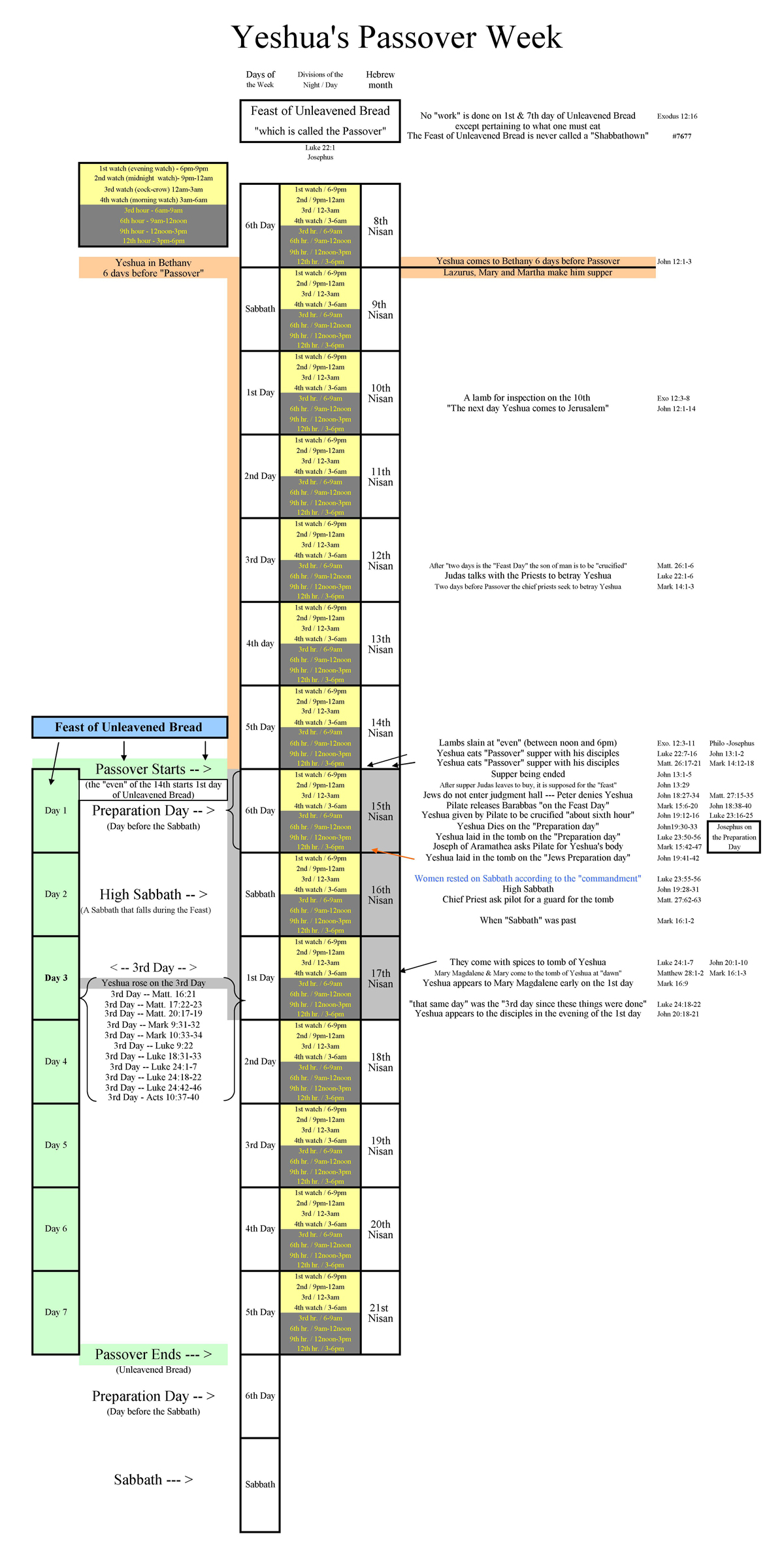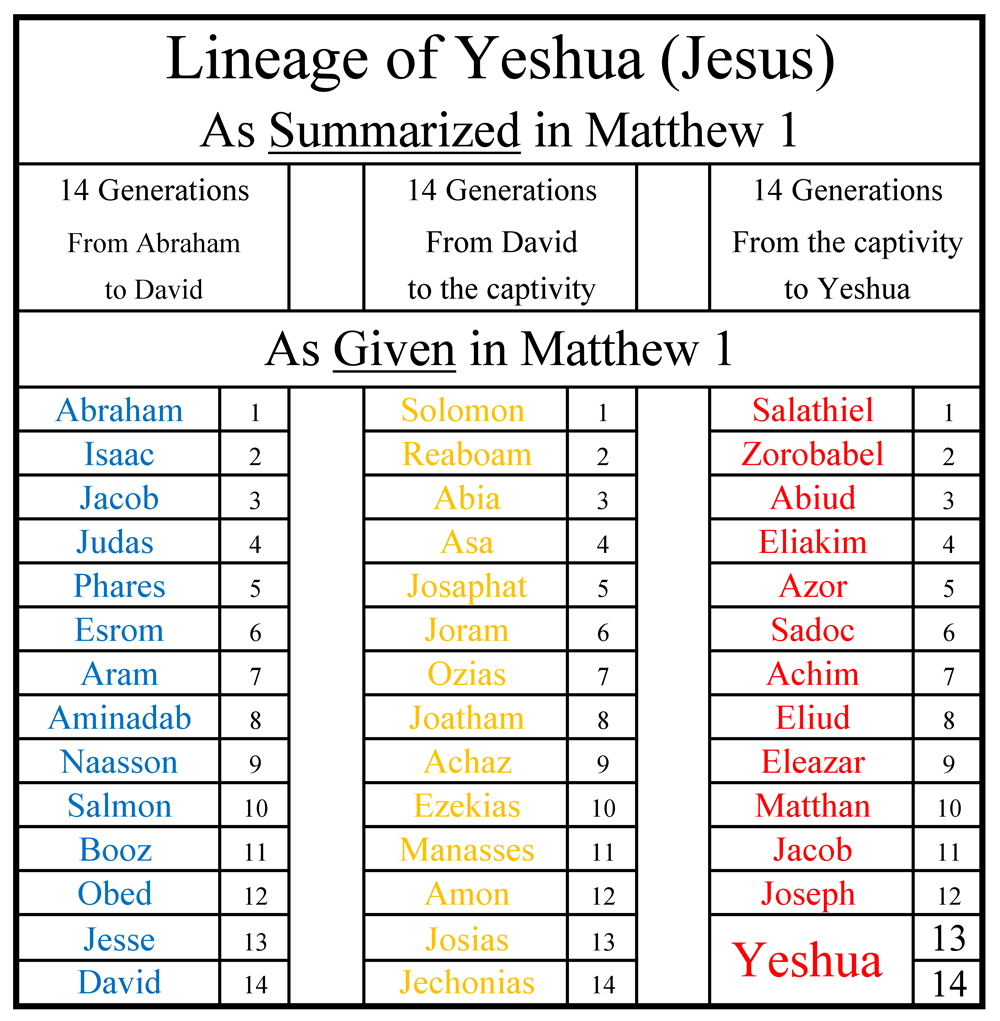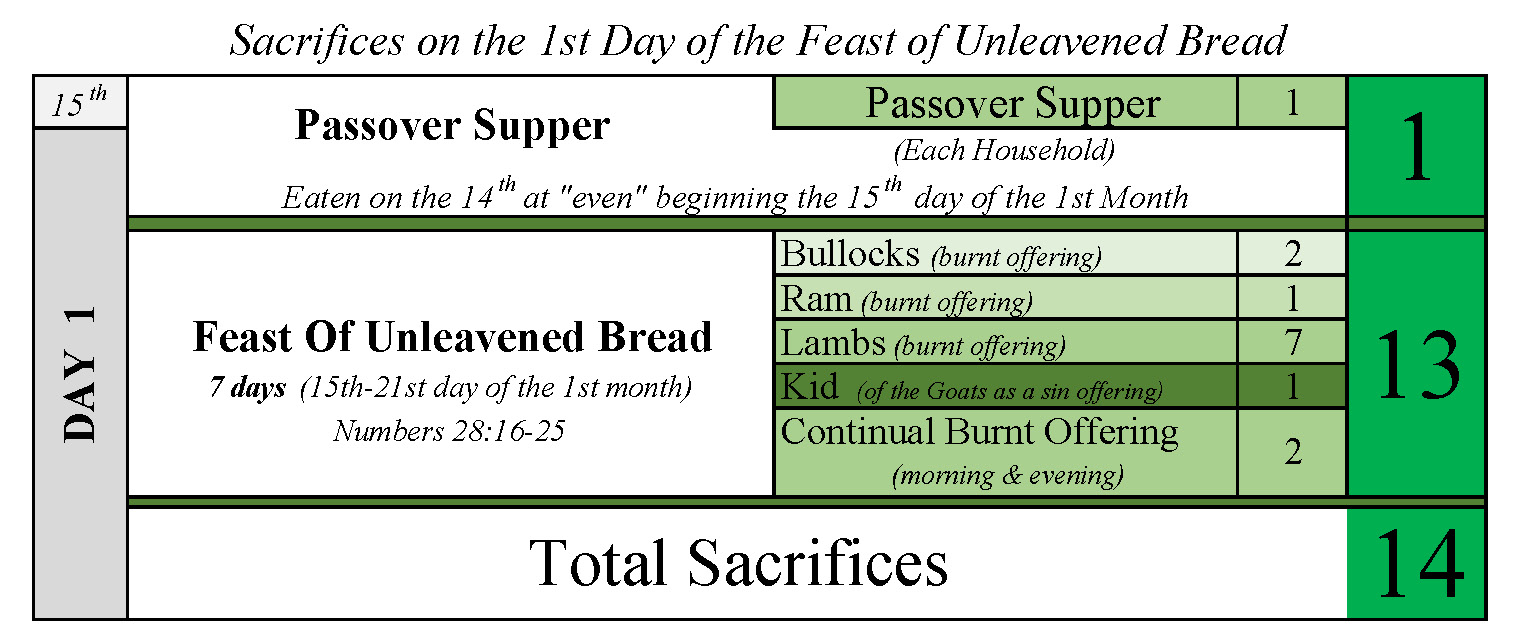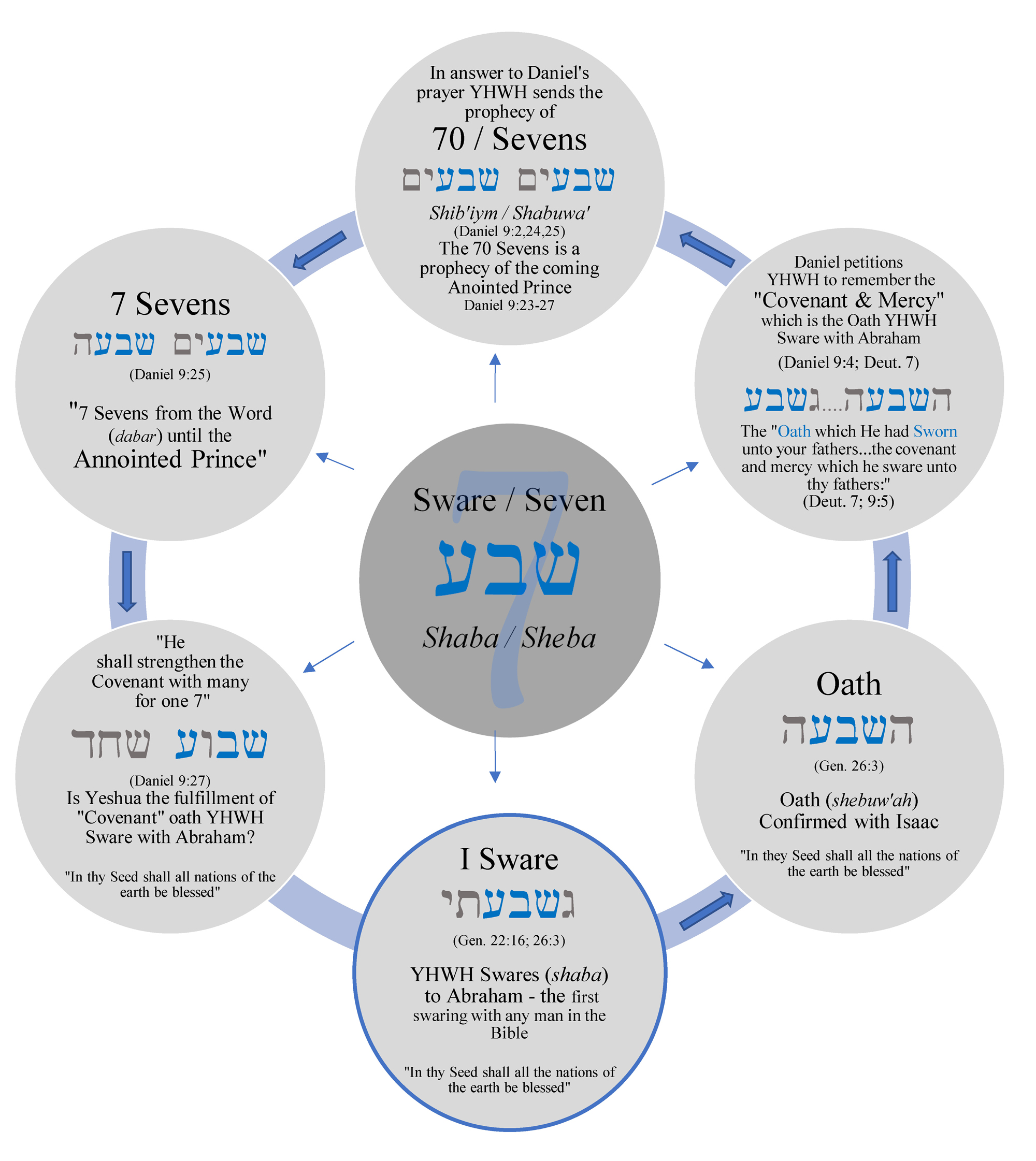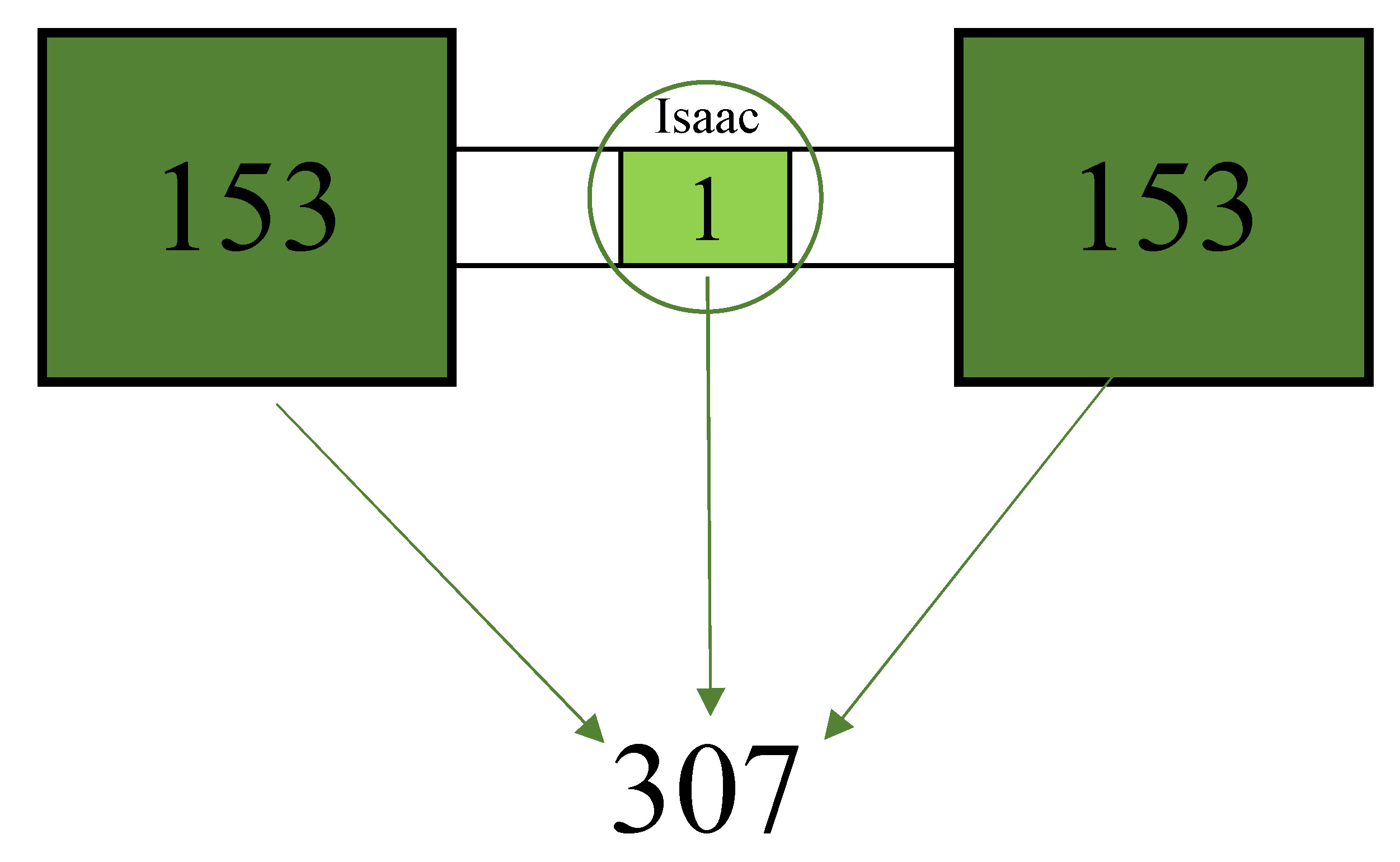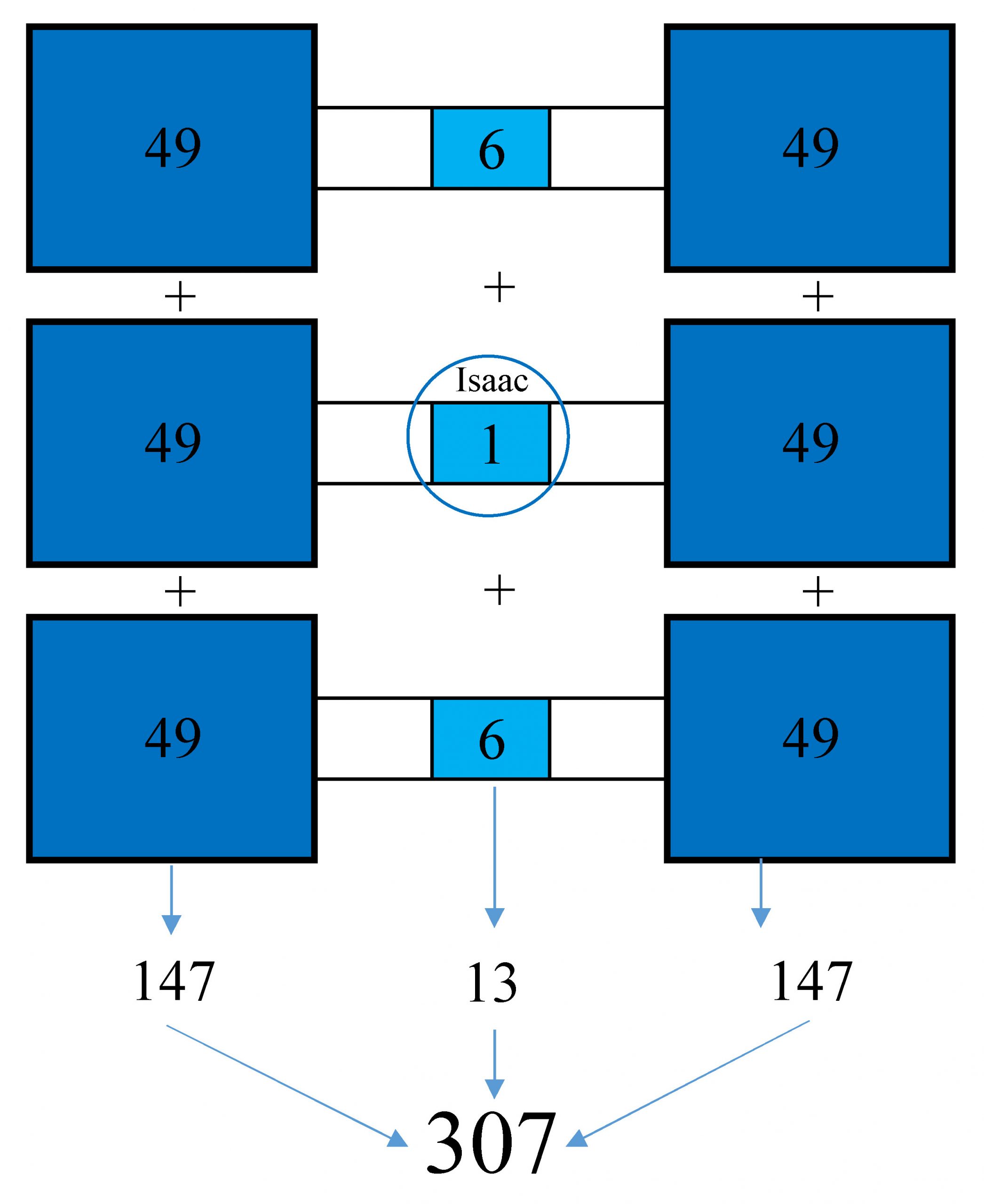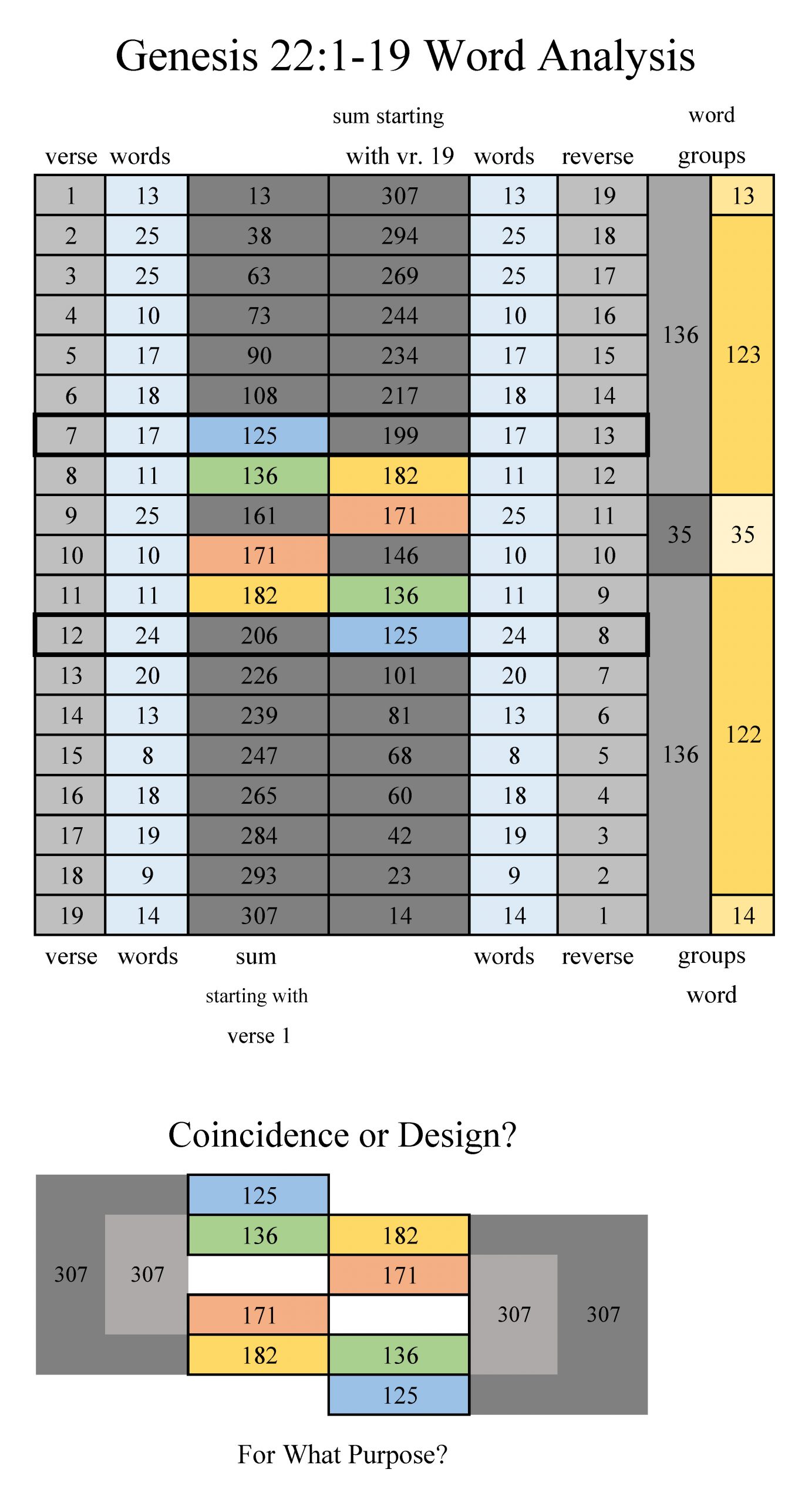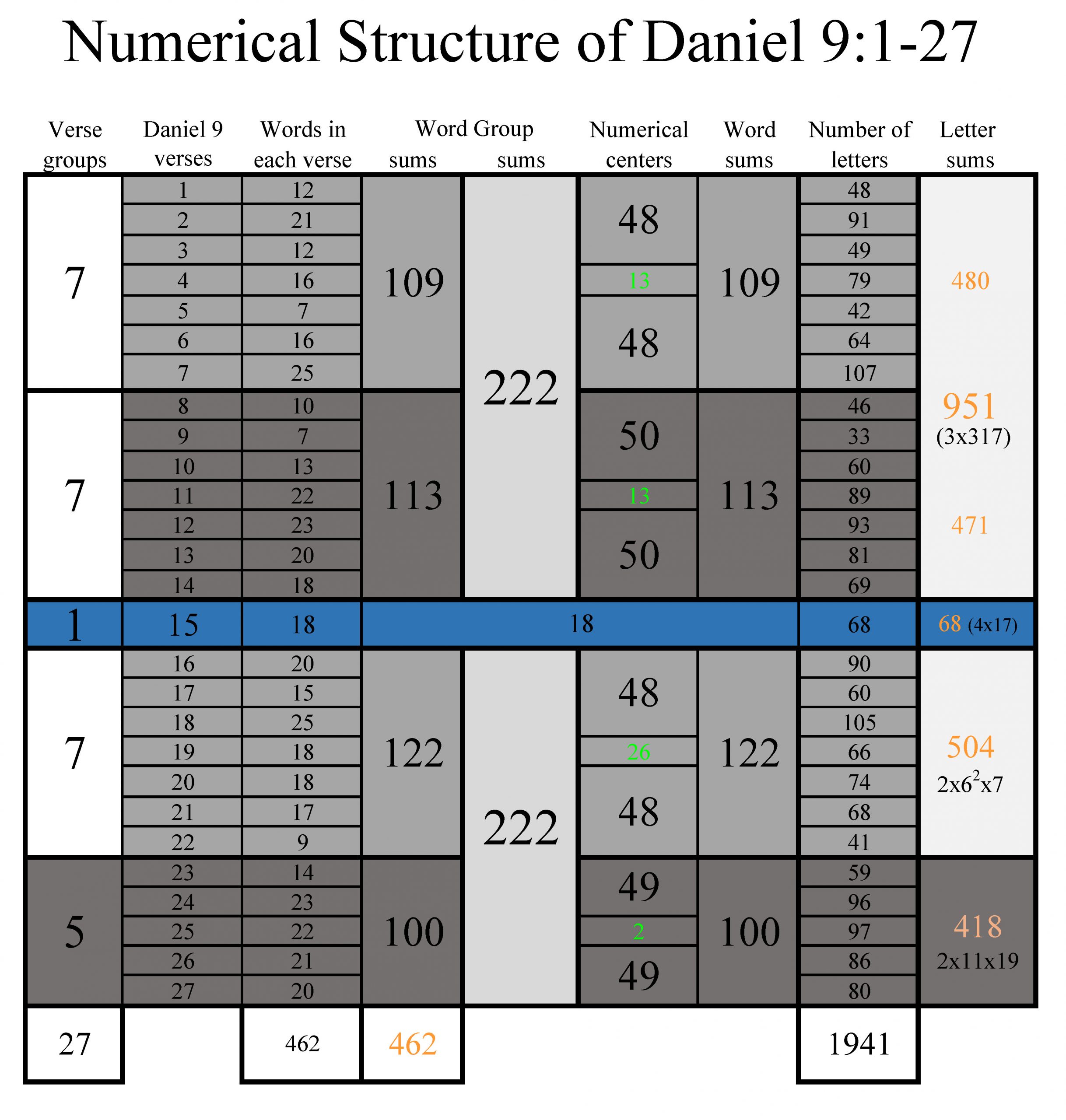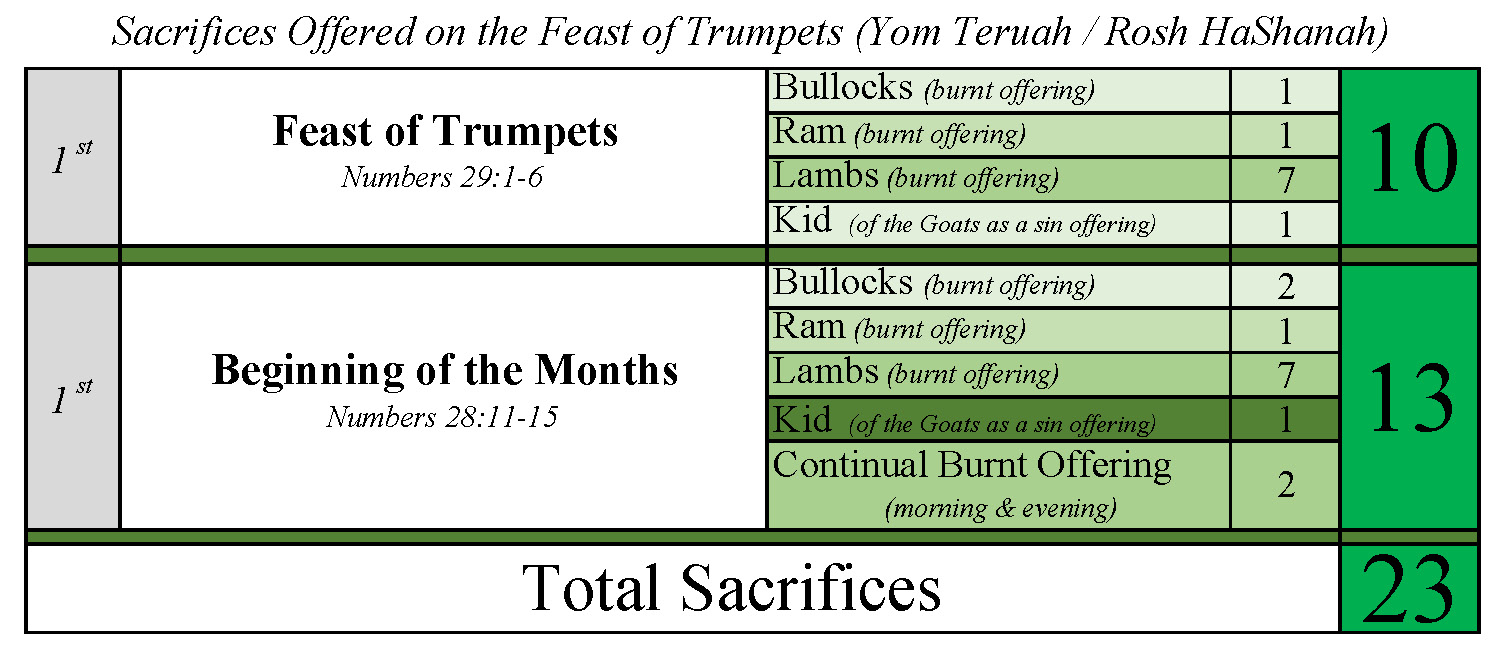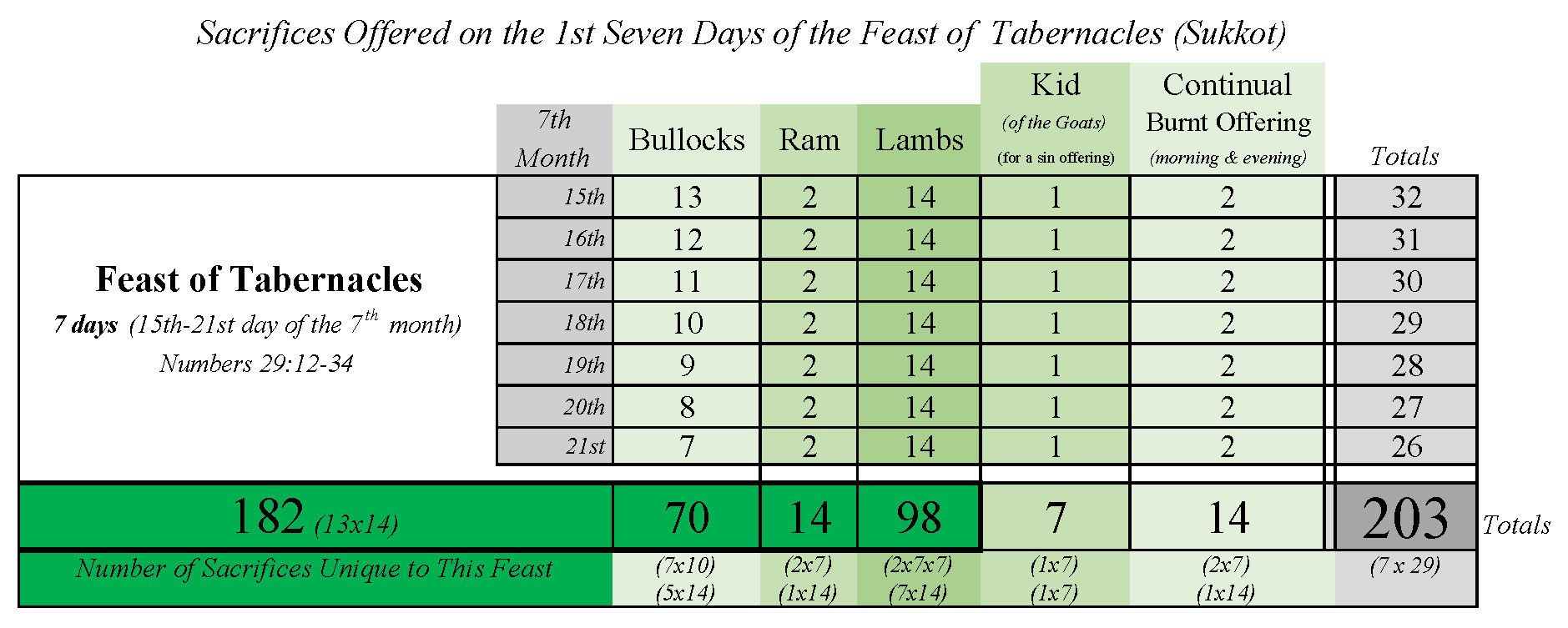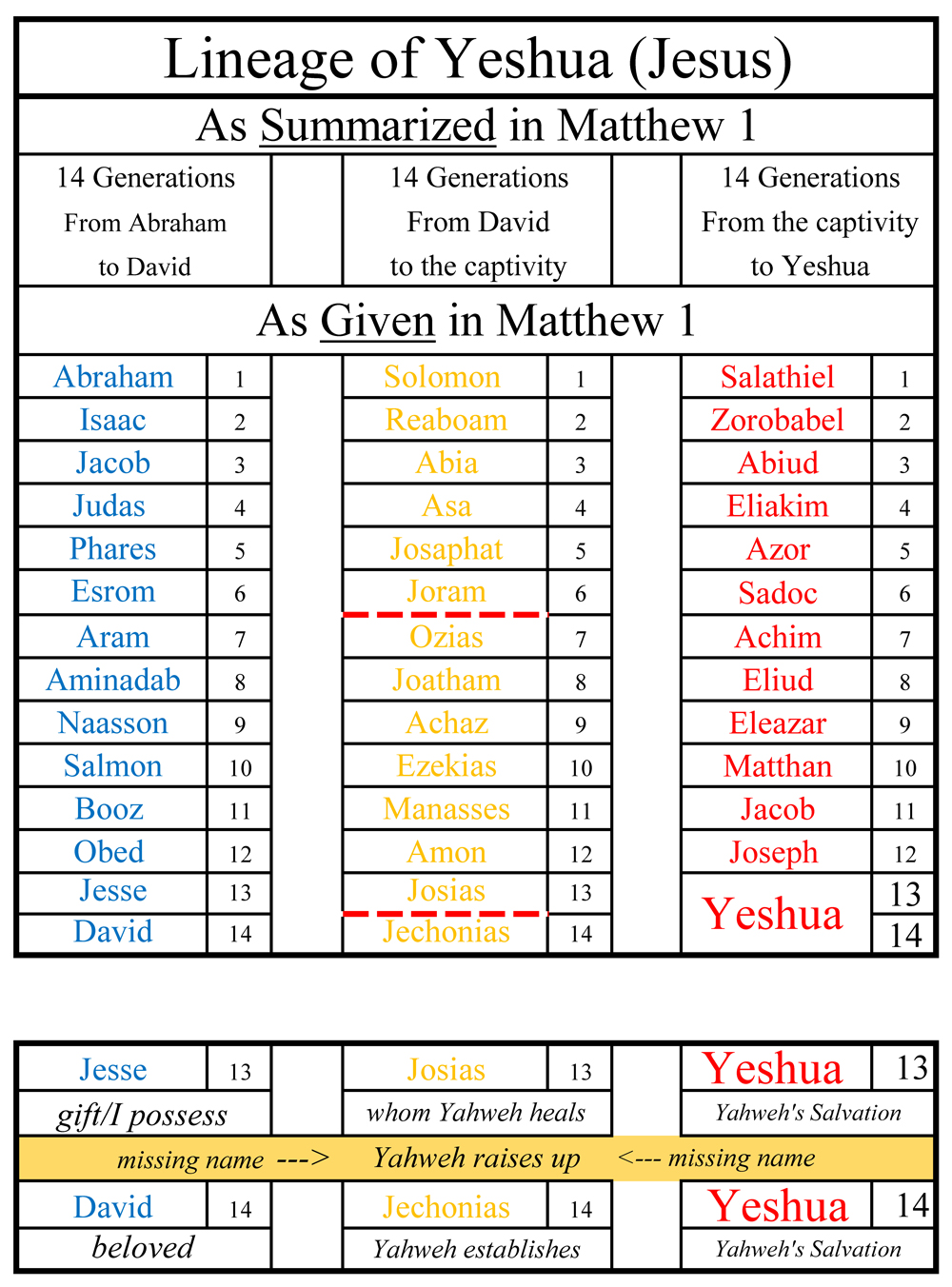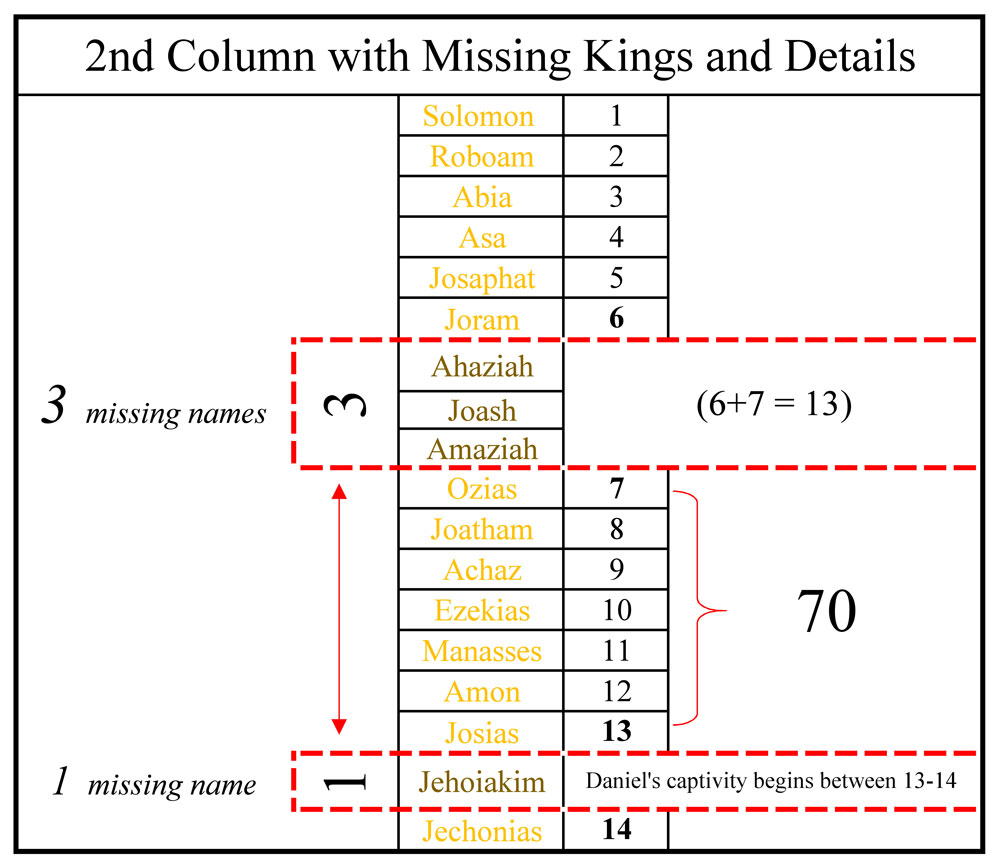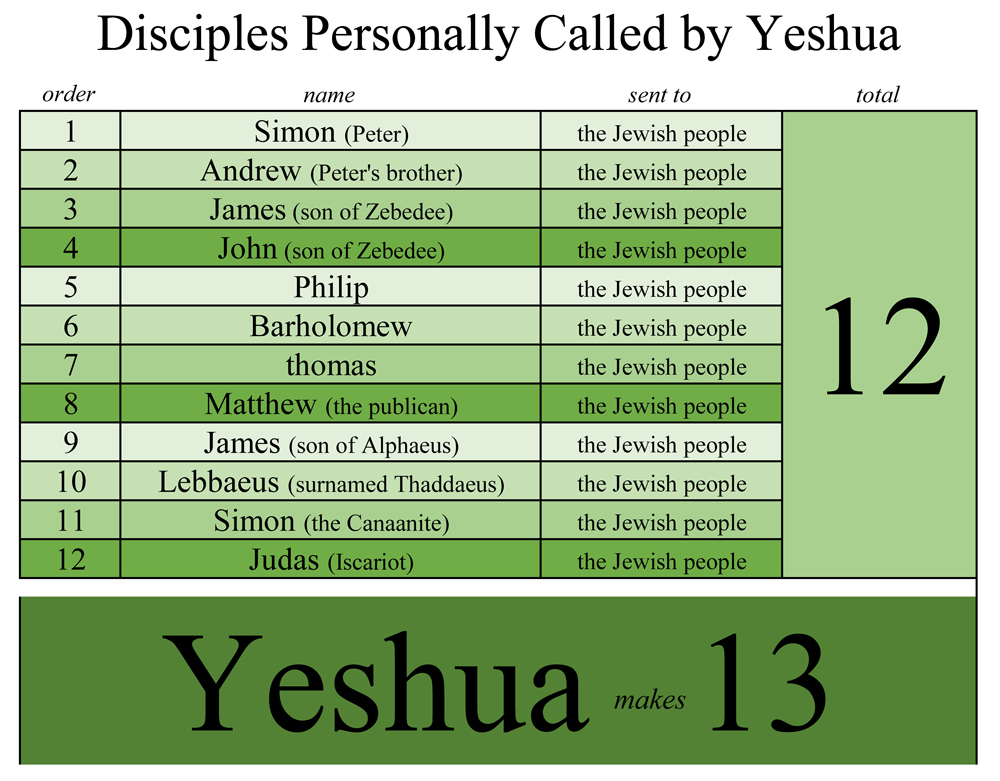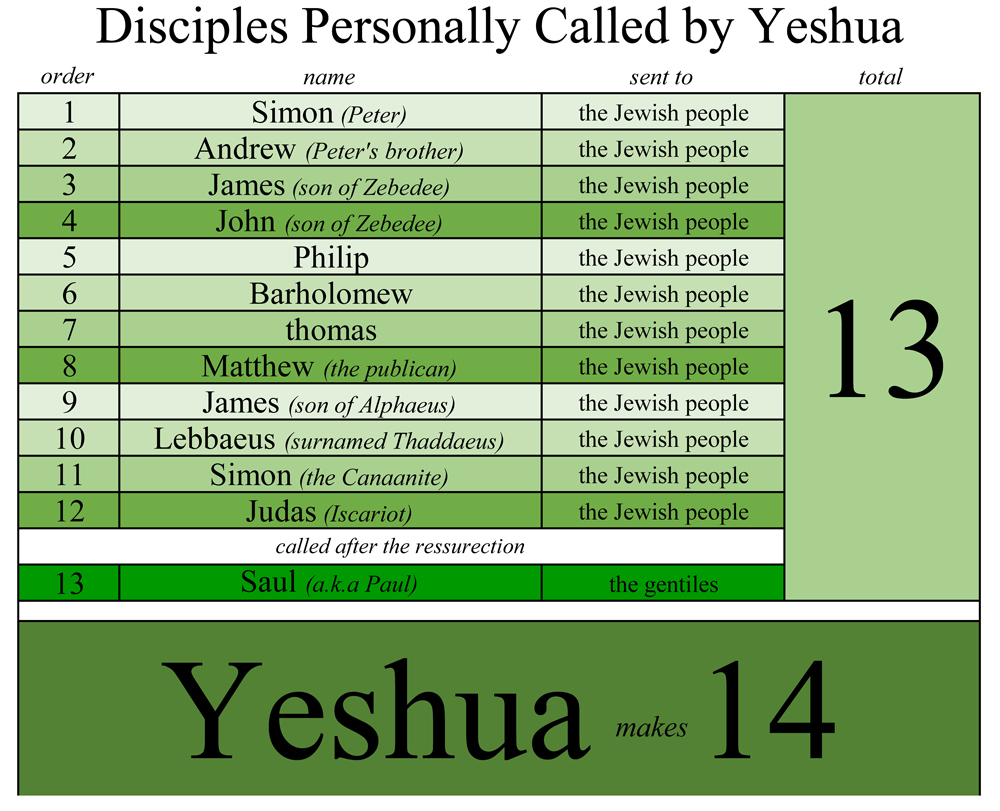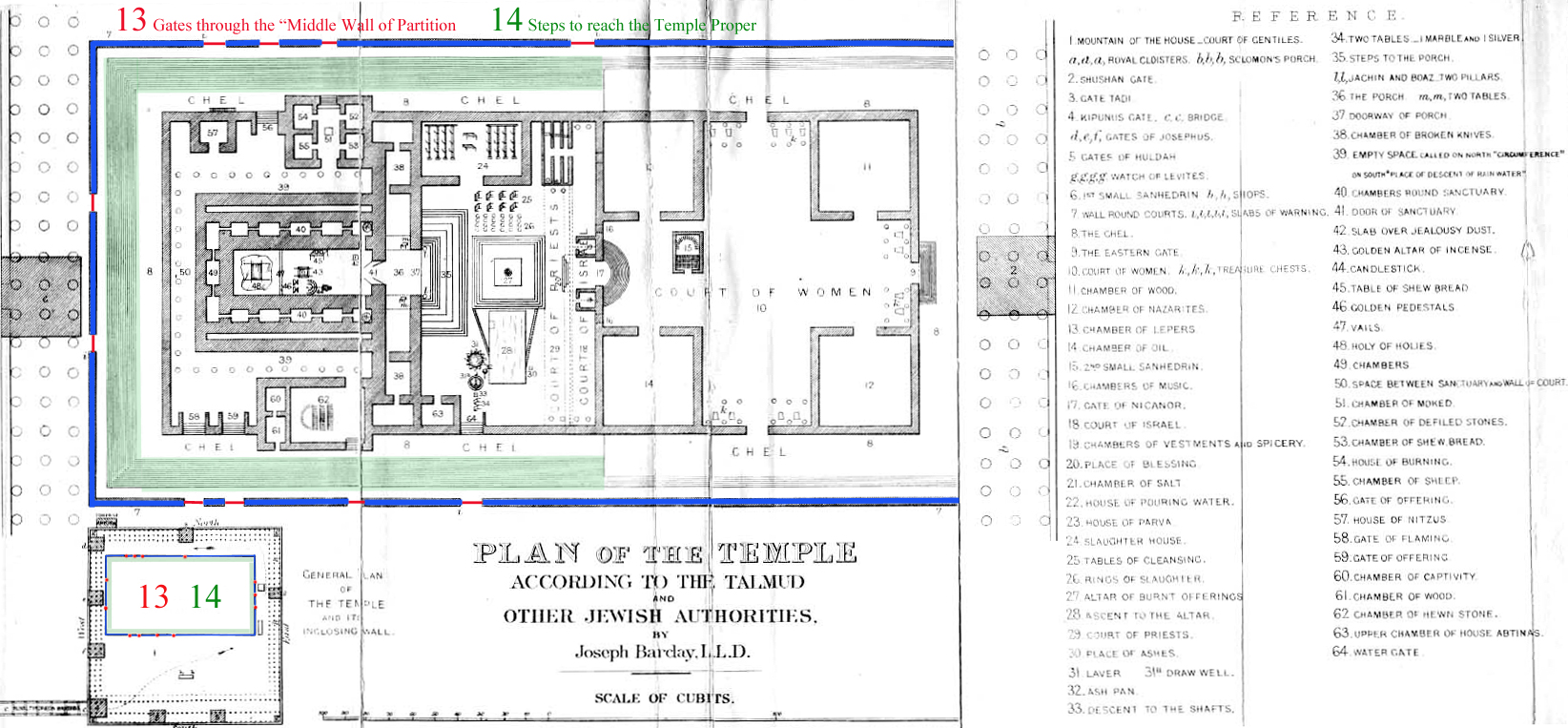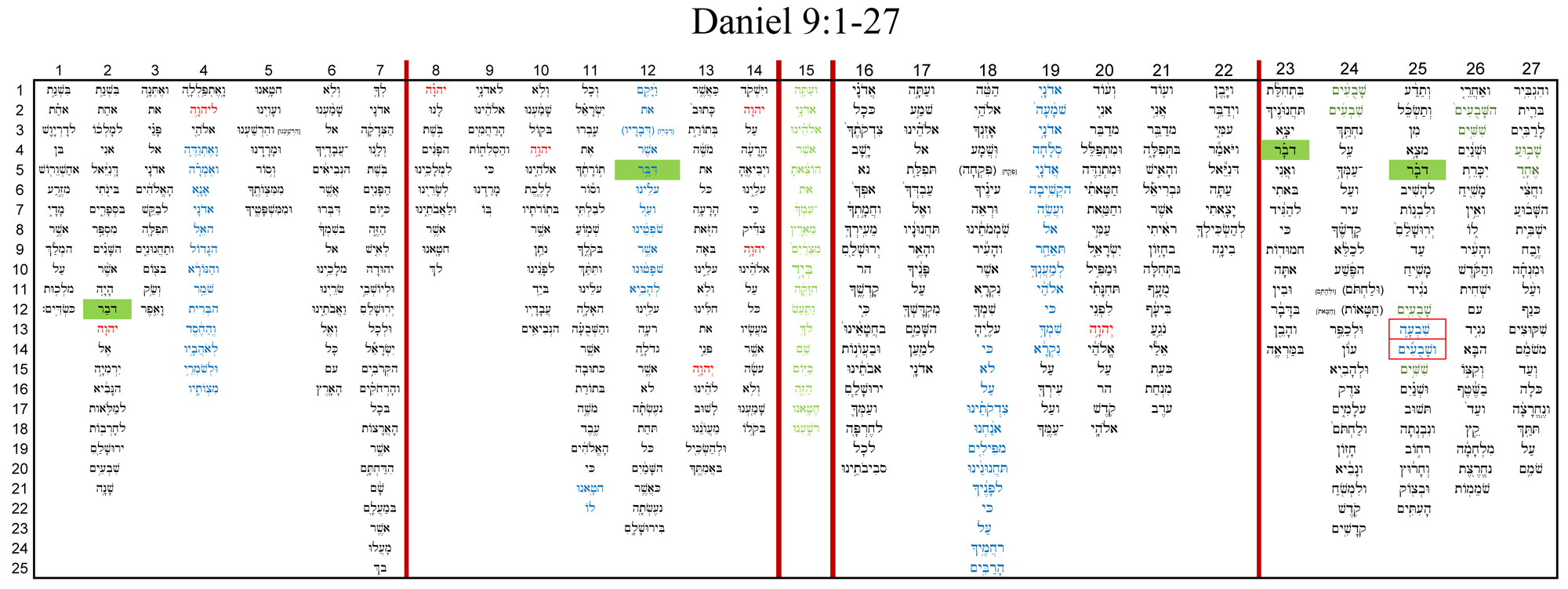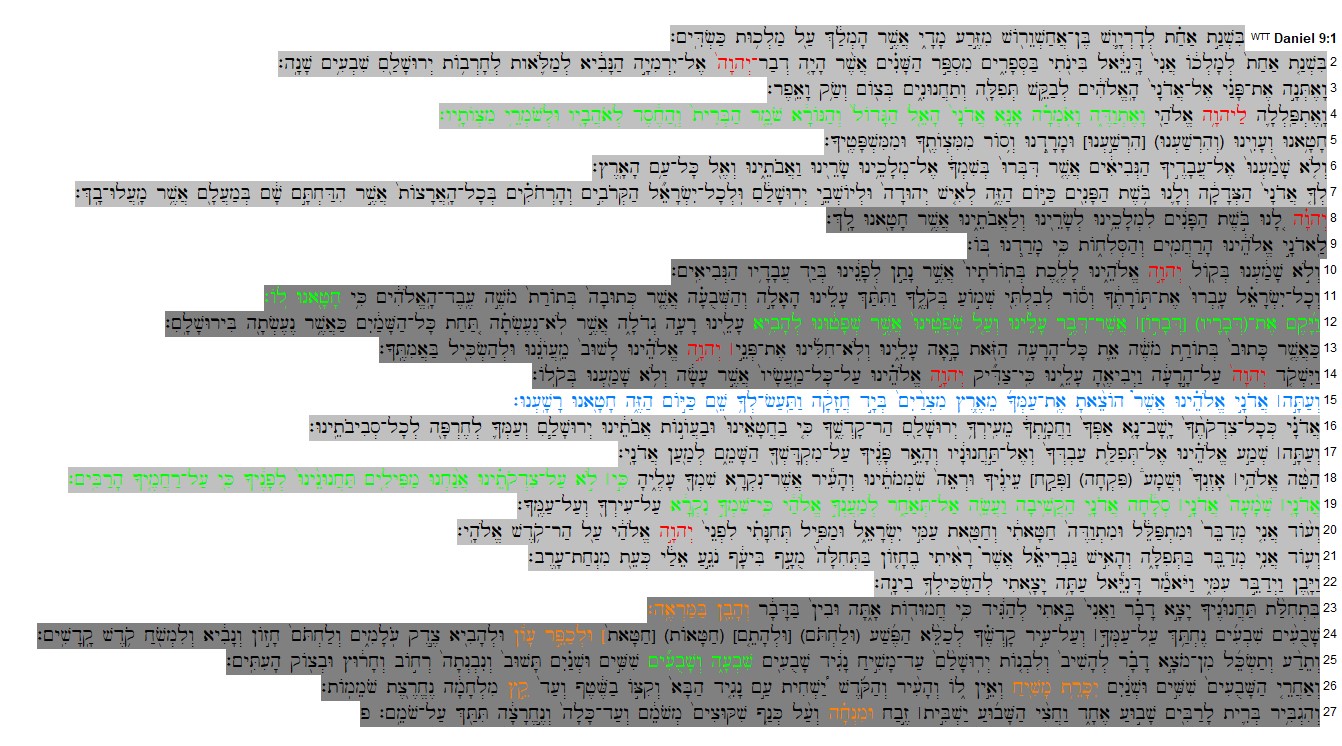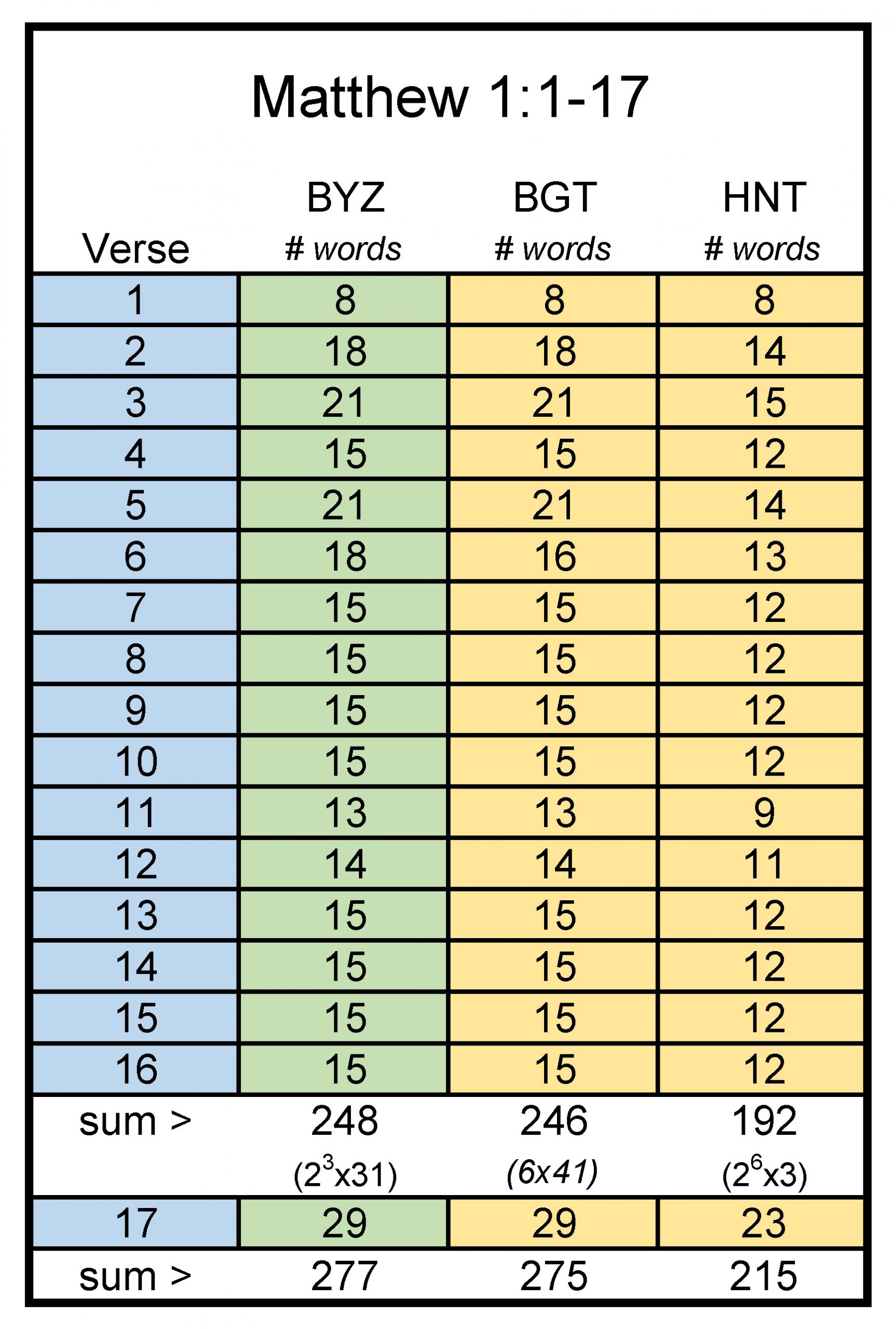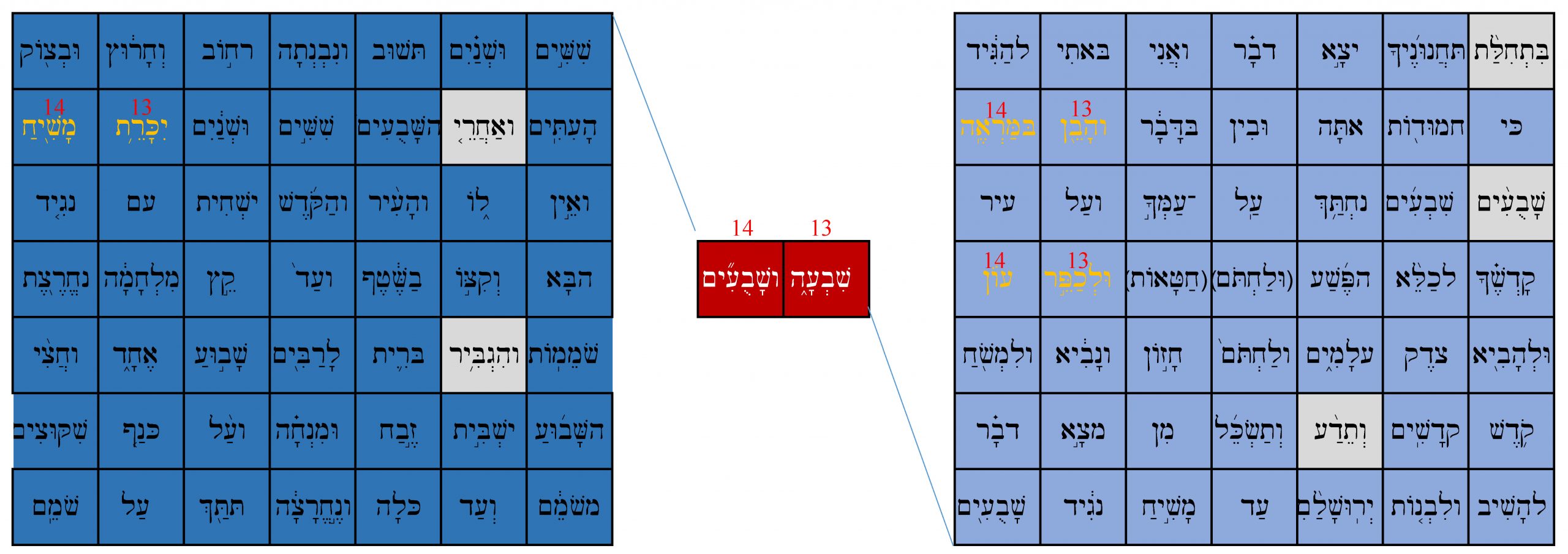My Books and Novels are Free
For those interested all of my books and novels are free to download on most digital platforms right now. If you’ve been wanting to read the Lazarus Ciphers or one of my other books, head on over to Amazon, Barnes and Noble, Apple or one of the other many digital retailers.
Psalm 92: Hebrew Poetry of Words and Numbers
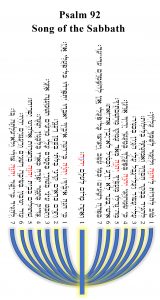 Over two thousand years ago, a Hebrew Psalmist wrote the beautiful words of Psalm 92 in honor of Yahweh and His Sabbath. The title of the psalm is a Song for the Sabbath day. Its first line tells us it is “good to give thanks unto Yahweh and to sing praises unto thy name…”.
Over two thousand years ago, a Hebrew Psalmist wrote the beautiful words of Psalm 92 in honor of Yahweh and His Sabbath. The title of the psalm is a Song for the Sabbath day. Its first line tells us it is “good to give thanks unto Yahweh and to sing praises unto thy name…”.
This psalm is a song of praise, gladness, and faith in Yahweh. Beautiful, to be sure, but there is more to this psalm than meets the casual observer’s eye on first reading.
The psalmist took this psalm and organized it beyond just its words and their meaning. Hidden below the Hebrew poetic lines is a numerical structure that emphasizes the author’s theme and lifts the words into a different realm of praise and honor.
As noted in its title, Psalm 92 is a Song for the Sabbath day. The Sabbath, in Biblical context, is the 7th day, and as such, the number seven has a literal and symbolic link to this psalm. To emphasize this connection, the psalmist penned seven occurrences of the name of Yahweh.
As scholars like Casper Labuschange and others have noted, some passages of Scripture, especially the Psalms, are written in Menorah patterns, with the central verse often of significance. In this psalm, that pattern takes the form of a 7+1+7 verse structure. Again the number seven is prominent.
The structure of the psalm is further enhanced by the central use of the name Yahweh in verse 8. There are three occurrences of His name in the first seven verses and three occurrences in the last seven verses (3+1+3=7).
Beyond the verse structure and use of Yahweh’s name in the psalm, we also see a design in the word and letter counts of the passage. The first seven verses are exactly 52 words (2×26), and the last seven verses also have 52 words. This again is another way of honoring the “name” of Yahweh because the Hebrew letter value of Yahweh’s name is 26.
Scholars who explore the logotechnical aspects of the Hebrew text described how some of the authors of the Old Testament used word or letter count, verse structure, and name usage to seal or mark passages of the Old Testament with a sort of divine stamp. The psalmist here in Psalm 92 does so in a most elegant manner.
The following chart shows the numerical arrangement of the verse, word, and letter structure of the passage:
Finally, it is the letter structure by which the psalmist leaves no doubt about the focus of this psalm. There are a total of 443 letters in the 108 words of this psalm. This means that a single letter, the 222nd, is the exact numerical center of this psalm. This focal point, or pin if you will, is the letter “waw” in the name of Yahweh in verse 8. There are 221 words before this letter and 221 after (221+1+221).
It is worth noting here that the letter “waw” has the meaning of hook, peg, nail, or pin. In other words, one might look at this letter’s numerical placement as the means by which the psalmist connected the structure of the psalm and focused its numerical and literary artistry on the holy name of Yahweh.
For more on the numerical structure of Psalm 92, I recommend Casper Laubuschanges logotechnical analysis of the psalm. This article is based upon his original work here: http://www.labuschagne.nl/ps092.pdf
The Lazarus Ciphers
 It has been over two years since I’ve last shared with you here at my blog, and I’ve missed the privilege. I have been busy with family, life, work, and writing. Time has passed in a blur.
It has been over two years since I’ve last shared with you here at my blog, and I’ve missed the privilege. I have been busy with family, life, work, and writing. Time has passed in a blur.
I haven’t posted anything here because I’ve been working on my most ambitious writing project to date. It’s a new novel I’ve called The Lazarus Ciphers.
Almost three years ago I woke up one morning with the idea for this novel in my head. It took me another 7 months to figure out the 7 ciphers and riddles around which this novel is built and then nearly two years now, to write, edit and publish the project. I am thrilled and relieved to finally be able to share this story with you.
This is a story about faith, failure, and the redeeming power of God’s love. In writing this novel, one of the questions continually before my mind is, what would I be willing to do if I had the opportunity to reach from the grave, and one last time share the good news of Yahweh’s Salvation – his Yeshua, with a lost family member, a friend, or a stranger.
The Lazarus Ciphers is my answer to that question. My hope is that this story inspires you with the power of God’s love, and the hope and security the faith in that love brings us all.
Warm regards to you all,
William
From the Back Cover:
John Plummer refused to abandon hope for his children, even in death. He left behind…
A briefcase full of Secrets
An evil his two children may not escape
Seven Ciphered riddles that must be solved
An inheritance that may not be attained
A book that holds the Key
In the darkest hour of their lives, Cadence and Timbre Plummer find an unlikely path forward in the expectation of an inheritance their father may have placed out of their reach. Their troubled pasts stalking them, the brother and sister race to break the biblical ciphers that stand between them and their legacy. As the deadline to solve the ciphers approaches, they discover a staggering truth about themselves, their father, and his seven Lazarus Ciphers.
When all else failed, faith found a way.
To read a free preview of the novel:
Direct Preview Link: The Lazrus Ciphers
Direct Link: The Lazarus Cipher
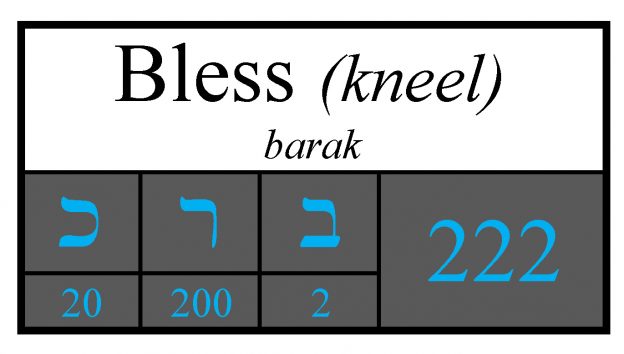
An Oath, the Book of Words, & Daniel 9
Authors Note:
This article will explore the profound influence the book of Deuteronomy and the story of Abraham & Isaac in Genesis 22 had on the numerical and literary framework of Daniel 9. May you be blessed (barak) by these words (dabar).
A Book of Words
In most English versions of the Bible, the 5th book is titled Deuteronomy. The etymology of this word comes from the Greek deuteros and nomos – literally meaning the Second Law. In Hebrew, the 5th book of the Bible is titled, Devarim (דברים) and comes from the Hebrew devar (dabar) and means “Words” or “The Words”.
Deuteronomy opens on the 1st day of the 11th month, of the 40th year of Israel’s wandering. Israel is camped in the wilderness on the other side of the Jordan river in preparation for entering the Promised Land. Here at the end of the 40 years in the wilderness, with the Promised Land in sight, Moses for the last time, speaks to the children of Israel.
Deuteronomy 1:3
And it came to pass in the fortieth year, in the eleventh month, on the first day of the month, that Moses spake (דבר dabar) unto the children of Israel, according unto all that YHWH had given him in commandment unto them;
An Oath of Sevens
In verse 8, just five verses after Moses begins to speak the “words” (dabar) of Yahweh to Israel, he provides them with the legal basis for their claim to the Promised Land. This legal claim, according to the text, originates when Yahweh sware (an oath) with Abraham which was confirmed with Isaac and Jacob.
Deuteronomy 1:8
8 Behold, I have set the land before you: go in and possess the land which YHWH sware [נשבע=shaba] unto your fathers, Abraham, Isaac, and Jacob, to give unto them and to their seed after them.
In Hebrew, the word shaba (sware) implies the making of an oath (shabuw’ah). As we’ll see in the text below, this oath originated in Genesis 22 when Abraham showed exceptional faith by his willingness to sacrifice his son Isaac as Yahweh instructed.
That act, taken in faith, believing that whatever the outcome, he and Isaac would return down off that mountain, was the catalyst for Yahweh’s unilateral declaration – His “shaba” with Abraham. This swearing (shaba) of an oath (shabuw’ah) in Genesis 22 was the first oath Yahweh sware with any man in the Bible. Take special note of Genesis 26:2-4 below, as it confirms that this shaba (swearing) with Abraham was in fact a shabuw’ah (oath).
Genesis 22:12-18
12 And he said, Lay not thine hand upon the lad, neither do thou any thing unto him: for now I know that thou fearest God, seeing thou hast not withheld thy son, thine only son from me. 13 And Abraham lifted up his eyes, and looked, and behold behind him a ram caught in a thicket by his horns: and Abraham went and took the ram, and offered him up for a burnt offering in the stead of his son. 14 And Abraham called the name of that place Jehovahjireh: as it is said to this day, In the mount of YHWH it shall be seen.
15 And the angel of YHWH called unto Abraham out of heaven the second time, 16 And said, By myself have I sworn [shaba’], saith YHWH, for because thou hast done this thing, and hast not withheld thy son, thine only son: 17 That in blessing I will bless thee, and in multiplying I will multiply thy seed as the stars of the heaven, and as the sand which is upon the sea shore; and thy seed shall possess the gate of his enemies;
18And in thy seed shall all the nations of the earth be blessed; because thou hast obeyed my voice.
Genesis 26:2-4
2 And YHWH appeared unto him [Isaac], and said, Go not down into Egypt; dwell in the land which I shall tell thee of: 3 Sojourn in this land, and I will be with thee, and will bless thee; for unto thee, and unto thy seed, I will give all these countries, and I will perform the oath [shabuw’ah] which I sware [shaba] unto Abraham thy father;
4 And I will make thy seed to multiply as the stars of heaven, and will give unto thy seed all these countries; and in thy seed shall all the nations of the earth be blessed;
Daniel 9 and Yahweh’s Oath with Abraham
This first oath in the Bible sworn unilaterally by Yahweh with Abraham was so important that not only did Moses use it in the opening verses of Deuteronomy as the legal basis for Israel’s claims to the Promised Land, but the prophet Daniel referenced it in his own opening words in the 9th chapter of the book that bears his name. In Daniel chapter 9 verse 4, Daniel opens his “prayers and supplications” to Yahweh by quoting Moses in Deuteronomy 7. This passage referenecs the “covenant and mercy to them that love him, and to them that keep his commandments”.
Daniel 9:4
4 And I prayed unto YHWH my God, and made my confession, and said, O Lord, the great and dreadful God, keeping the covenant and mercy to them that love him, and to them that keep his commandments;
A careful examination of Deuteronomy 7:7-9 & 12 makes it clear that this “covenant and mercy” was the the “shaba” YHWH made with “the fathers”. These “fathers”, Moses goes on to clarify in Deu. 9:5, originated with Abraham. For further confirmation from the book of Deuteronomy see the following references: Deu. 1:8; 6:10; 9:5; 30:20; 34:4.
Deuteronomy 7:7-9, 12
7 YHWH did not set his love upon you, nor choose you, because ye were more in number than any people; for ye were the fewest of all people:
8 But because YHWH loved you, and because he would keep the oath [shabuw’ah] which he had sworn [shaba] unto your fathers, hath YHWH brought you out with a mighty hand, and redeemed you out of the house of bondmen, from the hand of Pharaoh king of Egypt…
9 Know therefore that YHWH thy God, he is God, the faithful God, which keepeth covenant and mercy with them that love him and keep his commandments to a thousand generations;…
12 Wherefore it shall come to pass, if ye hearken to these judgments, and keep, and do them, that YHWH thy God shall keep unto thee the covenant and the mercy which he sware [shaba] unto thy fathers:
Genesis 26:2-4
2 And YHWH appeared unto him [Isaac], and said, Go not down into Egypt; dwell in the land which I shall tell thee of: 3 Sojourn in this land, and I will be with thee, and will bless thee; for unto thee, and unto thy seed, I will give all these countries,
and I will perform the oath [shabuw’ah] which I sware [shaba] unto Abraham thy father;
4 And I will make thy seed to multiply as the stars of heaven, and will give unto thy seed all these countries; and in thy seed shall all the nations of the earth be blessed;
Deuteronomy 9:5
5 Not for thy righteousness, or for the uprightness of thine heart, dost thou go to possess their land: but for the wickedness of these nations YHWH thy God doth drive them out from before thee, and that he may perform the word [dabar] which YHWH sware [shaba] unto thy fathers, Abraham, Isaac, and Jacob.
As you can see from the passages above, Daniel’s plea to Yahweh for His “covenant and mercy” was a call to remember the oath that Yahweh sware (shaba) with Abraham!
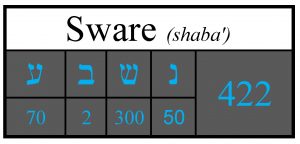 Numerical Considerations
Numerical Considerations
The numerical peculiarities of this form of the word sware (shaba – (נשבע) as found in Deu. 1:8 and 7:8, 12 are worth noting. This word shaba, in context, originates from the events described in Genesis 22 as confirmed in Gen. 26:2-4 and the other references provided. This form of Shaba (swear) is used 22 times in Deuteronomy and another 22 times in the rest of the Old Testament.
A Sw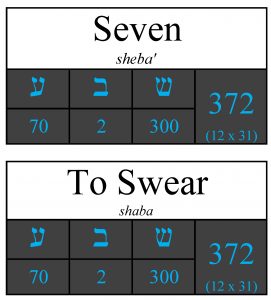 earing of Seven
earing of Seven
The context is important here and requires a better understanding of the Hebrew root word shaba/sware (שבע). This word is the identical phonetic twin of the word sheba/seven (שבע). In other words, before vowel pointings were added to the Hebrew version of the Biblical text, the Hebrew spelling of both words was the same. From this duel meaning root word we get the Hebrew cognates, השבעה shabuw’ah (oath), שבעים shib’iym (seventy), שבעים shabuwa’ (Sevens). So, in other words, in Hebrew, the idea of swaring and its resulting oath is etymologically, phonetically, numerically, and symbolically related to the number seven and its related numerical derivatives.
This bit of Hebrew semantics allows us to look at the covenant Yahweh made with Abraham in Genesis 22 in a different light. That swearing with Abraham was quite literally an Oath of Sevens. This understanding brings new context to Daniel’s opening words in verse 4 where he calls to remembrance the “covenant and mercy” – that oath of Sevens Yahweh sware with Abraham.
Think about Yahweh’s answer to Daniel. The answer given to Daniel was the prophecy of Shabuwa’ Shib’iym (70 Sevens), a prophecy that was, as we have learned, the etymologic, numeric, and dare I say spiritual offspring of that ancient Oath of Sevens.
Returning to the word shaba as used in Deuteronomy, consider its numerical value. The value of this form of the word is 422. Remember this form of the word is used 22 times in Deuteronomy and 22 times in the rest of the OT. Regarding this word, it is fascinating to note that the Hebrew words for 70 & Seven (Shabuwa’ and Shib’iym) as found in Daniel 9:2, 24, and 25, not only share the same etymological roots as sheba’/shaba’ (seven/swear), but they also have the same numerical value.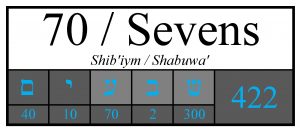 For those who might not be aware, in Daniel 9:24 the prophecy begins with the words שבעים שבעים (seventy sevens). In English, the words have been translated with two different meanings based upon the vowel pointings given by the Masorets. In Hebrew, the words as given are identical. The context was the original determining factor of their meaning. In the text below please keep in mind that Hebrew is read from right to left while the English version from left to right.
For those who might not be aware, in Daniel 9:24 the prophecy begins with the words שבעים שבעים (seventy sevens). In English, the words have been translated with two different meanings based upon the vowel pointings given by the Masorets. In Hebrew, the words as given are identical. The context was the original determining factor of their meaning. In the text below please keep in mind that Hebrew is read from right to left while the English version from left to right.
Daniel 9:24
שבעים שבעים נחתך על עמך ועל עירקדש לכלא
Daniel 9:24
Seventy weeks are determined upon thy people and upon thy holy city,…
With this contextual and numerical understanding of Daniel 9 and its origins in Deuteronomy and Genesis 22 in mind, I’d like to now attempt to explain to you the numerical and compositional genius of Daniel 9 and how Daniel used his divinely inspired skills to present his Jewish brethren with a literary, numerical, symbolic, and prophetic work of art that is unparalleled in recorded history.
Reconstructing Daniel 9
To give you a true sense of the compositional genius of Daniel 9 we need to start at the chronological beginning. When I say chronological beginning, I mean we need to determine the compositional order of the chapter. Thankfully Daniel provides us with that chronological fixing point. Take a look:
Daniel 9:21-23
21 Yea, whiles I was speaking in prayer, even the man Gabriel, whom I had seen in the vision at the beginning, being caused to fly swiftly, touched me about the time of the evening oblation. 22 And he informed me, and talked with me, and said, O Daniel, I am now come forth to give thee skill and understanding. 23 At the beginning of thy supplications the commandment came forth, and I am come to shew thee; for thou art greatly beloved: therefore understand the matter, and consider the vision.
What is helpful about this passage, if taken at face value, is that Daniel received the prophecy of 70 Sevens before he had written down a single word of what we know today as chapter 9. He was still in prayer when the prophecy was given to him. This takes on significant meaning when you realize that Daniel 9:23-27 is a distinct literary unit of 100 words and 418 letters. This is important because this passage of 100 Hebrew words is arranged around the two Hebrew words שבעה ושבעים pronounced sheba’ shabuwa’ (‘7 Sevens’ when read in Hebrew from right to left).
There are 49 words before words שבעה ושבעים and 49 words after, i.e. 49+2+49. Considering the thematic content of Daniel 9:23-27 it takes little imagination to see the intentional nature of such an arrangement.
Further evidence that this passage was an intentional numerical construction is found in the letter count of these 5 verses. There are 204 letters before the 2 words & 10 letters of שבעה ושבעים (7 sevens) and 204 letters after. It is beyond any reasonable doubt that this passage could have been coincidently arranged in this manner. This is further demonstrated when a close examination of the prophecy itself, its solution, the arrangement of the words, verse numbers, and word values are taken into consideration.
Literary and Numerical Construction Techniques of the Hebrew Bible
It has long been known that the authors of the Hebrew Bible constructed many of its passages using chiastic, acrostic, and other literary techniques to emphasize and embellish the text. Only recently though, have scholars been rediscovering that the Hebrew authors arranged certain words, passages, or ideas in a numerically structured manner so that those words, ideas, or themes of the text could be emphasized. Based upon the scribal notes of the Leningrad Codex, the oldest known complete Hebrew text of the Old Testament, the numerical structure of chapters, passages, and words in the Hebrew Bible is testified to as far back as the 1st millennium.
The late professor Casper Labuschange, a pioneeer of Logotechnical analysis of the Hebrew text, explained the purpose of the ancient scribal efforts to count the verses, words, and letters of the Bible:
“The Masoretes and subsequent copiers of the text of the Hebrew Bible, who were responsible for handing down the text, carefully counted verses, words, and even letters of most biblical books and painstakingly located and registered their arithmetic centres. It is usually held that the purpose of this meticulous counting was to ensure that the text was transmitted correctly. However, in my opinion, it had a more specific purpose: namely to preserve the intricate, delicate numerical structures, which can be done only by recounting what has been counted earlier.”
The First 22 Verses
Clearly, Daniel 9:23-27 demonstrates an intentional numerical construction. This construction emphasized the numerical theme of the passage by centering it upon the Hebrew word שבעה ושבעים (7 sevens). This proves beyond a reasonable doubt that this was not an accidental construction.
Since this portion of the text was received before Daniel’s inspired pen composed the rest of the text of Daniel 9, that leads us to consider the possibility that the first 22 verses of Daniel 9 were also a numerical construction used as a literary device to bring special attention to the text.
 A preliminary analysis of the text supports this consideration. Daniel 9 (in Hebrew), taken as a whole, is a passage of 462 words. Its verse structure is centered around 18 words of verse 15. There are 222 words before the 18 word numerical center of verse 15 and 222 words after (222 + 18 + 222). This indicates that Daniel purposely composed the first 22 verses of Daniel 9:1-22 so that when the prophecy of 70 Sevens was included in verses 23-27 its verse structure would be evenly balanced around the 18 words of verse 15. This provides compelling evidence that Daniel 9 was a single and cohesive work.
A preliminary analysis of the text supports this consideration. Daniel 9 (in Hebrew), taken as a whole, is a passage of 462 words. Its verse structure is centered around 18 words of verse 15. There are 222 words before the 18 word numerical center of verse 15 and 222 words after (222 + 18 + 222). This indicates that Daniel purposely composed the first 22 verses of Daniel 9:1-22 so that when the prophecy of 70 Sevens was included in verses 23-27 its verse structure would be evenly balanced around the 18 words of verse 15. This provides compelling evidence that Daniel 9 was a single and cohesive work.
Daniel 9:15
15 And now, O Lord our God, that hast brought thy people forth out of the land of Egypt with a mighty hand, and hast gotten thee renown, as at this day; we have sinned, we have done wickedly.
We already know that Daniel’s opening words in verse 4 are words quoted from Deuteronomy 7 and refer to the Oath of Sevens Yahweh sware with Abraham in Genesis 22. Remember that unilateral swearing by Yahweh with Abarham was, according to numerous references in the book of Deuteronomy, the legal basis for Israel’s claim to the Promised Land. Further a return to the Promised Land, at what Daniel understood to be the end of the prophecied 70 years desolations of Jerusalem (Dan. 9:1-2), was an important underlying theme of Daniel’s prayers and supplications made in the first 22 verses of Daniel 9.
Consider this. In Genesis 22:15 Yahweh swears (shaba) a Oath of Sevens with Abraham. This the text further describes as an irrevocable “blessing” that included (in part) a promise that through Abraham’s “seed” all nations of the earth would be blessed.
The word “bless” in Hebrew is barak. In some cases, this Hebrew word is also translated kneel (bow a knee), and may originate in the sense of kneeling to receive a blessing.
The first occurrence of the root form of barak (bless) is found in Genesis 22:17. This occurrence is right at the heart of the promised blessings made in Yahweh’s Oath of Sevens with Abraham. Blessings that not only included a permanent land grand to the Promised Land, but more importantly those blessings include a promise that through Abraham’s “seed” all nations of the earth would be blessed. Intriguingly, the root form of the word barak (bless) first used in Genesis 22:17 has a numerical value of 222.
So what do you think? Did Daniel just get lucky with a numerical verse structure of 222 + 18 + 222 for chapter 9? Or did Daniel purposely design the first 22 verses of chapter 9 so that when the prophecy of 70 Sevens was included it would highlight the promised blessings of Genesis 22 which he had in mind when he opened his pleadings to Yahweh in Daniel 9:4?
Genesis 22:15-17
5 And the angel of YHWH called unto Abraham out of heaven the second time, 16 And said, By myself have I sworn [shaba], saith YHWH, for because thou hast done this thing, and hast not withheld thy son, thine only son:
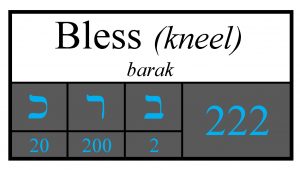 17 That in blessing [barak] I will bless [barak = 222] thee, and in multiplying I will multiply thy seed as the stars of the heaven, and as the sand which is upon the sea shore; and thy seed shall possess the gate of his enemies;
17 That in blessing [barak] I will bless [barak = 222] thee, and in multiplying I will multiply thy seed as the stars of the heaven, and as the sand which is upon the sea shore; and thy seed shall possess the gate of his enemies;
18And in thy seed shall all the nations of the earth be blessed [barak]; because thou hast obeyed my voice.
222 / dabar: Before & After
It might also interest you to note, that the Hebrew word value of 222 is found three times in Daniel 9. The first occurrence is found in Daniel 9:12 which is the first half of the 222 words structure (222 + 18 + 222). Here the word is translate “his words” and comes from the Hebrew root word dabar (דבר) which means word, speech, speak, utterance, matter, thing. In Daniel 9:12 the root dabar (דבר) preceeds its suffix (דבריו).
KJV Daniel 9:12 And he hath confirmed his words [דבריו], which he spake [דבר] against us, and against our judges that judged us, by bringing upon us a great evil: for under the whole heaven hath not been done as hath been done upon Jerusalem.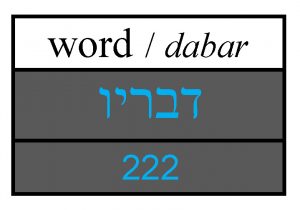
The third occurrence of 222 in Daniel 9 comes 10 verses later in verse 22. Verse 22 falls in the 2nd half of the 222 word structure of Daniel 9 (222 + 18 + 222). Here the word dabar is translated as talked or spoke. This time the root dabar is preceed by (וי) (וידבר). Another way to look at this is that in the first half of Daniel 9 dabar precedes its suffix. In the last half of Daniel 9, dabar follows its prefix.
((דבריו) 222 + 18 + 222 )(וידבר)).
See the chart on the above left for a more visual explanation.
Daniel 9:22
And he informed me, and talked [וידבר] with me, and said, O Daniel, I am now come forth to give thee skill and understanding.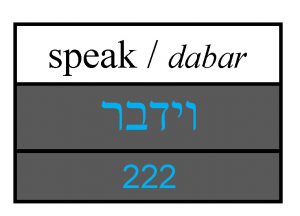
The 2nd occurrence of the 222 word value is found in Daniel 9:13. Here a form of the Hebrew word avon (iniquities) is used. For what is it worth, the only other occurrence of this form of avon is found in Ezra 9:13.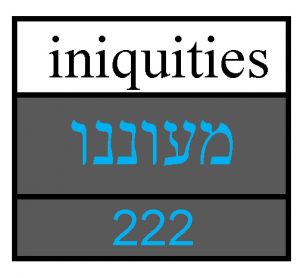
Jacob and 222
I’ve mentioned in past articles that 13 & 14 are often used in the Old and New Testament to represent Yahweh’s redemptive plan through Yeshua (Jesus) the promised “seed”. I believe I’ve also mentioned that the Hebrew word Jacob has a numerical value of 182 or 13×14 and as such, his name appears to have messianic symbolism.
With this in mind, it is worth noting what many consider a messianic prophecy in Numbers 24. Here Baalam prophecies that a star shall come “out of Jacob” and a scepter rise out of Israel. In this passage the 13th Hebrew letter mem precedes the name Jacob. This additional letter gives his name a numerical value of 222.
Numbers 24:17-19
17 I shall see him, but not now: I shall behold him, but not nigh: there shall come a Star out of Jacob [מיעקב = 222], and a Sceptre shall rise out of Israel, and shall smite the corners of Moab, and destroy all the children of Sheth. 18 And Edom shall be a possession, Seir also shall be a possession for his enemies; and Israel shall do valiantly. 19 Out of Jacob [מיעקב = 222] shall come he that shall have dominion, and shall destroy him that remaineth of the city.
Isaiah 65:9
9 And I will bring forth a seed out of Jacob [מיעקב = 222], and out of Judah an inheritor of my mountains: and mine elect shall inherit it, and my servants shall dwell there.
Genesis 28:13-16
13 And, behold, YHWH stood above it, and said, I am YHWH God of Abraham thy father, and the God of Isaac: the land whereon thou liest, to thee will I give it, and to thy seed; 14 And thy seed shall be as the dust of the earth, and thou shalt spread abroad to the west, and to the east, and to the north, and to the south: and in thee and in thy seed shall all the families of the earth be blessed.
15 And, behold, I am with thee, and will keep thee in all places whither thou goest, and will bring thee again into this land; for I will not leave thee, until I have done that which I have spoken to thee of. 16 And Jacob awaked out of his sleep, and he said, Surely YHWH is in this place; and I knew it not.
The Mighty Hand of Yahweh
For the Biblical sleuths out there, can you tell me where the words “mighty hand” (ביד חזקה) are first used in the Bible to describe Yahweh’s deliverance of Israel from Egypt? How about the last occurrence of this phrase?
If you said Exodus 13, you are correct. Moses, when instructing Israel to keep the feast of Unleavened Bread, told them that when their sons asks why they keep the feasts they were to tell them this feast was related to Yahweh’s “mighty hand” that delivered them from Egyptian bondage.
Exodus 13:8-11
8 And thou shalt shew thy son in that day, saying, This is done because of that which YHWH did unto me when I came forth out of Egypt. 9 And it shall be for a sign unto thee upon thine hand, and for a memorial between thine eyes, that YHWH’S law may be in thy mouth: for with a strong hand [ביד חזקה] hath YHWH brought thee out of Egypt.
10 Thou shalt therefore keep this ordinance in his season from year to year. 11 And it shall be when YHWH shall bring thee into the land of the Canaanites, as he sware [נשבע=shaba] unto thee and to thy fathers, and shall give it thee,…
Before continuing with this theme of the “mighty hand” of Yahweh, its worth noting here that Exodus 13:10 connects Israel’s return to the Promised Land with an oath the Yahweh “sware unto thee and to thy fathers”. Once you’ve noticed the significance of Yahweh’s swearing (shaba) with the fathers (beginning with Abraham) you’ll begin to see it mentioned throughout the OT.
Let’s drill down on the Hebrew phrase ביד חזקה (mighty hand) of Yahweh. Anyone care to guess which book of the Bible most often uses this phrase to describe the Exodus events? If you answered, The Book of Words or Deuteronomy, then you are correct. In fact, this phrase is used five times to describe Yahweh’s deliverance of Israel from Egypt. Here take a look:
In the following passage, the“mighty hand” of Yahweh is used in connection with the fourth commandment.
Deuteronomy 5:15
And remember that thou wast a servant in the land of Egypt, and that YHWH thy God brought thee out thence through a mighty hand [ביד חזקה] and by a stretched out arm: therefore YHWH thy God commanded thee to keep the sabbath day.
Here it is used in connection with reminding your son about the Exodus.
Deuteronomy 6:21
Then thou shalt say unto thy son, We were Pharaoh’s bondmen in Egypt; and YHWH brought us out of Egypt with a mighty hand [ביד חזקה] :
Here it is used in connection with Israel’s cries of affliction and Yahweh’s answer to their prayers.
Deuteronomy 26:7-8
7 And when we cried unto YHWH God of our fathers, YHWH heard our voice, and looked on our affliction, and our labour, and our oppression: 8 And YHWH brought us forth out of Egypt with a mighty hand [ביד חזקה] , and with an outstretched arm, and with great terribleness, and with signs, and with wonders:
Here it is in connection with Moses’ pleadings with Yahweh not to destroy Israel and to remember His servants, “Abraham, Isaac, and Jacob”.
Deuteronomy 9:26-29
26 I prayed therefore unto YHWH, and said, O Lord YHWH, destroy not thy people and thine inheritance, which thou hast redeemed through thy greatness, which thou hast brought forth out of Egypt with a mighty hand [ביד חזקה] . 27Remember thy servants, Abraham, Isaac, and Jacob; look not unto the stubbornness of this people, nor to their wickedness, nor to their sin:
28 Lest the land whence thou broughtest us out say, Because YHWH was not able to bring them into the land which he promised them, and because he hated them, he hath brought them out to slay them in the wilderness. 29 Yet they are thy people and thine inheritance, which thou broughtest out by thy mighty power and by thy stretched out arm.
Finally, here the phrase is used in connection with Moses explaining to Israel the real reasons that Yahweh delivered Israel from Egypt. Further, this is the very passage that Daniel refers to in verse 4 of Chapter 9 in his opening plea for Yahweh to restore His people to the Promised Land.
Deuteronomy 7:7-9
7YHWH did not set his love upon you, nor choose you, because ye were more in number than any people; for ye were the fewest of all people: 8 But because YHWH loved you, and because he would keep the oath [shabuw’ah] which he had sworn [shaba’] unto your fathers, hath YHWH brought you out with a mighty hand [ביד חזקה] , and redeemed you out of the house of bondmen, from the hand of Pharaoh king of Egypt.
9 Know therefore that YHWH thy God, he is God, the faithful God, which keepeth covenant and mercy with them that love him and keep his commandments to a thousand generations;
A variation on the “mighty hand” of Yahweh is used an additional 5 times in the book of Deuteronomy.
If you look at every instance of this theme in the book of Deuteronomy you get the sense that the “mighty hand” of Yahweh was employed on behand of Israel when they cried out to Him, when others pleaded on their behalf, when Yahweh was keeping His word or oath to others, and when He worked His sovereign will.
In consideration of how important this theme is to the book of Deuteronomy, the Oath of Sevens, and Israel’s return to the Promised Land, it is rather significant that the final occurrence of the “mighty hand” of Yahweh is found in Daniel 9:15, right in the numerical center of a passage pleading for Israel’s return. These pleadings are followed with a Divine prophetic answer we know as the prophecy of 70 Sevens. Daniel makes the “mighty hand” of Yahweh and the deliverance it provides, the numerical focal point of Chapter 9. Daniel further juxtaposes this deliverance with an unqualified admission of their collective guilt before Him.
Daniel 9:15
And now, O Lord our God, that hast brought thy people forth out of the land of Egypt with a mighty hand [ביד חזקה] , and hast gotten thee renown, as at this day; we have sinned, we have done wickedly.
The Sevens of Daniel 9
Acknowledging the fact that Daniel 9 and the prophecy of 70 Sevens is a prophecy in answer to Daniel’s prayers and supplication concerning the “covenant and mercy” of Yahweh – that ancient Oath of Sevens given by Yahweh to Abraham, it should not come as a surprise that the number 7 might also be an important numerical feature of the 22 verses Daniel composed to highlight this important prophecy. A composition, I might add, that I believe accurately reflected his inspired thoughts, prayers, & supplications up to the point when he received the 70 Sevens prophecy.
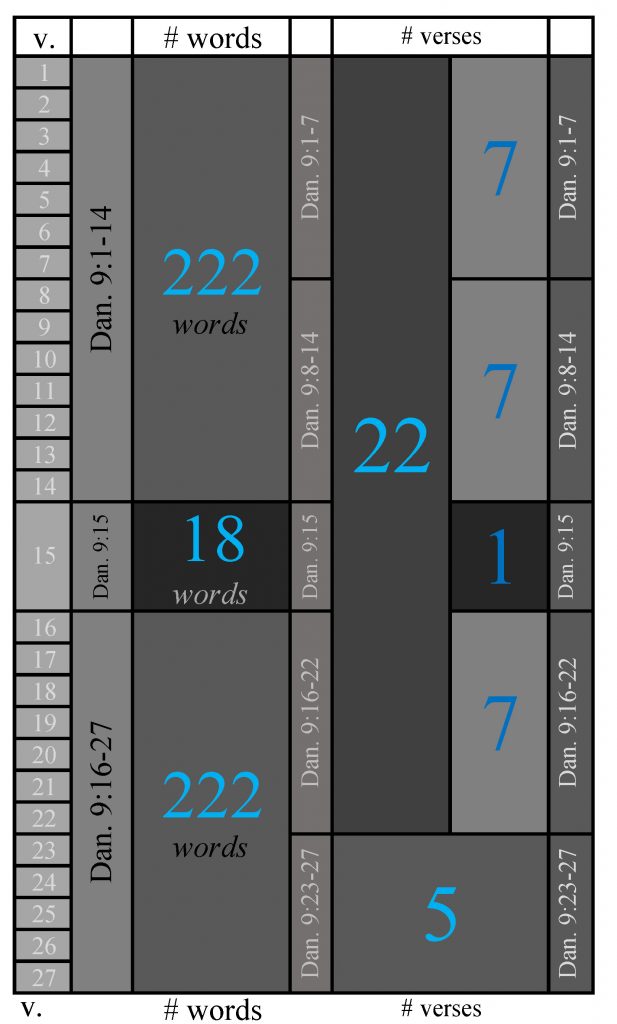 If we take the 100 words of the prophecy of 70 Sevens found in verses 23-27 and the 18 words of verse 15 at the numerical center of Daniel 9, we are then left with just 21 verses in chapter 9. These 21 verses include the 7 verses of Daniel 9:16-22 and the 14 verses of Daniel 9:1-14. Structurally, this means we can ascertain three 7 verse groups remaining in Daniel 9. These 7 verse contain 344 words. (Interestingly 344 is 7x7x7 + 1)
If we take the 100 words of the prophecy of 70 Sevens found in verses 23-27 and the 18 words of verse 15 at the numerical center of Daniel 9, we are then left with just 21 verses in chapter 9. These 21 verses include the 7 verses of Daniel 9:16-22 and the 14 verses of Daniel 9:1-14. Structurally, this means we can ascertain three 7 verse groups remaining in Daniel 9. These 7 verse contain 344 words. (Interestingly 344 is 7x7x7 + 1)
They can be arranged as indicated in the chart on the left. Here is why I believe this also was an intentional arrangement.
The Numerical Value of Yahweh’s Name
A careful exploration of the numerical compositional features of the Hebrew text of the Bible reveals that great emphasis was often put on the numerical value (or a factor of said value) of Yahweh’s proper name. In Hebrew each letter has a numerical value. Using the most common method of calculating the proper name of Yahweh’s gives a value of 26. Because 26 has as its factors 2 & 13, the number 13 (the 6th prime) or multiple of 13 is often used to represent Yahweh’s name in the text. Interestingly, Lord (Adoni) and God (Elohyim), additional titles often used to represent Yahweh in the Hebrew text, also are multiples of 13.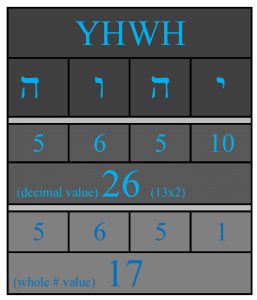
Another, though less widely known, way of calculating the numerical value of Yaweh’s name was to use only whole numbers which gave a value of 17 (the 7th prime number).
Numerically Woven into the Text
The numerical value of Yahweh’s name was showcased in the Hebrew text in several ways. One of the most common was to place the name at strategic locations in the text based upon the word or letter count of the verse. Another way was to arranged the structure of the passage to equal a multiple of the value of the name. In this way Yahweh’s power or presence could be represented in the text bringing additional underlying authority to the text. In some cases, it may have been used simply as an artistic embellishment. In either case, numerically weaving the name of Yahweh into the text was another way to honor the holy name of Yahweh. In the 9th chapter of Daniel both compositional techniques described above are used.
Did you know that in the book of Daniel the proper name of Yahweh is only found in chapter 9? It is used 8 times. Of those 8 occurrences, all of them are found in one of the 7 verse groupings. The first occurrence of Yahweh’s name is the 13th word of verse 2.
Note:(13 is a prime factor of the value of Yahweh’s name which is equal to 26 or 13×2)
The last occurrence of Yahweh’s proper name is the 13th word of verse 20. The 4th occurrence of Yahweh’s name is the 130th word of Daniel 9. The 6th and 7th occurrence are the 206th & 213th words of chapter 9.
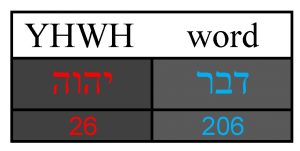 For those interested, the root form of the Hebrew word “dabar” (word) is used 4 times in Daniel 9. It’s numerical value is 206. The first occurrence is found in verse 2 along with the first occurrence of Yahweh’s name. In this verse it references the “word of YHWH” concerning the 70 years spoken of by Jeremiah. Take a look:
For those interested, the root form of the Hebrew word “dabar” (word) is used 4 times in Daniel 9. It’s numerical value is 206. The first occurrence is found in verse 2 along with the first occurrence of Yahweh’s name. In this verse it references the “word of YHWH” concerning the 70 years spoken of by Jeremiah. Take a look:
Daniel 9:2
In the first year of his reign I Daniel understood by books the number of the years, whereof the word of YHWH came to Jeremiah the prophet, that he would accomplish seventy [shabuw’ah = 422] years in the desolations of Jerusalem.
Finally, running through the 13th and 14th verses of chapter 9 is a unique 15-word pattern where Yahweh’s name is used three times separated by 6 words each time for: Yahweh + 6 + Yahweh + 6 + Yahweh. Here Yahweh’s name is every 7th word and there are 13 words between the first and last occurrence of His name in this pattern. In chapter 9 Yahweh is refered to by the titles Lord, and God 24 times. The occurrences are as follows:
- 10 – Lord / Adonay
- 1 – God / El
- 13 – God / Elohiym
- 8 – Yahweh
The Numerical Centers of the Sevens
The numerical genius of the first 22 verses of Daniel 9 shines through in another intriguing way. It has to do with the numerical structure of the 7 verse groupings. By the structure of verses 23-27 (49+2+49) and the overall structure of chapter 9 (222+18+222), it is apparent that Daniel understood the finer points of organizing Hebrew passages into equal halves around a numerical center in order to draw the readers attention to specific themes in the text. Daniel uses this numerical structuring technique when writing the 7 verse groups as well.
The 1st Group of Seven
The first 7 verses of Daniel 9 are 109 words. The meaningful numerical center of this passage is the 13 words that begin Daniel’s prayer and supplications to Yahweh. These are the first words spoken by Daniel in chapter 9. There are 48 words before these 13 words and 48 words after (48 + 13 + 48).
Please forgive me but this bears repeating. The 13 word numerical center of the first 7 verses of Daniel 9, refers by way of Deuteronomy 7, to Yahweh’s Oath of Sevens made with Abraham in Genesis 22. How is that for divinely inspiration numerical genius!
Daniel 9:4
“… and said, O Lord, the great and dreadful God, keeping the covenant and mercy to them that love him, and to them that keep his commandments;”
Deuteronomy 7:7-9, 12
7 YHWH did not set his love upon you, nor choose you, because ye were more in number than any people; for ye were the fewest of all people:
8 But because YHWH loved you, and because he would keep the oath [shabuw’ah]which he had sworn [shaba] unto your fathers, hath YHWH brought you out with a mighty hand, and redeemed you out of the house of bondmen, from the hand of Pharaoh king of Egypt…
9 Know therefore that YHWH thy God, he is God, the faithful God, which keepethcovenant and mercy with them that love him and keep his commandmentsto a thousand generations;
12 Wherefore it shall come to pass, if ye hearken to these judgments, and keep, and do them, that YHWH thy God shall keep unto thee the covenant and the mercy which he sware [shaba] unto thy fathers:
Genesis 22:15-17
15 And the angel of YHWH called unto Abraham out of heaven the second time, 16 And said, By myself have I sworn [shaba], saith YHWH, for because thou hast done this thing, and hast not withheld thy son, thine only son:
17 That in blessing [barak] I will bless [barak= 222] thee, and in multiplying I will multiply thy seed as the stars of the heaven, and as the sand which is upon the sea shore; and thy seed shall possess the gate of his enemies;
18And in thy seed shall all the nations of the earth be blessed [barak]; because thou hast obeyed my voice.
1 Chronicles 16:15-18
15 Be ye mindful always of his covenant; the word [dabar] which he commanded to a thousand generations; 16Even of the covenant which he made with Abraham, and of his oath [shabuwa’] unto Isaac; 17 And hath confirmed the same to Jacob for a law, and to Israel for an everlasting covenant, 18 Saying, Unto thee will I give the land of Canaan, the lot of your inheritance;
The 2nd Group of Seven
The seven verses of Daniel 9:8-14 build upon Daniel’s admission of their collective guilt as a people. There are 113 words in these seven verses. 50 words before the 13 words of its numerical center and 50 after (50 + 13 + 50). The passage climaxes with the acknowledgment that they deserve the curse written by Moses. In the following passage the 13 word numerical center is bracketed in arrows:
Daniel 9:11-13
11 Yea, all Israel have transgressed thy law, even by departing, that they might not obey thy voice; therefore the curse is poured upon us, and the oath that is written in the law of Moses the servant of God,..
>>>because we have sinned against him. 12 And he hath confirmed his words, which he spake against us, and against our judges that judged us, …<<<
by bringing upon us a great evil: for under the whole heaven hath not been done as hath been done upon Jerusalem. 13 As it is written in the law of Moses, all this evil is come upon us: yet made we not our prayer before YHWH our God, that we might turn from our iniquities, and understand thy truth.
To get the fullest sense of what Daniel is saying in the passage above it is helpful to read all seven verses. Once you’ve done that take a look at the following passage where you get a sense that Daniel is again drawing from the words of Moses in Deuteronomy when talking about the curse upon Israel, if they do not obey Yahweh’s laws.
Did you know that Jewish tradition believed that Moses received the law on the 50th day after the exodus? Indeed a case can be made from the Hebrew chronology of the Old Testament that this is the case. Interesting that this group of seven verses highlights the “law of Moses” and its numerical structure of 50 +13 + 50 seems to support this association.
This is especially relevant given Deuteronomy 30:1-5 where it says if Israel returns unto Yahweh (and His laws) He will lift the curse and bring them back to the Promised Land from wherever they are scattered in the world. Again, a return to the Promised Land is an underlying theme of Daniel 9:1-22 and Daniel pleading for this return is best seen within the context of Deuteronomy and the promised blessings of Genesis 22.
Deuteronomy 11:26-28
26 Behold, I set before you this day a blessing and a curse; 27 A blessing, if ye obey the commandments of YHWH your God, which I command you this day: 28 And a curse, if ye will not obey the commandments of YHWH your God, but turn aside out of the way which I command you this day, to go after other gods, which ye have not known.
Deuteronomy 30:1-5
And it shall come to pass, when all these things are come upon thee, the blessing and the curse, which I have set before thee, and thou shalt call them to mind among all the nations, whither YHWH thy God hath driven thee, 2 And shalt return unto YHWH thy God, and shalt obey his voice according to all that I command thee this day, thou and thy children, with all thine heart, and with all thy soul; 3 That then YHWH thy God will turn thy captivity, and have compassion upon thee, and will return and gather thee from all the nations, whither YHWH thy God hath scattered thee.
4 If any of thine be driven out unto the outmost parts of heaven, from thence will YHWH thy God gather thee, and from thence will he fetch thee: 5 And YHWH thy God will bring thee into the land which thy fathers possessed, and thou shalt possess it; and he will do thee good, and multiply thee above thy fathers.
The 3ndGroup of Seven
The final group of seven verses in Daniel 9:16-22 is 122 words and reaches a broken climactic conclusion with the admission of Israel’s collective guilt and a thrice-repeated plea for Yahweh to act. The meaningful numerical center of this passage is 26 words. There are 48 words before this numerical center and 48 after (48 + 26 + 48).
 That Daniel purposely chose this number to highlight the personal name of Yahweh and its value of 26, is indicated by the reference to “thy name” which bookends the 26 word numerical center of this passage. Here is the passage with the numerical center bracketed in arrows. Note that just as the numerical center of the first 7 verses of Daniel 9 began Daniel’s plea to Yahweh, the numerical center of this final group of 7 verses appropriately ends Daniel’s words in Chapter 9. Take a look:
That Daniel purposely chose this number to highlight the personal name of Yahweh and its value of 26, is indicated by the reference to “thy name” which bookends the 26 word numerical center of this passage. Here is the passage with the numerical center bracketed in arrows. Note that just as the numerical center of the first 7 verses of Daniel 9 began Daniel’s plea to Yahweh, the numerical center of this final group of 7 verses appropriately ends Daniel’s words in Chapter 9. Take a look:
Daniel 9:18-19
18 O my God, incline thine ear, and hear; open thine eyes, and behold our desolations, and the city which is called by thy name:
>>>…for we do not present our supplications before thee for our righteousnesses, but for thy great mercies. 19 O Lord, hear; O Lord, forgive; O Lord, hearken and do; defer not, for thine own sake, O my God: for thy city and thy people are called by thy name.<<<
70 Sevens and the Blessing of the Oath of Sevens
How do I summarize something as important and beautiful as the 9th chapter of Daniel? I, frankly, feel inadequate to walk on such holy ground. But if I tried to make this subject as simple as possible I would hope this is not too far from the mark.
Daniel 9 is a prayer by a man of faith, to his faithful Creator. It is a prayer of a contrite sinner to a just and righteous God. It is the prayer, a pleading on behalf of himself and his people for Yahweh to remember an unbreakable oath sworn with their father Abraham. A Oath of Sevens and its blessings, that by way of Deuteronomy and the words of Moses, Daniel painfully explains to his readers why they as a people are totally unworthy to receive.
Nevertheless, by faith in the irrevocable word (dabar) of Yahweh, Daniel pleads for mercy, and for the “mighty hand” of Yahweh to act on their behalf. Just a Yahweh delivered Israel from the hand of Pharaoh, Daniel now pleads for Israel’s deliverance from the 70 years of Babylonian captivity prophesied by Yahweh through Jeremiah.
And once again Yahweh, in response to a man of faith, sets His mighty hand in motion. In answer to Daniel’s prayer regarding the Oath of Seven’s and the related blessings (barak) promised to Abraham, Yahweh sends though the angel Gabriel a prophecy of 70 Sevens. A prophecy that tells when a promised “anointed prince” would “finish the transgression, make an end of sins, to make reconciliation for iniquity, bring in everlasting righteousness, seal up the vision and prophecy, and to anoint the most holy”.
Daniel after receiving this gift of assurance in Israel’s coming redemption and restoration goes on to write this prophecy down in a manner which ensured that his readers would someday understand the significance of these important prophetic words. By framing the entire chapter 9 as 222 + 18 + 222 words including the 100 words verses 23-27, Daniel ensured that his readers would someday understand that the 22 verses that introduce the prophecy of 70 Sevens, were, by way of Deuteronomy 7, an acknowledgment that their return to the Promised Land would only be accomplished by the righteousness of Yahweh in keeping the Oath of Sevens that He sware with Abraham in Genesis 22. An oath that promised in part, that through Abraham’s “seed” all nations of the world would be blessed (barak = 222).
Maybe in the most inadequate and abbreviated way, one might say that Daniel 9 was Daniel’s inspired testimony to his brethern that the promised blessings (barak = 222) of Genesis 22:17-18 would be realized by the “mighty hand” of Yahweh and the redemptive work of His “anointed prince” described in the prophecy of 70 Sevens.
In closing I leave you with the words of Peter, Zacharias (father of John), and the apostle Paul, which confirm that Yeshua of Nazareth was the “anointed prince” of the 70 Sevens – that promised “seed” of Abraham through whom all nations of the earth would be blessed (barak):
Acts 3:25-26
25 Ye are the children of the prophets, and of the covenant which God made with our fathers, saying unto Abraham, And in thy seed shall all the kindreds of the earth be blessed. 26 Unto you first God, having raised up his Son Jesus, sent him to bless [barak = 222] you, in turning away every one of you from his iniquities.
Luke 1:67-75
67 And his father Zacharias was filled with the Holy Ghost, and prophesied, saying, 68 Blessed be the Lord God of Israel; for he hath visited and redeemed his people, 69 And hath raised up an horn of salvation for us in the house of his servant David; 70 As he spake by the mouth of his holy prophets, which have been since the world began: 71 That we should be saved from our enemies, and from the hand of all that hate us; 72 To perform the mercy promised to our fathers, and to remember his holy covenant; 73 The oath [shabuw’ah’] which he sware [shaba’] to our father Abraham, 74 That he would grant unto us, that we being delivered out of the hand of our enemies might serve him without fear, 75 In holiness and righteousness before him, all the days of our life.
Galatians 3:16-19
16 Now to Abraham and his seed were the promises made. He saith not, And to seeds, as of many; but as of one, And to thy seed, which is Christ.17 And this I say, that the covenant, that was confirmed before of God in Christ, the law, which was four hundred and thirty years after, cannot disannul, that it should make the promise of none effect. 18 For if the inheritance be of the law, it is no more of promise: but God gave it to Abraham by promise. 19 Wherefore then serveth the law? It was added because of transgressions, till the seed should come to whom the promise was made; and it was ordained by angels in the hand of a mediator.
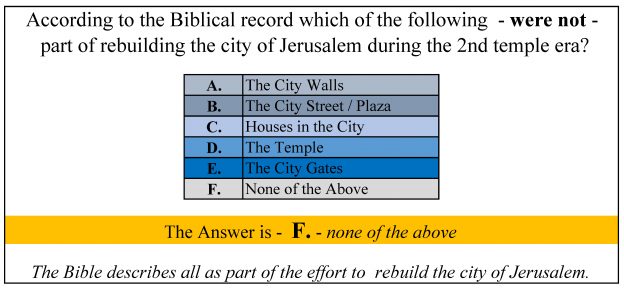
Daniel 9: A Word, Decree, or Commandment?
 How many of you can tell me what this verse means?
How many of you can tell me what this verse means?
Jeremiah 29:10
For thus saith YHWH, That after seventy years be accomplished at Babylon I will visit you, and perform my good word toward you, in causing you to return to this place.
Before discussing the meaning of this verse, a bit of context is important. This verse is part of a letter the prophet Jeremiah sent from Jerusalem to the Jewish captives in Babylon. In the letter he tells them to get use to their new home because they will be there for another 70 years. Jeremiah also told them that they were not to lose hope, because after this 70 years captivity YHWH would cause them to return to Jerusalem.
Notice in this passage a couple of key words. In the verse Yahweh promises that He was going to perform his good “word” towards the Jewish captives by causing them to “return” to Jerusalem. The Hebrew for “word” in this passage is dabar. According to my concordance dabar is used 1439 times in the Old Testament. As exemplified in this passage, of the 1439 times the word is used in the Bible, the majority refer to the word, speech, or utterance of Yahweh, the living God of the Bible.
Jeremiah 29:10
For thus saith YHWH, That after seventy years be accomplished at Babylon I will visit you, and perform my good word [dabar] toward you, in causing you to return [shuwb] to this place.
Now let’s look at the word “return” in the passage above. This word “return” is the Hebrew shuwb and it is used over 1000 times in the Scripture. The majority of the time the word is translated return… again, turn…back, etc. The word is most often used in the sense of turning back or returning to something, somewhere, or someone.
As we can see here in Jeremiah 29:10 Yahweh gave His “word” – His dabar that He would cause the Jewish people to “return” – to shuwb to Jerusalem. 70 years later Yahweh’s word was confirmed in 2 Chron. 36:22-23 with the following record:
2 Chronicles 36:22-23
22 Now in the first year of Cyrus king of Persia, that the word [dabar] of YHWH spoken by the mouth of Jeremiah might be accomplished, YHWH stirred up the spirit of Cyrus king of Persia, that he made a proclamation [abar] throughout all his kingdom, and put it also in writing, saying,
23 Thus saith Cyrus king of Persia, All the kingdoms of the earth hath YHWH God of heaven given me; and he hath charged me to build him an house in Jerusalem, which is in Judah. Who is there among you of all his people? YHWH his God be with him, and let him go up.
It’s important to note in this passage that Cyrus’ “proclamation” (abar) was given because Yahweh stirred up the spirit of Cyrus to confirm His (Yahweh’s) “word” (dabar) that the Jewish people would return (shuwb) to Jerusalem after 70 years. As we explore this a bit deeper just remember that Yahweh gave the “word” (dabar) and Cyrus confirmed that word by issuing a proclamation or decree (abar).
Daniel 9 and the Word to Return and Build
You are probably wondering what this has to do with Daniel 9. Let me show you. Based upon what we’ve learned about the dabar (word) of Yahweh which promised that the Jewish people would shuwb (return) to Jerusalem after 70 years, let’s now apply that understanding to Daniel 9:25. Here is the first part of that verse from the KJV as most of you are probably familiar with it:
Daniel 9:25
25 Know therefore and understand, that from the going forth of the commandment to restore and to build Jerusalem unto the Messiah the Prince shall be seven weeks,….
Now take a look at the same verse with me pointing out the words dabar and shuwb as they appear in the Hebrew text of Daniel 9:25a:
Daniel 9:25
25 Know therefore and understand, that from the going forth of the dabar [word] to shuwb [return] and to build Jerusalem unto the Messiah the Prince shall be seven weeks,….
Kind of changes how you understand the verse, doesn’t it? If we used our opening verse of this article in Jeremiah 29:10 as a model for understanding Daniel 9:25, then it makes more contextual sense to see the start of the 70 Sevens prophecy begining with a “word” (dabar) of Yahweh that tells the Jewish people to “return” (shuwb) and build Jerusalem.
You’d think, in light of the context of how dabar and shuwb is used in the Hebrew Bible, that at the very least, those who teach on the subject would mention that Daniel 9:25 and the terminus a quo (starting point) of the 70 Seven might refer to the word of the Yahweh. Unfortunately, that has not been the case.
Why are the vast majority of today’s scholars and teachers blind to the possibility that Daniel 9, arguably the most important prophecy in the Bible, begins with the word of Yahweh? Why won’t they at least offer the “word” of Yahweh as one of the options for the fulfillment of Daniel 9:25? I can’t answer that question. It makes absolutely not sense to me.
To drive home the contextual necessity of seeing the “dabar” of Daniel 9:25 as the dabar (word) of Yahweh, take note of the following. In Daniel 9, dabar is used three other times. Each of those occurrences refer to the “dabar” (word) of Yahweh. Here, take a look:
Daniel 9:2
In the first year of his reign I Daniel understood by books the number of the years, whereof the word [dabar] of YHWH came to Jeremiah the prophet, that he would accomplish seventy years in the desolations of Jerusalem.
Daniel 9:12
And he hath confirmed his words [dabar], which he spake against us, and against our judges that judged us, by bringing upon us a great evil: for under the whole heaven hath not been done as hath been done upon Jerusalem.
Daniel 9:23
At the beginning of thy supplications the commandment [dabar] came forth, and I am come to shew thee; for thou art greatly beloved: therefore understand the matter, and consider the vision.
Daniel 9:25
Know therefore and understand, that from the going forth of the commandment [dabar] to restore and to build Jerusalem unto the Messiah the Prince shall be seven weeks, and threescore and two weeks: the street shall be built again, and the wall, even in troublous times.
With this contextual light shining on Daniel 9 and its “word to restore and build Jerusalem”, can you explain to me why the authors in the articles below do not even mention the possibility that the very God they exalt and serve is not one of the candidates for giving the word to restore and build Jerusalem – a word that begins a countdown to the fulfillment of the most important messianic prophecy in the Bible?
Even if you didn’t have a clue how the 70 Sevens were meant to be fulfilled, the most plain sense reading of the verse requires us to at least look for a “word” of Yahweh that commanded the Jewish to return and build Jerusalem.
To give you a sense of the disconnect, here are four of my peers who are highly respected for their views on Bible prophecy. As you read through these quotes, try to find any mention that the “word” of Yahweh commanding the Jewish people to “return” and build, might be one of the options worth considering when interpreting the dabar (word) of Daniel 9:25 and its countdown to the Messiah.
David Reagan
The crucial question relates to when the decree was issued “to restore and rebuild Jerusalem.” There are three possible dates:
-
- 538 B.C. — Cyrus, King of Persia, issued a decree to Zerubbabel to rebuild the Temple in Jerusalem (2 Chronicles 36:22-23; Ezra 1:1-3; and Ezra 6:1-5).
- 457 B.C. — Artaxerxes, King of Persia, issued a decree to Ezra authorizing him to reinstitute the Temple services, appoint judges and magistrates, and teach the Law (Ezra 7:11-26).
- 445 B.C. — Artaxerxes issued a decree to Nehemiah to rebuild the walls of Jerusalem (Nehemiah 2:1-8). (David Reagan, Daniel’s 70 Weeks of Years – – For the full context of this quote please see the following Link)
Thomas Ice
There are at least three different decrees that are considered in an attempt to “know and discern” the beginning of the seventy weeks of Daniel.
First, there was the decree of Cyrus (Ezra 1:2-4; 6:3-5), issued in 537 B.C., which I will call decree one. Second, the decree of Artaxerxes (Ezra 7:11-26) given in 458 B.C., (decree two). Third, a second decree from Artaxerxes (Neh. 2:5-8, 17, 18) given in 444 B.C., at the time of Nehemiah’s return to Jerusalem, (decree three). I want to note at the outset of the examination of these possibilities that the third decree is the only one that literally fits the exact words of Daniel 9:25, as we shall see….
Artaxerxes’ Decree
It is clear to me that of all the options available, the only decree that specifically fits the statements of Daniel 9:25 is the one by Artaxerxes given in 444 B.C. as recorded in Nehemiah 2:1-8. Why? Because decree one and two relate to rebuilding the Temple. Only decree three speaks specifically of Jerusalem. It is clear that Nehemiah received a decree to “rebuild and restore Jerusalem” from King Artaxerxes. (Thomas Ice – The Seventy Weeks of Daniel – – For the full context of this quote please see the following Link)
Joel Richardson
X. WHAT DECREE? (DAN. 9:25)
25 “So you are to know and discern that from the issuing of a decree to restore and rebuild Jerusalem until Messiah the Prince there will be seven weeks and sixty-two weeks; it will be built again, with plaza and moat, even in times of distress.
-
- The only position that literally fulfills the requirements of the passage seems to be the decree from Artaxerxes as recorded in Nehemiah 2:1-8,17-18 given on March 5, 444 B.C.
- 483 sabbatical years (the first 69 weeks) were fulfilled to the day on March 30, A.D. 33, the date of Christ’s triumphal entry into Jerusalem. (This is 476 years according to the Julian Calendar). Jesus was crucified four days later on April 3, A.D. 33.
- Various “decrees” that have been set forth as the terminus a quo:
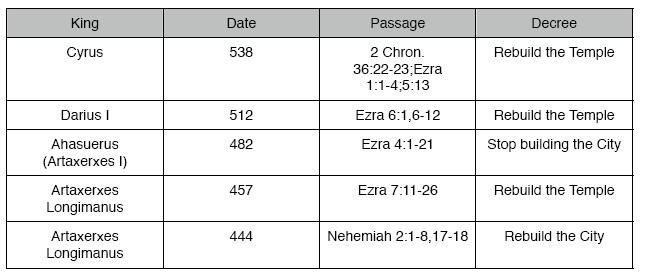
- Only one decree matches or fulfills the Scriptural criterion of a decree issued specifically to rebuild the city. (Joel Richardson, Daniel’s 70 Weeks: An Introduction – – For the full context of this quote please see the following Link)
Mark Hitchcock
When the clock starts ticking
-
- The divine prophetic clock for the seventy weeks or 490-year period began ticking on March 5, 444 BC, when the Persian king Artaxerxes issued a decree allowing the Jews to return to rebuild Jerusalem (Nehemiah 2: 1-8). (Hitchcock, Mark. The End: A Complete Overview of Bible Prophecy and the End of Days (p. 68). Tyndale House Publishers. Kindle Edition.)
Ignoring the Context
Let me illustrate how difficult it is to come up with a reasonable interpretation of Scripture when you ignore the context as has been done by the authors above. Each one of the authors above claims that the decree of Artaxerxes Longimanus in 444-445 BC as described in Nehemiah 1-8, 17-18 was the “decree” of Daniel 9:25, a so called “decree” which you now understand is really a dabar (word). I want to reiterate here that I believe each of these authors are well-meaning, sincere, and intelligent brothers in Christ. Yet by ignoring the context of Daniel 9:25 and the “word” to restore and build, they must stretch the credibility of their argument to come up with their terminus a quo (starting point) in 444-445 BC. Here, take a look at the passage, they claim is the “decree” to return and build Jerusalem. As you read this, see if you can ascertain this “decree” and the exact date it was given:
Nehemiah 2:1 – 20
And it came to pass in the month Nisan, in the twentieth year of Artaxerxes the king,…
4 Then the king said unto me, For what dost thou make request? So I prayed to the God of heaven. 5 And I said unto the king, If it please the king, and if thy servant have found favour in thy sight, that thou wouldest send me unto Judah, unto the city of my fathers’ sepulchres, that I may build it. 6 And the king said unto me, (the queen also sitting by him,) For how long shall thy journey be? and when wilt thou return [shuwb]? So it pleased the king to send me; and I set him a time.
7 Moreover I said unto the king, If it please the king, let letters be given me to the governors beyond the river, that they may convey me over till I come into Judah; 8 And a letter unto Asaph the keeper of the king’s forest, that he may give me timber to make beams for the gates of the palace which appertained to the house, and for the wall of the city, and for the house that I shall enter into. And the king granted me, according to the good hand of my God upon me. 9 Then I came to the governors beyond the river, and gave them the king’s letters….
7 Then said I unto them, Ye see the distress that we are in, how Jerusalem lieth waste, and the gates thereof are burned with fire: come, and let us build up the wall of Jerusalem, that we be no more a reproach. 18 Then I told them of the hand of my God which was good upon me; as also the king’s words [dabar] that he had spoken unto me. And they said, Let us rise up and build. So they strengthened their hands for this good work.
20 Then answered I them, and said unto them, The God of heaven, he will prosper us; therefore we his servants will arise and build: but ye have no portion, nor right, nor memorial, in Jerusalem.
Notice in the passage above that exact day when Nehemiah and Artaxerxes talked is not given in the text. It only states that Nehemiah went before Artaxerxes in the 1st month of his 20th year. Nor does the passage above tell use when Artaxerxes gave Nehemiah the letters which granted him the authority to building the walls and gates of Jerusalem. The fact of the matter is that there is no specific word, decree, or commandment given here in Nehemiah 2 that allows us to begin the 70 Sevens countdown without making several assumptions that we cannot prove. Do you really believe that Yahweh, the living God of the Bible gave a countdown to the coming of His Anointed Prince but instead of giving us an exact starting point left it up to us to guess?
We are not just talking some ambiguous prophecy here. We are talking about the definitive proof of Old Testament prophecy, the central thrust upon which the entire history of the Bible pivots, and the best Yahweh could give us was a text that we had to make several critical assumptions about?
Say it isn’t so!
And if that is not enough to stretch the credibility of their interpretations, in order to make the math work, from the reign of Artaxerxes Longimanus in 444-445 BC to the birth of Christ, they then have to use a so called “prophetic year”, which as I’ll try to explain in my next article, has as much basis in Biblical fact and calendric science as those who use the Bible to claim the earth is flat.
Returning to Nehemiah 2, those who’ve read the passage above carefully, I did highlight the Hebrew words shuwb and dabar in the text. Some who read this passage out of desperation might claim the usage of these words fulfills the criteria of Daniel 9:25. This is not the case for several reasons.
-
- First all, the usage of return (shuwb) in verse 6 refers to the king Artaxerxes questioning Nehemiah as to when he will return to Shushan and his service to the king. This is not a statement of when Nehemiah will return to Jerusalem and rebuild its walls.
- Second, the usage of dabar in verse 18 refers to the spoken conversation between Nehemiah and king Artaxerxes and does not specifically tell us what the conversation was about.
- Third, Nehemiah does not provide a specific date for his conversation with Artaxerxes.
Again, even in the most desperate attempt to fit this to the criteria of Daniel 9:25 we must assume several critical pieces of information that the text does not provide us.
A House of Cards
For those who still insist that the Nehemiah’s conversation with Artaxerxes and the letters he was given constitute the “word to return and build Jerusalem” of Daniel 9:25 you still must overcome the chronological impossibility of the position. Here are several real contextual facts that make it impossible to prove Artaxerxes Longimanus and Nehemiah (using and reasonable rending of the facts) were contemporaries.
-
- During the reign of Artaxerxes Longimanus, the palace at Shushan was destroyed by fire.
- Ezra, whose father died in the 19th year of Nebuchadnezzar would have been a minimum of 140+ years old by the reign of Artaxerxes Longimanus. By no reasonable interpretation of the text could he have performed the activities attributed to him in these passages.
- The books of Nehemiah and Ezra show that the priest and Levites who came up with Joshua and Zerubabel in the 1st year of Cyrus (536 BC) were the literal fathers of the priests and Levites who served during the reign of the unnamed Biblical “Artaxerxes” of Nehemiah. In others words, the sons of the priests and Levites who came up under the decree of Cyrus in 536 BC, still served during the reign of “Artaxerxes” of Nehemiah. These priests and Levites were 1st and 2nd generations, not the multi-generational span required by the Artaxerxes Longimanus assumption given by the authors above.
- Mordecai’s presence in both the Biblical and historical record helps date the chronology of Ezra and Nehemiah and thus confirms that the “Artaxerxes” of Ezra 6 & 7 and book of Nehemiah is the Persian king Darius I (the great) son of Hystaspes. The chronological fact related to his service also help explain the identity of the “queen” mentioned in Nehemiah 2:6.
- Ezra 4, 6, & 7 provide compelling evidence to show that the events of Nehemiah and Ezra (Ezra 6 onwards) take place during the reign of Darius ‘the Great’ whom the Bible also identifies as “Artaxerxes”.
For those of you who take your Berean duty seriously, here are several articles that more fully explore the chronology of the 2nd temple era. These articles were part of a response I wrote to an Associate for Biblical Research article by Rick Lanser which was critical of my work on the 2nd temple era chronology related to the Artaxerxes Assumption made by the authors above and most of their peers. They might help you better understand the challenges of assuming the “Artaxerxes” of Nehemiah and Ezra was the Persian king Longimanus.
Introduction – The Associates for Biblical Research Responds to the Artaxerxes Assumption
Part I – Cyrus to Darius: The 2nd Temple Context of Ezra 4
Part II – Darius & Artaxerxes: The Context of the Word to Restore & Build Jerusalem
Part III – Darius the great Persian Artaxerxes: A Contextual Look at the Book of Ezra in the Light of Persian History
Part IV – Darius and the Kingdom of Arta
Part V – Darius, Artaxerxes, & the Bible: Confirming Royal Persian Titulature
Part VI – Mordecai & the Chronological Context of Esther
Part VII – Esther, Ahasuerus, & Artaxerxes: Who was the Persian King of 127 Provinces?
Part VIII – Darius I: A Gentile King at the Crux of Jewish Messianic History
Part IX – The Priests & Levites of Nehemiah 10 & 12: Exploring the Papponymy Assumption
The Word to Return and Build Jerusalem
So, if Artaxerxes didn’t or couldn’t have give the “word to return and build Jerusalem” as described in Daniel 9:25, who gave this word to return and build and what was it?
As I’ll show you there is only one “word” (dabar) to “return” (shuwb) and build that truly fits the contextual requirements of Daniel 9:25. That “word” was given by Yahweh, the living God of the Bible. Fittingly, not only was this word given by our Creator, He made sure it was witnessed not by one, but two prophetic voices in the Biblical record. Further, those voices were confirmed by the witness of Ezra 6.
I opened this article with a quote from Jeremiah 29:10 in order to help you understand the meaning of the Hebrew word dabar and shuwb.
Jeremiah 29:10
For thus saith YHWH, That after seventy years be accomplished at Babylon I will visit you, and perform my good word [dabar] toward you, in causing you to return [shuwb] to this place.
I also used this verse to help you understand that every aspect of Daniel 9 and its related chronology should be seen through a Yahweh centric lens. It was Yahweh’s dabar (word) which was the catalyst that stirred Cyrus to make a decree that allowed the Jewish people to return to Jerusalem and build the city and temple.
There is little question that Yahweh’s “word” began this process. How many of you can tell me though what happened after Cyrus’ decree that allowed the Jewish people to return and build the city of Jerusalem and the temple? Based upon the Biblical record, basically nothing happened for the next 16 years.
Did you know that Joshua the chief priest, Zerubbabel the governor, and the people only got some of the foundation stones laid on the temple before their construction efforts on Yahweh’s house ceased. For those 16 years they were still building Jerusalem, only their priorities had shifted from Yahweh’s house to their own houses, and other construction effort in the city.
Then something happened in the 2nd year of Darius ‘the Great’ that completely changed the dynamics of the 2nd temple era. Yahweh, through the prophets Haggai and Zechariah gave them a “word” which commanded the Jewish people to – return – and build His house, the very beating heart of the city of Jerusalem which they had been neglecting.
As you read the Biblical passages below keep in mind as I demonstrated in my last article Daniel 9: Building Jerusalem the Bible is clear that building the temple (Yahweh’s house) was in fact “building” the city of Jerusalem. Those who claim that building the temple was not building the city of Jerusalem are making a spurious argument that they – have not – and cannot prove with any reasonable rendering of the Biblical record.
Here are the dabar (words) of Yahweh to return and build Jerusalem:
Haggai 1:1-15
In the second year of Darius the king, in the sixth month, in the first day of the month, came the word [dabar] of YHWH by Haggai the prophet unto Zerubbabel the son of Shealtiel, governor of Judah, and to Joshua the son of Josedech, the high priest, saying, 2 Thus speaketh YHWH of hosts, saying, This people say, The time is not come, the time that the YHWH’S house should be built…
3 Then came the word of YHWH by Haggai the prophet, saying, 4 Is it time for you, O ye, to dwell in your cieled houses, and this house lie waste? 5 Now therefore thus saith YHWH of hosts; Consider your ways…
Thus saith YHWH of hosts; Consider your ways. 8 Go up to the mountain, and bring wood, and build the house; and I will take pleasure in it, and I will be glorified, saith YHWH.
9 Ye looked for much, and, lo, it came to little; and when ye brought it home, I did blow upon it. Why? saith YHWH of hosts. Because of mine house that is waste, and ye run every man unto his own house. …
12 Then Zerubbabel the son of Shealtiel, and Joshua the son of Josedech, the high priest, with all the remnant of the people, obeyed the voice of YHWH their God, and the words of Haggai the prophet, as YHWH their God had sent him, and the people did fear before YHWH. 13 Then spake Haggai YHWH’S messenger in YHWH’S message unto the people, saying, I am with you, saith YHWH.
14 And YHWH stirred up the spirit of Zerubbabel the son of Shealtiel, governor of Judah, and the spirit of Joshua the son of Josedech, the high priest, and the spirit of all the remnant of the people; and they came and did work in the house of YHWH of hosts, their God, 15 In the four and twentieth day of the sixth month, in the second year of Darius the king.
In the passage above we find the word of Yahweh telling the Jewish people to return, turn back and build His house. Here is the same “word” witnessed by the prophet Zechariah:
Zechariah 1:1-17
In the eighth month, in the second year of Darius, came the word [dabar] of YHWH unto Zechariah, the son of Berechiah, the son of Iddo the prophet, saying, 2 YHWH hath been sore displeased with your fathers. 3 Therefore say thou unto them, Thus saith YHWH of hosts; Turn [shuwb] ye unto me, saith YHWH of hosts, and I will turn [shuwb] unto you,…
12 Then the angel of YHWH answered and said, O YHWH of hosts, how long wilt thou not have mercy on Jerusalem and on the cities of Judah, against which thou hast had indignation these threescore and ten years?
16 Therefore thus saith YHWH; I am returned [shuwb] to Jerusalem with mercies: my house shall be built in it, saith YHWH of hosts, and a line shall be stretched forth upon Jerusalem.
17 Cry yet, saying, Thus saith YHWH of hosts; My cities through prosperity shall yet be spread abroad; and YHWH shall yet comfort Zion, and shall yet choose Jerusalem.
In this passage we have the word of YHWH telling Zechariah that His house would be built and the construction “line shall be stretched forth upon Jerusalem.” Notice in this passage this “word” of Yahweh came at the end of His 70 years of divine indignation. In other words, up to this point, (including the decree of Cyrus), the Jewish people were still under a divine cloud of Yahweh’s anger. That is why (in part) the construction efforts of the Jewish people could not get any traction during the 16 years following the decree of Cyrus in 536 BC. It was only after this divine indignation was lifted, Yahweh had returned to Jerusalem “with mercies”, and commandment the Jewish people to return (shuwb) and build His house that those efforts shifted into high gear. Four yeas later in the 6th year of Darius (516 BC) the temple was completed.
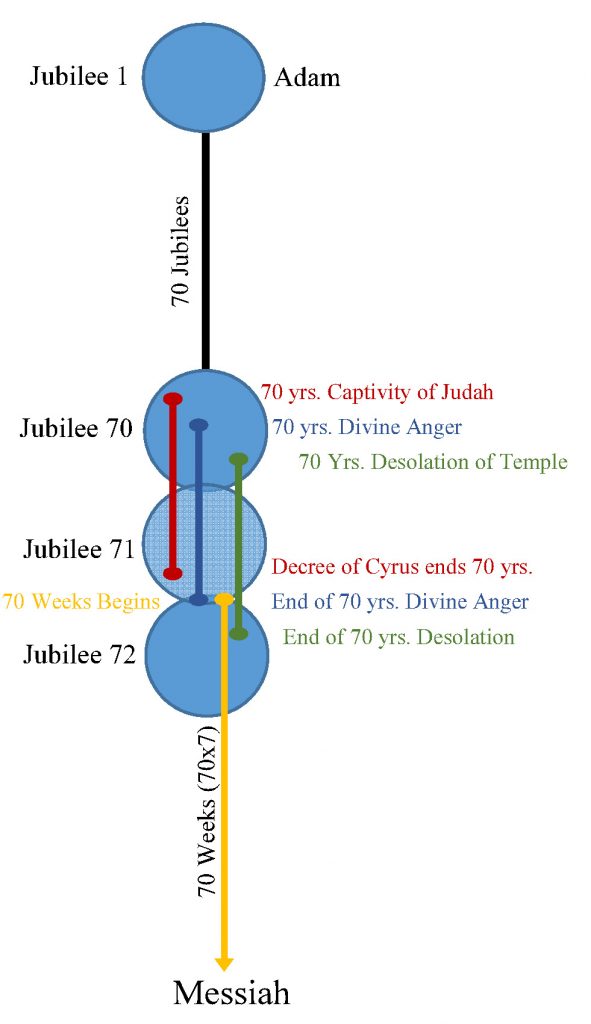 For those who might be wondering it was no accident that Yahweh waited until the 2nd year of Darius to lift his 70 years of Divine anger. The related Biblical chronolgy proves this. As I’ve shown in my book The Jubilee Code: Prophetic Milestones in Yahweh’s Redemptive Plan, (free book download here) the 2nd year of Darius (Hystaspes) marked an important pivot point in the Yahweh’s redemptive plan for mankind. 520 BC was the end of the 71st and the beginning of the 72nd jubilee cycle from Adam. This date also marked the end of the 2nd of three separate 70 year periods of time which all had their origins in the 70th Jubilee.
For those who might be wondering it was no accident that Yahweh waited until the 2nd year of Darius to lift his 70 years of Divine anger. The related Biblical chronolgy proves this. As I’ve shown in my book The Jubilee Code: Prophetic Milestones in Yahweh’s Redemptive Plan, (free book download here) the 2nd year of Darius (Hystaspes) marked an important pivot point in the Yahweh’s redemptive plan for mankind. 520 BC was the end of the 71st and the beginning of the 72nd jubilee cycle from Adam. This date also marked the end of the 2nd of three separate 70 year periods of time which all had their origins in the 70th Jubilee.
In other words, you could see this chronology as represented in the Biblical record as 70 jubilee cycles from Adam, then 70 years of Divine anger, at the end of which began Yahweh’s word (dabar) was given that started the 70 Seven’s countdown to the Messiah Yeshua. (70 Jubilees > 70 years > 70 Sevens = Messiah)
And to wrap this all up with the contextual finality that demands we pay attention; we have a third witness in Ezra 6 to the “word” of Yahweh as given through the prophets Haggai and Zechariah. For those of you who must have a “commandment” note in this passage that the “word” of Yahweh through Haggai and Zechariah is described a commandment (ta’am).
Ezra 6:14-15
4 And the elders of the Jews builded, and they prospered through the prophesying of Haggai the prophet and Zechariah the son of Iddo. And they builded, and finished it, according to the commandment [ta’am] of the God of Israel, and according to the commandment of Cyrus, and Darius, and Artaxerxes king of Persia. 15 And this house was finished on the third day of the month Adar, which was in the sixth year of the reign of Darius the king.
This passage then confirms that the dabar of Yahweh was not just a “word” but as seen from the witness of Ezra, this word was also considered a ta’am which is translated in the Bible as a decree or commandment.
Yahweh’s Word begins the Countdown
As you consider the implications of the information, I’ve shared in this article I hope it will challenge you to give Yahweh, the living God of the Bible, the credit He deserves for His part in the Bible’s most important prophecy.
I think it is worth remembering that Revelation 19:10 reminds us that the “spirit of prophecy” is the testimony of Yeshua – that is – Yahweh’s Salvation (Yeshua means Yahweh’s Salvation). Daniel 9 is the Bible’s most detailed testimony of Yahweh’s Salvation, as such why would we expect its countdown (terminus a quo) to begin with anything less than the very word of Him who gave us the prophecy.
Maranatha!
Next Time
Yahweh willing, next time in Daniel 9: What Time is It? we’ll explore how the prophecy of 70 Sevens keeps time. Does Daniel 9 give a specific measure of time to be used in calculating its “sevens”? What about those who claim Gen. 29:27-28 uses the term shabuwa’ to refer to a period of seven years, thus the “sevens” of Daniel 9 should also be understood as periods of 7 years? Or how about a so called “prophetic year” of 360 days? Was there really ever such a year in Biblical history? I hope you’ll join me next time as we put to rest some of these myths about Biblical “time”.
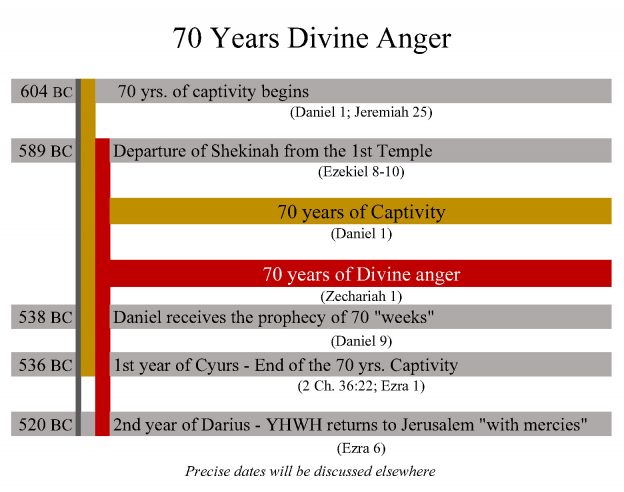
Daniel 9: Building Jerusalem
Heaven forbid, but let’s say for arguments sake that Washington, D.C. was destroyed on December 22 of this year. Then after all the dust settled and events stabilized Congress reconvened to vote on the city’s reconstruction. What particular reconstruction efforts would be considered rebuilding Washington, D.C.? Could you choose just one reconstruction effort? Would rebuilding the streets, bridges, and other infrastructure be considered “building” D.C.? How about Congress, the White House, and the Supreme Court? Would reconstruction of these iconic symbols of America’s government also be considered, “rebuilding” the city of Washington, D.C.?
Daniel 9 and Rebuilding Jerusalem
Today, I want to consider the 2nd temple era reconstruction efforts of Jerusalem in a similar light. 70 years after Nebuchadnezzar razed the city and destroyed Solomon’s temple, Cyrus of Persia gave a decree which allowed the Jewish people to return and build Jerusalem. This rebuilding effort included the reconstruction of the temple.
But there is a rub…
Today most leading teachers on the prophecy of Daniel 9 claim that rebuilding the 2nd Temple was not part of rebuilding the city of Jerusalem as described in Daniel 9:25. Is this an accurate understanding of the Biblical record? Today we will explore this most important subject.
First take a look at Daniel 9:25 then compare it to the following quotes by Thomas Ice, David Reagan, and Joel Richardson:
Daniel 9:25
25 Know therefore and understand, that from the going forth of the commandment to restore and to build Jerusalem unto the Messiah the Prince shall be seven weeks,…
Now here are the explanations of Thomas Ice, David Reagan, and Joel Richardson on “decree” of Daniel 9:25a:
Thomas Ice
Artaxerxes’ Decree
It is clear to me that of all the options available, the only decree that specifically fits the statements of Daniel 9:25 is the one by Artaxerxes given in 444 B.C. as recorded in Nehemiah 2:1-8. Why? Because decree one and two relate to rebuilding the Temple. Only decree three speaks specifically of Jerusalem (Thomas Ice – The Seventy Weeks of Daniel – – For the full context of this quote please see the following Link)
David Reagan
-
- 445 B.C. — Artaxerxes issued a decree to Nehemiah to rebuild the walls of Jerusalem (Nehemiah 2:1-8).
On the surface, the third decree, the one issued to Nehemiah, seems to be the most obvious candidate for the starting date of the prophecy, for it is the only one that specifically relates to the rebuilding of the city. For that reason, most commentators have selected it as the beginning of the 70 weeks of years. (David Reagan, Daniel’s 70 Weeks of Years – – For the full context of this quote please see the following Link)
Joel Richardson
A. The only position that literally fulfills the requirements of the passage seems to be thedecree from Artaxerxes as recorded in Nehemiah 2:1-8,17-18 given on March 5, 444 B.C….
D. Only one decree matches or fulfills the Scriptural criterion of a decree issued specifically to rebuild the city. (Joel Richardson, Daniel’s 70 Weeks: An Introduction – – For the full context of this quote please see the following Link)
A Distinction without a Difference
In the quotes above, notice how the authors claim a very narrow definition of building “Jerusalem”. If you read the fuller context of their quotes, you’ll find that they make the arbitrary distinction between building Jerusalem (the city) and building the temple of Jerusalem. Just think about the logic of that for a second. Is not the temple part of the city of Jerusalem? Why do the authors above claim that building the walls and streets of the city is building Jerusalem, yet the reconstruction of Yahweh’s house, the very beating heart of Jerusalem is not part of building the city?
Clearly, Daniel 9:25 makes no such distinction, so why have these respected authors made such a distinction? What is the basis for their claims? Frankly, I don’t know because as I will show you, the Biblical record does not support such a claim.
First let’s start with the context of Daniel 9 and Daniel’s petition to YHWH as found in verses 9-20:
Daniel 9:16-20
16 O Lord, according to all thy righteousness, I beseech thee, let thine anger and thy fury be turned away from thy city Jerusalem, thy holy mountain:
because for our sins, and for the iniquities of our fathers, Jerusalem and thy people are become a reproach to all that are about us.
17 Now therefore, O our God, hear the prayer of thy servant, and his supplications, and cause thy face to shine upon thy sanctuary that is desolate, for the Lord’s sake.
18 O my God, incline thine ear, and hear; open thine eyes, and behold our desolations, and the city which is called by thy name:
for we do not present our supplications before thee for our righteousnesses, but for thy great mercies.
19 O Lord, hear; O Lord, forgive; O Lord, hearken and do; defer not, for thine own sake, O my God: for thy city and thy people are called by thy name.
20 And whiles I was speaking, and praying, and confessing my sin and the sin of my people Israel, and presenting my supplication before YHWH my God for the holy mountain of my God;
Notice from the perspective of Daniel, Jerusalem, (the city) was Yahweh’s “holy mountain”. This statement demands we ask, why? Why was Jerusalem the city considered Yahweh’s “holy mountain”. From an Old Testament perspective Jerusalem was Yahweh’s “holy mountain” because this was the place Yahweh choose to meet with mankind. It was the place “called by” His holy name. We get that sense from reading Daniel’s prayer, don’t we? Verse 17 & 18 clearly associates the “desolation” of Yahweh’s sanctuary with the “desolation” of the city and its people. So, if the desolation of the city was part and parcel with the desolation of the temple, would the reconstruction of the temple also be part and parcel with the city’s reconstruction?
Building the Temple was Building Jerusalem
To get a firmer idea of the Biblical association between the house of Yahweh and the city of Jerusalem let’s look at the words of Yahweh concerning Cyrus of Persia and his divine impetus to rebuild Jerusalem and the temple. Notice how the two are clearly associated in this passage:
Isaiah 44:28
28 That saith of Cyrus, He is my shepherd, and shall perform all my pleasure: even saying to Jerusalem, Thou shalt be built; and to the temple, Thy foundation shall be laid.
Look now at the fuller context of Isaiah 45 to get a better sense of how Yahweh, through the prophet Isaiah, describes Cyrus’ decree to rebuild the temple and city of Jerusalem.
Isaiah 45:1
Thus saith YHWH to his anointed, to Cyrus, whose right hand I have holden, to subdue nations before him; and I will loose the loins of kings, to open before him the two leaved gates; and the gates shall not be shut;….
11 Thus saith YHWH, the Holy One of Israel, and his Maker, Ask me of things to come concerning my sons, and concerning the work of my hands command ye me. 12 I have made the earth, and created man upon it: I, even my hands, have stretched out the heavens, and all their host have I commanded. 13 I have raised him up in righteousness, and I will direct all his ways: he shall build my city, and he shall let go my captives, not for price nor reward, saith YHWH of hosts.
From the above passage it is rather difficult to argue (as claimed by Mr. Ice, Mr. Reagan, and Richardson) that the decree of Artaxerxes is the only decree which “specifically” dealt with rebuilding the city of Jerusalem. For reasons I’ll explain more fully later, I don’t believe that Cyrus’ decree was the “decree” of Daniel 9:25. Nevertheless, those who claim the decree of Artaxerxes was the only decree that “specifically” decreed the rebuilding of the “city” of Jerusalem are certainly incorrect in this claim.
Further as Isaiah 45:1-13 describes, Yahweh rose up Cyrus to build his city and let his captives go free. This building of the city was centered around the restoration of Yahweh’s desolate sanctuary. This is confirmed in the book of Ezra to which we will now turn.
Ezra 4 and the Building of Jerusalem
The passage below is focused on the efforts of the Jewish people to reconstruct Yahweh’s desolate sanctuary. For context sake, keep in mind these events take place after the decree of Cyrus in 536 BC. As you read the passage below also keep in mind the passage acknowledges that the enemies of the Jewish people harassed their efforts to build the temple from the reign of Cyrus until the reign of Darius. Further context shows that this was roughly the years 536 to 520 BC.
More particularly notice that in the eyes of those trying to stop the construction of the temple, they considered building the temple – building Jerusalem.
Ezra 4:1-5 JV Ezra 4:1 Now when the adversaries of Judah and Benjamin heard that the children of the captivity builded the temple unto YHWH God of Israel; 2 Then they came to Zerubbabel, and to the chief of the fathers, and said unto them, Let us build with you: for we seek your God, as ye do; and we do sacrifice unto him since the days of Esarhaddon king of Assur, which brought us up hither. 3 But Zerubbabel, and Jeshua, and the rest of the chief of the fathers of Israel, said unto them, Ye have nothing to do with us to build an house unto our God; but we ourselves together will build unto YHWH God of Israel, as king Cyrus the king of Persia hath commanded us. 4 Then the people of the land weakened the hands of the people of Judah, and troubled them in building, 5 And hired counsellors against them, to frustrate their purpose, all the days of Cyrus king of Persia, even until the reign of Darius king of Persia.
Ezra 4:12-13 12 Be it known unto the king, that the Jews which came up from thee to us are come unto Jerusalem, building the rebellious and the bad city, and have set up the walls thereof, and joined the foundations. 13 Be it known now unto the king, that, if this city be builded, and the walls set up again, then will they not pay toll, tribute, and custom, and so thou shalt endamage the revenue of the kings.
Ezra 4:17-24 17 Then sent the king an answer unto Rehum the chancellor, and to Shimshai the scribe, and to the rest of their companions that dwell in Samaria, and unto the rest beyond…
21 Give ye now commandment to cause these men to cease, and that this city be not builded, until another commandment shall be given from me….
23 Now when the copy of king Artaxerxes’ letter was read before Rehum, and Shimshai the scribe, and their companions, they went up in haste to Jerusalem unto the Jews, and made them to cease by force and power. 24 Then ceased the work of the house of God which is at Jerusalem. So it ceased unto the second year of the reign of Darius king of Persia.
As you see Ezra 4 opens with the Jewish people’s efforts to restore the temple and the harassment of those trying to stop this effort which they considered building the city. Finally, in the reign of a Persian “Artaxerxes” the enemies of the Jewish people found a willing ear and this Artaxerxes gave a commandment that “this city be not builded”. Ezra 4 then closes with the devastating words: “then ceased the work on the house of God which is at Jerusalem.” So, it ceased unto the 2nd year of the reign of Darius, king of Persia.”
Building the Temple was Building Jerusalem
Contrary to the well-intentioned but unsupported claims by Mr. Ice, Mr. Reagan, and Mr. Richardson, that building the temple was not building Jerusalem, we see from the context of the quoted verses above that in the eyes of Yahweh, Daniel, Cyrus, and the enemies of the Jewish people, building the temple was indeed building Jerusalem. Further Ezra 4 makes plain that “Artaxerxes” decreed that the “city be not builded” concerned primarily the reconstruction efforts of the Jewish people towards the temple. This decree stayed in effect until the 2nd year of Darius.
So, what happened in the 2nd year of Darius that changed the fortunes of the Jewish people? What event could have caused the Jewish people to disregard the decree of the Artaxerxes and restart construction on Jerusalem and the temple?
What happened was a “word” (Hebrew dabar) was given that profoundly changed the vector of events. As we explore this subject further, you’ll see that this pivotal event of the 2nd temple era is completely overlooked by the vast majority of prophecy teachers and scholars because they arbitrarily choose to redefine what constituted rebuilding Jerusalem. As we will see, this foundational error has led to an array of interpretational errors which have skewed the redemptive nature of this important prophecy.
A Word To Restore and Build
So you have a crystal clear understanding of the context here. Remember Cyrus’ decree which allowed the Jewish people to return to Jerusalem and build the city (including the reconstruction of the temple) was given roughly in the year 536 BC. For the next 16 years until the 2nd year of Darius (son of Hystaspes) the Jewish efforts to rebuild the city – i.e. Yahweh’s holy sanctuary, were unsuccessful. As just noted above, in fact, a Persian king Artaxerxes at some point previous to the 2nd year of Darius (520 BC), stopped construction of the city and its temple.
Then something happened which unaccountably is ignored by Mr. Ice, Mr. Reagan, and Mr. Richardson, as well as the vast majority of Biblical scholars today. A Word of Yahweh was given that commanded the Jewish people to return and build.
Yahweh willing my next article will explore this “word” to restore and build Jerusalem and explain why this “word”, given by Yahweh the living God of the Bible is the clearest and most consequential choice for consideration of the so called “decree” to restore and build Jerusalem of Daniel 9:25.
Maranatha!
Daniel 9: What is Your Foundation?
If I told you that I believed the 2nd coming of Christ was going to take place next year because I heard several of today’s leading prophecy teachers (whom I respect) are making the claim – what would you think? What would you think if I further told you, that I could not verify their claims from the Bible but I believed them because they were really decent, smart, and sincere?
If I ever were to make such claims, I hope you’d have the good sense to be skeptical and instead of taking my word for it, make sure you search the Scriptures to “see if these things be so”.
Now I certainly don’t have any special insight about the return of Yeshua next year and I don’t know of any prophecy teacher making such claims. Inexplicably thought, most of today’s smart and sincere expositors of Daniel 9 and the 70 Sevens prophecy, expect you take their word (without Biblical evidence) for the starting point of the Bible’s countdown to the first coming of Christ.
Don’t believe me? Let me show you what I’m talking about. Most of you know or have heard of Thomas Ice, David Reagan, and Joel Richardson. By most standards, these men are well-spoken, smart, and sincere believers and teachers of the Bible’s prophetic word. Each one of them though, when it comes to Daniel 9 and the prophecy of 70 Sevens, instead of laying a sound Biblical chronological foundation for the starting point of the prophecy of 70 Sevens, simply ask you to take their word for it. Here take a look:
Thomas Ice
“Artaxerxes’ Decree
It is clear to me that of all the options available, the only decree that specifically fits the statements of Daniel 9:25 is the one by Artaxerxes given in 444 B.C. as recorded in Nehemiah 2:1-8. Why? Because decree one and two relate to rebuilding the Temple.”
(Thomas Ice – The Seventy Weeks of Daniel – – For the full context of this quote please see the following Link)
David Reagan
-
- “445 B.C. — Artaxerxes issued a decree to Nehemiah to rebuild the walls of Jerusalem (Nehemiah 2:1-8).
On the surface, the third decree, the one issued to Nehemiah, seems to be the most obvious candidate for the starting date of the prophecy, for it is the only one that specifically relates to the rebuilding of the city. For that reason, most commentators have selected it as the beginning of the 70 weeks of years. ”
(David Reagan, Daniel’s 70 Weeks of Years – – For the full context of this quote please see the following Link)
Joel Richardson
“The only position that literally fulfills the requirements of the passage seems to be the decree from Artaxerxes as recorded in Nehemiah 2:1-8,17-18 given on March 5, 444 B.C….
-
- Only one decree matches or fulfills the Scriptural criterion of a decree issued specifically to rebuild the city.”
(Joel Richardson, Daniel’s 70 Weeks: An Introduction – – For the full context of this quote please see the following Link)
- Only one decree matches or fulfills the Scriptural criterion of a decree issued specifically to rebuild the city.”
Here is the trouble with the statements above. What the above well meaning authors fail to tell you is that there are at least two “Artaxerxes” mentioned in the Bible and at least three Persians who bear this throne name. Further complicating the issue is that word “Artaxerxes” originated as a Median administrative title which was then later used by Persian kings as a throne name. So even though Greek sources identify three Persian kings with the throne name of “Artaxexes”, the word may well have been used as an administrated title by Meads and Persians before it became a throne name taken by Artaxerxes I (Longimanus).
I find it Inexplicable that Mr. Ice, Mr. Reagan, and Mr. Richardson assert that Artaxerxes I (Longimanus) was the Persian king who gave a decree to “restore and build Jerusalem” in 444-445 BC, yet they make absolutely no effort to apprise their readers of the critical facts which let them to this conclusion. They simply make this foundational statement without a single Biblical chronological reference to back them up. Collectively, these men represent nearly a century of accumulated Biblical knowledge, yet none of their writings to date (that I’m aware of) provide a single piece of evidence to back up the most important foundational claims they are making regarding Artaxerxes’ decree and the date 444-445 BC.
Think about that for a moment. This date (444-445 BC) is the fixing point of their calculations for the countdown to the coming of the Messiah. All three authors admit the importance of the starting point of the 70 Sevens (Terminus a Quo) to a proper interpretation of the 70 Sevens. Further, each of the authors also acknowledges the profound importance the prophecy of 70 Sevens has to our understanding of Yeshua’s first coming and our understanding of His second coming as well. Yet, each fails to build his interpretation upon a solid Biblical foundation, rather they all, in respect to this critical subject, defer to the opinion of their peers.
Why is that? Why are most of today’s leading prophecy teachers like Mr. Ice, Mr. Reagan, and Mr. Richardson loath to give you a solid Biblical chronological foundation for their Terminus a Quo of Daniel 9 and the prophecy of 70 Sevens?
I won’t speculate as to their motivations but what I will say is that each day, each month, and each year that goes by, that they do not address this important subject, it undermines their credibility and ultimately the credibility of the Bible’s most important prophetic utterance. The only prophecy, it’s important to note, that provides a specific and datable timeline for the coming of the Messiah Yeshua.
I encourage you to ask them why they haven’t provided the basic Biblical fact to back up their claims. I’ve personally asked two of these authors how they arrived at their conclusions regarding this critical 2nd temple chronology of Ezra, Nehemiah, and their chronological relationship to the Biblical “Artaxerxes”. Neither could provide a single Biblical fact to back up their claims.
Do you want to know just how well your prophecy teacher understands the basic foundational chronology upon which they claim Artaxerxes Longimanus was the king who gave the commandment “to restore and build Jerusalem” of Daniel 9:25? Ask them to explain to you the following questions related to the 2nd temple era of the Bible. If they can’t give you clear and reasonable answers then you know they really don’t have the depth of understanding necessary to make definitive claims about this important prophecy.
Here are questions every prophecy teacher on Daniel 9 should have a grasp of in order to make any claim about the Terminus a Quo of Daniel 9:
- Who is the Artaxerxes of Ezra 4 and what does the chronology related to that king tell us about how the term is used in the Bible?
- What does the use of the Medio-Persian word Arta tell us about the use of Arta-xerxes in the Bible?
- Who was the Artaxerxes of Ezra 6 that gave a commandment to restore the rebuild the temple that was completed in the 6th year of Darius?
- Explain the chronological transition from the temple completion in the 6th year of Darius I to Ezra’s excursion to Jerusalem in the 7th year of a Persian king known as “Artaxerxes”.
- How could Ezra still be alive in the 20th year of Artaxerxes Longimanus when his father died in 19th year of Nebuchadnezzar?
- How could the Priests and Levites who officiated in the days of Joshua and Zerubbabel be still alive in the 20th year of Artaxerxes Longimanus?
- Explain the 1st and 2nd generational relationship between the Priests and Levites of Nehemiah 10 and 12.
- Who is the Mordecai of Ezra 2 and Nehemiah 7, how is this man related to Esther and why is this important to understanding the chronology of the 2nd temple era and the Persian king “Artaxerxes”?
The prophecy of 70 Sevens is the Bible’s definitive proof given to the Jewish people (and all mankind) to prove that Yeshua of Nazareth was the promised Redeemer of the Old Testament. I challenge you to carefully read Mr. Ice’s, Mr. Reagan’s, and Mr. Richardson’s papers on Daniel 9 and the 70 Sevens that I’ve linked in this article and see if you can find a single Biblical fact you can use to verify their claims that the Persian Artaxerxes I (Longimanus) in his 20th year (444-445 BC) was the “Artaxerxes” who gave the dabar (word) to “restore” (return) and build Jerusalem” described in Daniel 9:25. If you cannot, then I encourage you to write and ask them to explain their position with real Biblical evidence not just the well-meaning opinions of their peers. I want to stress here that I believe all three of these men are sincere believers who have a passion for sharing the Bible’s prophetic words. That being said, their interpretation of this wonderful prophecy is an illustrative example of what happens when you don’t laid a solid Biblical foundation for your teachings and beliefs.
In Closing
I’ll leave you with a quote from each of these authors showing in their own words just how important this prophecy is to our Biblical world view. As you read their well-spoken words, ask yourself why, if this prophecy is as important as they say it is, didn’t take the time to establish it upon a rock-solid Biblical foundation as Yahweh, the living God of the Bible clearly intended? Also, ask yourself if they can’t provide you with verifiable Biblical facts related to their claims that Artaxerxes Longimanus gave the decree which began the Bible’s countdown to the Messiah, (no matter how well intentioned) what confidence can you place in their other conclusions about the prophecy, be it the 1st or 2nd coming of Christ?
To My Peers
Mr. Ice, Mr. Reagan, and Mr. Richardson I sincerely hope you’ll take the criticisms expressed in this article in the spirit in which they are intended and use them to sharpen your exposition of this wonderful prophecy. Your unsupported assumptions regarding Artaxerxes Longimanus undermine the credibility of your claims about Yeshua and His fulfillment of the Bible’s most important prophecy. It is time for you and your peers to remedy this serious deficiency.
Thomas Ice
“One of the most important prophecy passages in the whole Bible is that of God’s prophecy given to Daniel in Daniel 9:24-27. This passage constitutes one of the most amazing prophecies in all the Bible. If worked out logically, this text is both seminal and determinative in the outworking of one’s understanding of Bible prophecy.”
Joel Richardson
“The prophecy of 70 weeks is one of the most critically important eschatological passages in the Bible, which the Church of the last days must properly interpret and understand.”
“F. Several critical issues are at stake in the proper interpretation of this passage.
-
-
- 1. At stake is the recognition of the present-tense, ongoing election and calling of the Jewish people.
2. At stake is the nature of this final future period of tribulation as necessary to accomplish all of the following specifically on behalf of Israel:
- 1. At stake is the recognition of the present-tense, ongoing election and calling of the Jewish people.
-
-
-
- “To finish the transgression”
- “To make an end of sin”
- “To make atonement for iniquity”
- “To bring in everlasting righteousness”
- “To seal up vision and prophecy”
- “To anoint the most holy place”
3. At stake is the Church’s recognition of the defining timing markers given to us by the Holy Spirit in Daniel and by Jesus personally.4.At stake is a proper understanding of the very nature of the Kingdom of God.”
-
-
-
David Reagan
“One of the most remarkable and important prophecies in the Bible is found in Daniel 9:24-27. It is the cornerstone of Messianic prophecy because it establishes the timing of both the First and Second Advents of the Messiah.”
Next Time – A WORD to rebuild Jerusalem
Yahweh willing next time I look at the assertions made by Mr. Reagan, Mr. Ice, and Mr. Richardson about the “commandment” of Daniel 9:25. This commandment they claim referred to “building Jerusalem” which they arbitrarily limit to the reconstruction of the city walls and other infrastructure. Each of these authors claims that only the decree of “Artaxerxes” in 444-445 BC qualifies as a command to rebuild the city of Jerusalem and by their definition rebuilding the temple was not part of rebuilding Jerusalem. Is this an accurate point of view that can be supported from the Biblical record? I think you’ll be surprised at what the Biblical record reveals.
And what about the divine “word” Yahweh the living God of the Bible gave to the Jewish people to “return” and build? A word witnessed by Zechariah, Haggai, and Ezra? Why is this central event of the 2nd Temple era not even mentioned by Mr. Ice, Mr. Reagan, or Mr. Richardson, even though the “word” (dabar) of Yahweh is mentioned three other times in Daniel 9?
As we explore these important subject I think you’ll be surprised at how much the context of the 2nd temple era illuminates the starting point of Daniel 9 and the “word” to restore and build Jerusalem.
Maranatha!
Further Food for Thought:
Why would a prophetic passage so exquisitely designed by Yahweh be given such an uncertain starting point as proposed by the authors above? Here are just a few amazing facts about Daniel 9 that shows why it is the crowning prophetic passage of the Bible and why its Terminus a Quo deserves a better foundation than well meaning assumptions:
Daniel 9:23-27 consists of:
- 100 Hebrew words designed in a manner to showcase the “7 sevens” (49) as the numerical center of the passage. In other words, Daniel 9:23-27 is 49+2+49 words. The two words sheba shebuw’ah in the numerical center of this passage themselves are an expression of 49.
- 100 Hebrew words consisting of 418 Hebrew letters designed to showcase the 10 letters that spell 7 sevens. These 10 letters are proceeded by 204 letters and 204 letters follow them. (204+10+204) In other words the 49 words that proceed the “7 sevens” in the numerical center of this passage, themselves consists of exactly 204 letters. The last 49 words of the passage also consist of 204 letters.
- The word Seven in the numerical center of Daniel 9:23-27 is proceed by 49 words.
- That same word Seven in verse 25 is the 13th word of verse 25 and it also is proceeded by the 49 letters of verse 25.
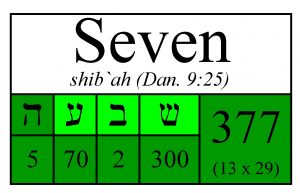 The Hebrew word “seven” in verse 25 is the 13 word of that verse. This word in Hebrew has the numerical value of 377. (13×29)
The Hebrew word “seven” in verse 25 is the 13 word of that verse. This word in Hebrew has the numerical value of 377. (13×29)- The Biblical calendar used by the Jewish people for thousands of years is lunar/solar. This lunar solar calendar typically has 12 lunar month but once very three years it is reconciled by the intercalary 13th month (13 x 29.53). If one were to calculate the 70 Sevens (490) units of time using this 13th month as a basis, those 70 Sevens would be a equal to a period of 515.05 years. From for “word” (dabar) to restore and build Jerusalem given by Yahweh, the living God of the Bible in the 2nd year of Darius as witnessed by Haggai, Zechariah, and Ezra there it are precisely 515 years to the winter of 5 BC. By many conservative scholars calculations, 9 months later in the fall of 4 BC Yeshua of Nazareth was born. If the birth of Christ took place in the fall of 4 BC then his conception – that point when Yahweh’s Salvation – Yeshua – became flesh – would have taken place in the winter of 5 BC.
For a more detailed explanation of the incredible design of Daniel 9 please see my related article: The Numerical Structure of Daniel 9 and the Prophecy of 70 Sevens
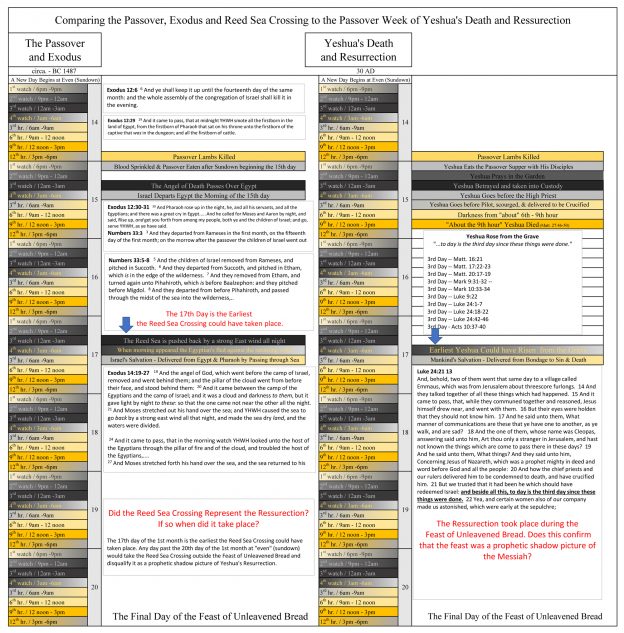
The Passover, Resurrection, & Reed (Red) Sea Crossing
I know many of you who read this blog believe as I do that the 7 day period of time during which the Passover, the Feast of Unleavened Bread, and First-fruits are celebrated were given by YHWH as a prophetic shadow pictures (divine appointments) of the redemptive work of Yeshua at Calvary.
From my understanding of the Biblical record the Reed Sea crossing is a picture of the Resurrection. This is alluded to in some of the passage quote below.
For those of you who believe that Israel’s crossing the Reed Sea was a picture of the resurrection and that this prophetic shadow picture took place at the Gulf of Aqaba, I am genuinely interested in how you see those events playing out chronologically.
As Paul told the Corinthians without the resurrection our faith is vain. If Israel’s crossing over the Reed Sea was a picture of their salvation and served as a prophetic type for Yeshua’s resurrection and mankind’s salvation, how is that event justified as a prophetic type if it took place outside the “mow’ed” or divine appoint of 7 day Feast of Unleavened Bread?
My chart tonight shows a chronological comparison of both events. It’s not perfect but it gives a good idea of some of the challenges involved. I leave you tonight with some Scriptural references for further reflection starting with the words of Paul to the Corinthians. The rest of the references are below the chart. Your thoughts and opinions are welcomed.
Now if Christ be preached that he rose from the dead, how say some among you that there is no resurrection of the dead? But if there be no resurrection of the dead, then is Christ not risen: And if Christ be not risen, then is our preaching vain, and your faith is also vain. Yea, and we are found false witnesses of God; because we have testified of God that he raised up Christ: whom he raised not up, if so be that the dead rise not….. (1 Corinthians 15:12-15)
Our fathers understood not thy wonders in Egypt; they remembered not the multitude of thy mercies; but provoked him at the sea, even at the Red sea. Nevertheless he saved them for his name’s sake, that he might make his mighty power to be known. He rebuked the Red sea also, and it was dried up: so he led them through the depths, as through the wilderness. And he saved them from the hand of him that hated them, and redeemed them from the hand of the enemy. (Psalm 106:7-10)
FREE BOOK DOWNLOAD
For I delivered unto you first of all that which I also received, how that Christ died for our sins according to the scriptures; And that he was buried, and that he rose again the third day according to the scriptures:… (1 Corinthians 15:3-4)
But now is Christ risen from the dead, and become the firstfruits of them that slept. For since by man came death, by man came also the resurrection of the dead. For as in Adam all die, even so in Christ shall all be made alive. But every man in his own order: Christ the firstfruits; afterward they that are Christ’s at his coming. (1 Corinthians 15:20-23)
Else what shall they do which are baptized for the dead, if the dead rise not at all? why are they then baptized for the dead? (1 Corinthians 15:29)
Blessed be the Lord God of Israel; for he hath visited and redeemed his people, And hath raised up an horn of salvation for us in the house of his servant David; As he spake by the mouth of his holy prophets, which have been since the world began: That we should be saved from our enemies, and from the hand of all that hate us; To perform the mercy promised to our fathers, and to remember his holy covenant; The oath which he sware [Shaba] to our father Abraham, (Luke 1:68-73)
But God commendeth his love toward us, in that, while we were yet sinners, Christ died for us. Much more then, being now justified by his blood, we shall be saved from wrath through him. (Romans 5:8-9)
Moreover, brethren, I would not that ye should be ignorant, how that all our fathers were under the cloud, and all passed through the sea; And were all baptized unto Moses in the cloud and in the sea; And did all eat the same spiritual meat; And did all drink the same spiritual drink: for they drank of that spiritual Rock that followed them: and that Rock was Christ. (1 Corinthians 10:1-4)
Know ye not, that so many of us as were baptized into Jesus Christ were baptized into his death? Therefore we are buried with him by baptism into death: that like as Christ was raised up from the dead by the glory of the Father, even so we also should walk in newness of life. For if we have been planted together in the likeness of his death, we shall be also in the likeness of his resurrection: (Romans 6:3-5)
They forgat God their savior [yasha], which had done great things in Egypt; Wondrous works in the land of Ham, and terrible things by the Red sea. (Psalm 106:21-22)
But after that the kindness and love of God our Saviour toward man appeared, Not by works of righteousness which we have done, but according to his mercy he saved us, by the washing of regeneration, and renewing of the Holy Ghost; Which he shed on us abundantly through Jesus Christ our Saviour. (Titus 3:4-6)
Buried with him in baptism, wherein also ye are risen with him through the faith of the operation of God, who hath raised him from the dead. (Colossians 2:12)
For Christ also hath once suffered for sins, the just for the unjust, that he might bring us to God, being put to death in the flesh, but quickened by the Spirit: By which also he went and preached unto the spirits in prison; 20 Which sometime were disobedient, when once the longsuffering of God waited in the days of Noah, while the ark was a preparing, wherein few, that is, eight souls were saved by water. The like figure whereunto even baptism doth also now save us (not the putting away of the filth of the flesh, but the answer of a good conscience toward God,) by the resurrection of Jesus Christ: (1 Peter 3:18-21)
For I delivered unto you first of all that which I also received, how that Christ died for our sins according to the scriptures; And that he was buried, and that he rose again the third day according to the scriptures:… (1 Corinthians 15:3-4)
Now if Christ be preached that he rose from the dead, how say some among you that there is no resurrection of the dead? But if there be no resurrection of the dead, then is Christ not risen: And if Christ be not risen, then is our preaching vain, and your faith is also vain. Yea, and we are found false witnesses of God; because we have testified of God that he raised up Christ: whom he raised not up, if so be that the dead rise not….. (1 Corinthians 15:12-15)
But now is Christ risen from the dead, and become the firstfruits of them that slept. For since by man came death, by man came also the resurrection of the dead. For as in Adam all die, even so in Christ shall all be made alive. But every man in his own order: Christ the firstfruits; afterward they that are Christ’s at his coming. (1 Corinthians 15:20-23)
Else what shall they do which are baptized for the dead, if the dead rise not at all? why are they then baptized for the dead? (1 Corinthians 15:29)
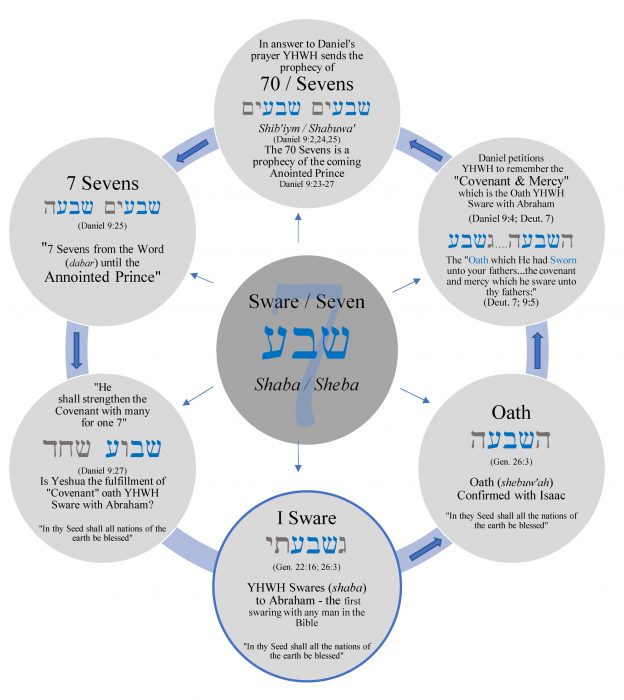
“Thy Son, Thy Only Son”
“Thy Son, Thy Only Son”
When you hear these words who or what do they make you think of? During this time of year many of you probably are reminded of John 3:16:
John 3:16-18
16 For God so loved the world, that he gave his only begotten Son, that whosoever believeth in him should not perish, but have everlasting life.
The apostle John also described Yeshua (Jesus) as “Lamb of God, which taketh away the sin of the world.” (John 1:29) Yeshua himself, the night before His death, kept the Passover with His disciples and explained to them that the Passover supper was in fact a symbol of His atonement for the sins of mankind.
Matthew 26:26-28
26 And as they were eating, Jesus took bread, and blessed it, and brake it, and gave it to the disciples, and said, Take, eat; this is my body. 27 And he took the cup, and gave thanks, and gave it to them, saying, Drink ye all of it; 28 For this is my blood of the new testament, which is shed for many for the remission of sins.
The author of Hebrews in chapter 10 was even more specific when he described the sacrificial rites of the law as but a “shadow of good things to come, and not the very image of the things…”
Indeed, the New Testament witness is clear and unequivocal that the sacrificial redemptive rites of the Torah were but examples of the one and only sacrifice worthy to cover the sins of Israel and mankind. That sacrifice was Yeshua.
Hebrews 9:28 – 10:12
28 So Christ was once offered to bear the sins of many; and unto them that look for him shall he appear the second time without sin unto salvation.
Hebrews 10:1
For the law having a shadow of good things to come, and not the very image of the things, can never with those sacrifices which they offered year by year continually make the comers thereunto perfect…..
10 By the which will we are sanctified through the offering of the body of Jesus Christ once for all. 11 And every priest standeth daily ministering and offering oftentimes the same sacrifices, which can never take away sins: 12 But this man, after he had offered one sacrifice for sins for ever, sat down on the right hand of God;
This being the Passover week when nearly 2000 years ago Yeshua, offered Himself as a sacrifice for our sins, I think it is important to remember the congruency with which the Torah and its sacrificial redemptive rites pointed us to the Messiah. In the first chapter of the first book of the New Testament, the apostle Matthew represented Yeshua as the 13th and 14th generation from Abraham.
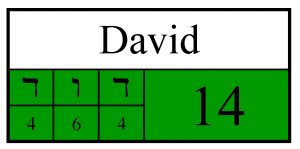 To a Jewish reader steeped in the Torah, this symbolism would have reminded them of the sacrificial rites of the Torah. This representation of Yeshua as both the 13th and 14th generation also congruently symbolized the Old Testament description of the Messiah as both a suffering servant (sacrificial rites of 13) and the kingship of David (David is the 14th generation in Matthew 1 and his name has the numerical value of 14).
To a Jewish reader steeped in the Torah, this symbolism would have reminded them of the sacrificial rites of the Torah. This representation of Yeshua as both the 13th and 14th generation also congruently symbolized the Old Testament description of the Messiah as both a suffering servant (sacrificial rites of 13) and the kingship of David (David is the 14th generation in Matthew 1 and his name has the numerical value of 14).
This symbolism is especially exemplified in the celebration of Passover. Did you know that the sacrificial redemptive rites of Passover as described in Numbers 28 highlighted 13 & 14 sacrifices? In fact, during this Passover week in ancient Israel, 13 sacrifices were required for each day of the feast. On the first day, though 13 sacrifices were offered, 14 were consumed.
You see, the Passover lamb was slain on the 14th of Nisan and then consumed that evening which began the 15th. So in other words, while the corporate priesthood was required to offer 13 sacrifices on the first day of Unleavened Bread, that day beginning at sundown, the 14th sacrifice (The Passover lamb) was consumed by all Israel.
The Binding of Isaac
While the words “Thy Son, Thy only Son” remind many of us of Yeshua and His death and resurrection on Passover, this week I wanted to take you back nearly 2000 years earlier than Yeshua’s death and resurrection to when these words were actually spoken in one of the first shadow pictures of YHWH’s redemptive plan for mankind.
Along the way, I will show you how, long before the sacrificial rites of 13 and 14 were given in the Torah, these numbers were encoded in another story of a father and son and their sacrifice. In the passage I’m going to share, the numbers 13 and 14 lay in wait as integral part of the numerical structure of this prophetic story. I personally believe this was done in order that one day they might show the congruency of YHWH’s redemptive plan for mankind through Yeshua of Nazareth.
You see the words “thy son, thy only son” come from Genesis 22 and one of the most moving stories of faith in the Bible. The Jewish people know this story as the Akedah (Binding) – the Binding of Isaac when Abraham was testing with task of sacrificing his son Isaac.
To really appreciate these words and their meaning to Abraham, we need a bit more back story. A decade or so earlier Abraham and Sarah could not conceive a child. Abraham at nearly 100 years old and Sarah at 90 years of age were past the normal age of bearing children. But YHWH had a plan for Abraham and made it clear that the following year, at what the Bible describes as the “set time” (mow’ed) they would have a son, they were to call his name Isaac, and he not Ishmael would be the promised seed.
Genesis 17:15-19, 21
15 And God said unto Abraham, As for Sarai thy wife, thou shalt not call her name Sarai, but Sarah shall her name be. 16 And I will bless her, and give thee a son also of her: yea, I will bless her, and she shall be a mother of nations; kings of people shall be of her. 17 Then Abraham fell upon his face, and laughed, and said in his heart, Shall a child be born unto him that is an hundred years old? and shall Sarah, that is ninety years old, bear? 18 And Abraham said unto God, O that Ishmael might live before thee!
19 And God said, Sarah thy wife shall bear thee a son indeed; and thou shalt call his name Isaac: and I will establish my covenant with him for an everlasting covenant, and with his seed after him….
21 But my covenant will I establish with Isaac, which Sarah shall bear unto thee at this set time [mow’ed] in the next year.
Genesis 18:17-19
17 And YHWH said, Shall I hide from Abraham that thing which I do; 18 Seeing that Abraham shall surely become a great and mighty nation, and all the nations of the earth shall be blessed in him? 19 For I know him, that he will command his children and his household after him, and they shall keep the way of YHWH to do justice and judgment; that YHWH may bring upon Abraham that which he hath spoken of him.
Isaac the Promised Seed and His “Resurrection”
Isaac was born the following year at the “set time” appointed by YHWH. Indeed, as I’ve shown in my book The Jubilee Code: Prophetic Milestones in Yahweh’s Redemptive Plan, Isaac’s birth came right on time in the 43rd Jubilee from Adam. (For the significance of this please see my book The Jubilee Code – Free Book Download.)
Keep in mind that Isaac was living proof of YHWH’s promise to Abraham that through his “seed” all nations of the earth would be blessed. Yet, here we are in Genesis 22, and YHWH is testing Abraham’s faith by asking him to take Isaac and sacrifice him on the mountains of Moriah.
Can you imagine what must have been going through Abraham’s mind? His precious son, his only son of Sarah and him, the very son that Yahweh had promised him in his old age, he was now being told take and offer as a sacrifice. Here is an excerpt of that poignant story:
Genesis 22:1-24
And it came to pass after these things, that God did tempt Abraham, and said unto him, Abraham: and he said, Behold, here I am.
2 And he said, Take now thy son, thine only son Isaac, whom thou lovest, and get thee into the land of Moriah; and offer him there for a burnt offering upon one of the mountains which I will tell thee of.
7 And Isaac spake unto Abraham his father, and said, My father: and he said, Here am I, my son. And he said, Behold the fire and the wood: but where is the lamb for a burnt offering? 8 And Abraham said, My son, God will provide himself a lamb for a burnt offering: so they went both of them together.
9 And they came to the place which God had told him of; and Abraham built an altar there, and laid the wood in order, and bound Isaac his son, and laid him on the altar upon the wood. 10 And Abraham stretched forth his hand, and took the knife to slay his son. 11 And the angel of YHWH called unto him out of heaven, and said, Abraham, Abraham: and he said, Here am I. 12 And he said, Lay not thine hand upon the lad, neither do thou any thing unto him: for now I know that thou fearest God, seeing thou hast not withheld thy son, thine only son from me. 13 And Abraham lifted up his eyes, and looked, and behold behind him a ram caught in a thicket by his horns: and Abraham went and took the ram, and offered him up for a burnt offering in the stead of his son. 14 And Abraham called the name of that place Jehovahjireh: as it is said to this day, In the mount of YHWH it shall be seen.
15 And the angel of YHWH called unto Abraham out of heaven the second time, 16 And said, By myself have I sworn [shaba], saith YHWH, for because thou hast done this thing, and hast not withheld thy son, thine only son: 17 That in blessing I will bless thee, and in multiplying I will multiply thy seed as the stars of the heaven, and as the sand which is upon the sea shore; and thy seed shall possess the gate of his enemies; 18 And in thy seed shall all the nations of the earth be blessed; because thou hast obeyed my voice.
Abraham is a wonderful example of faith and obedience. You see because of Abraham’s faith and obedience YHWH used him in an amazing way to bring about a critical part of His redemptive plan for mankind. Abraham’s willingness to obey YHWH and offer Isaac as a sacrifice was born out of a faith forged in obedience.
Abraham’s first recorded act of obedience was when at 75 years of age YHWH told him to pack up and leave his native home to journey to a new land which he promised him as an inheritance to him and his offspring. Then at 100 years of age, YHWH told Abraham and Sarah they’d have that son through whom all nations of the earth would be blessed. At first skeptical, Abraham found the faith to act on YHWH’s promise.
Then came the ultimate test of taking his precious son, his only son, and offering him as a sacrifice. The author of Hebrews describes it this way:
Hebrews 11:17-19
17 By faith Abraham, when he was tried, offered up Isaac: and he that had received the promises offered up his only begotten son, 18 Of whom it was said, That in Isaac shall thy seed be called: 19 Accounting that God was able to raise him up, even from the dead; from whence also he received him in a figure.
But Abraham had faith. As Genesis 22 describes and the author of Hebrews, Abraham believed! He knew that Isaac was the promised seed and because he believed YHWH he knew that whatever happened up on that mountain, both he and Isaac would be returning when it was all said and done.
As Hebrews 11:19 explains, Abraham in his faith knew that YHWH was able to raise Isaac from the dead, and in fact this story of Isaac’s sacrifice was a type or shadow of resurrection.
Isaac’s Resurrection a Shadow of the Promised Redeemer
Turns out that Abraham didn’t have to sacrifice Isaac. It was just one more test of his faith. Instead of Isaac, YHWH himself provided the sacrifice. That sacrifice was a ram caught in the thicket nearby and it was that ram which was placed upon the wood of the altar instead of Isaac.
Because of Abraham’s demonstration of faith YHWH swore (shaba) an oath with him that promised in part through Abraham’s “seed” all nations of the earth would be blessed. This swaring of an oath was in fact the first recorded oath that YHWH swore with any man in the Bible.
Genesis 22:1-24
15 And the angel of YHWH called unto Abraham out of heaven the second time, 16 And said, By myself have I sworn [shaba], saith YHWH, for because thou hast done this thing, and hast not withheld thy son, thine only son: 17 That in blessing I will bless thee, and in multiplying I will multiply thy seed as the stars of the heaven, and as the sand which is upon the sea shore; and thy seed shall possess the gate of his enemies; 18 And in thy seed shall all the nations of the earth be blessed; because thou hast obeyed my voice.
Genesis 26:3-4 3 Sojourn in this land, and I will be with thee [Isaac], and will bless thee; for unto thee, and unto thy seed, I will give all these countries, and I will perform the oath [shebuw’ah] which I sware[shaba] unto Abraham thy father; 4 And I will make thy seed to multiply as the stars of heaven, and will give unto thy seed all these countries; and in thy seed shall all the nations of the earth be blessed;
Three times in Genesis 22 YHWH calls out to Abraham identifying Isaac as “thy son, thy only son”. You can almost hear those words echoing down through the centuries. Abraham’s willingness to sacrifice His only son, would become a foreshadowing of YHWH’s redemptive purpose for mankind by the sacrifice of His own “only begotten son” Yeshua nearly 2000 years later.
A sacrifice that would take place on the very same mountains of Moriah. The Messianic redemptive picture of the “only son” is confirmed by the apostle John in one of the most well know New Testament Scriptures.
John 3:16-17 16 For God so loved the world, that he gave his only begotten Son, that whosoever believeth in him should not perish, but have everlasting life. 17 For God sent not his Son into the world to condemn the world; but that the world through him might be saved.
John 1:17-18 17 For the law was given by Moses, but grace and truth came by Jesus Christ. 18 No man hath seen God at any time; the only begotten Son, which is in the bosom of the Father, he hath declared him.
1 John 4:9-10 9 In this was manifested the love of God toward us, because that God sent his only begotten Son into the world, that we might live through him. 10 Herein is love, not that we loved God, but that he loved us, and sent his Son to be the propitiation for our sins.
This brings me back full circle to the central importance the Binding of Isaac plays in the Bible’s redemptive message, especially as it relates to the prophecy of 70 Sevens. Here are the words of Peter in Acts 3 where he describes the resurrection of Yeshua, the “son of God” and the covenant YHWH sware with Abraham, a covenant (oath) that promised, in part, that through Abraham’s “seed” all nations of the earth would be blessed.
Acts 3:25-26 25 Ye are the children of the prophets, and of the covenant which God made with our fathers, saying unto Abraham, And in thy seed shall all the kindreds of the earth be blessed. 26 Unto you first God, having raised up his Son Jesus, sent him to bless you, in turning away every one of you from his iniquities.
You see the covenant Peter is referring to here is the oath (shebuw’ah) that YHWH sware (shaba) with Abraham in Genesis 22:16. As I’ve exampled in many past articles and books, this “swaring of sevens” (the Hebrew word for sware can also means seven) with Abraham was the in fact the “covenant and mercy” Daniel referred to in Daniel 9:4. (For more on this please see my article Seven, 70, and Sevens: Daniel 9 and the Bible’s Messianic Symbolism)
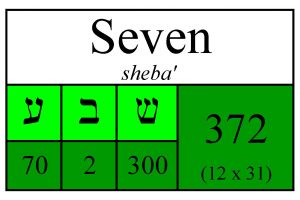
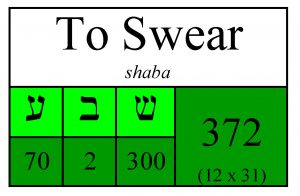 To help you wrap your mind around the amazing congruency of this oath of the covenant, the following chart provides a visual representation of the Hebrew words Sware / Seven and its relationship to oath YHWH sware with Abraham and the prophecy of 70 Sevens. Please note the Hebrew root shaba (sware) and Sheba’ (Seven) are phonetically identical words (spelled exactly the same in Hebrew).
To help you wrap your mind around the amazing congruency of this oath of the covenant, the following chart provides a visual representation of the Hebrew words Sware / Seven and its relationship to oath YHWH sware with Abraham and the prophecy of 70 Sevens. Please note the Hebrew root shaba (sware) and Sheba’ (Seven) are phonetically identical words (spelled exactly the same in Hebrew).
The Numerical Structure of the Bible’s Redemptive Message
My last article on the Numerical Structure of Daniel 9 and the 70 Sevens Prophecy showed that Daniel 9:23-27 was numerically structured to emphasize the 70 Sevens and the sacrificial redemptive symbolism of the numbers 13 & 14. This amazing prophetic passage which Daniel 9 grouped into 100 words was arranged to ensure that someday we would understand that the prophecy was not a stand- alone piece of prophetic Scripture but was undeniably part of a larger redemptive plan (and pattern) given by YHWH to mankind.
In the chart above, you can see that Daniel 9 was numerically ordered so that the 7 Sevens were the numerical center of the passage. There were 49 words before the 7 Sevens (7 Sevens = 49) and 49 words after. Those two words in the numerical center of the passage were further emphasized by the fact that they were also the 13th and 14th words of verse 25. This and other unique symbolism described in my last article the Numerical Structure of Daniel 9 shows that 13 and 14 are an integral part of the numerical structure of this passage. The Akedah or Binding of Isaac, which I’ll explore in more detail below, also shares some of the same numerical redemptive symbolism.
Yahweh’s Redemptive Plan for Mankind
As we celebrate the death and resurrection of Yeshua this week. I hope you’ll take a moment to appreciate the congruency and majesty with which Yahweh’s redemptive plan for mankind is woven into the entire Biblical record. One of the most poinant examples of that congruency is the Binding of Isaac. This wonderful story was a foreshadowing of YHWH’s redemptive plan for mankind and the numerical structure of Genesis 22:1-19 further confirms this.
Maranatha!
The Numerical Structure of Genesis 22:1-19
For those of you who would like to dig deeper into Genesis 22:1-19, here is some more information on its structure and symbolism I’ve found interesting. One could spend a lifetime exploring the many facets of just this one passage. If you notice additional gems please fell free to let me know and I’ll add them to this list.
The story of Abraham and the Binding of Isaac in Genesis 22:1-19 is a passage of 307 words. It begins in verse 1 with 13 words and ends in verse 19 with 14 words. In other words it is bookended by these two messianic redemptive numbers. The exact numerical center of this passage is the word Isaac in verse 9. There are 153 words before Isaac and 153 words after. (153+1+153)
- The first word of the passage is haya (it became or to take place)
- The middle words is Isaac
- The final word of the passage is sheba/shaba (sware / seven) the very root word at the center of this wonderful redemptive message.
For what it is worth, there is only one direct mention of the number 153 in the Bible and it is found in John 21:11. According to John, after the resurrection the disciples were fishing with little success. Yeshua appears and tells them to cast the net on the right side of the boat. They did so and they caught exactly 153 fish in the net. Some scholars have speculated that this number symbolically represents the redeemed of mankind. In any case; its occurrence here in Genesis 22 precedes as well as follows the Hebrew words Isaac who in the passage is a picture of one condemned to death but saved at the last moment by the grace of YHWH.
Genesis 22:1-19, like Daniel 9:23-27, can also be divided into groups of 49 words. There are 6 of these 49 words groups, each with its own numerical center. The first grouping is 49+6+49. The numerical center of this group are the six Hebrew words that read: “And Isaac his son he [Abraham] split wood of the burnt offering”
The second 49 words grouping has as its center the single word “Isaac” who is the focus of this passage.
The third 49 words grouping has as its center the six Hebrew words: “for because that thou did the word”
Combined the numerical centers are a total of 13 words. (6+1+6) For fun, in the diagram below see how many combinations of 7, 13, and 14 you can find.
Some Additional Numerical Features of Genesis 22:1-19:
- The numerical center is the Hebrew word Isaac (153 words before Isaac and 153 words after)
- Opens with 13 words
- Closes with 14 words
- 280 (4×70 or 2x10x14)) words between first and last verse
- The passage is 13 + 140 words up to “Isaac” (not including Isaac)
- The Balance of the passage is 14 + 140 words from “Isaac” to the end (including Isaac)
- There are 585 letters up to and including the numerical center Isaac. (3x3x5x13)
- Including “Isaac” there are 574 words in the balance of the passage. (2x7x41 or 14×41)
- The first half of the passage letter count includes the multiple 13. (3x3x5x13)
- The second half of passage letter count includes the multiples 7 and 14. (2x7x41 or 14×41)
- The 14th verse has 13 words and it is the only verse in the passage that mentions YHWH’s name twice.
- Interestingly, the proper name of God “YHWH” appears 4 times in the 5th 49 word grouping.
- There is a symmetric arrangement to three of these divine names as the 29th, 39th, and 49th words of the grouping.
- The phrase “thy son, thy only” appears three times in the Gen. 22:1-19
- The 13th word of verse 1 is “behold”
- The 14th word of verse 19 is “sware / seven”
- One might see this the opening and closing of this passage as a reminder to “behold the swaring of sevens”.
- The remaining 280 words tell of Abraham’s faith and YHWH’s swaring of an oath (swaring of sevens) with Abraham that promised (in part) that through Abraham’s “seed” all nations of the earth would be blessed. This oath of sevens was later confirmed to Daniel when he was given the prophecy of 70 Sevens.
Finally, here is a chart showing the word count for each verse of Genesis 22:1-19. I noticed something unusual when calculating the progressive sum of the number of words in each verse. 182 of course stands out because it is the multiples of 13×14 but that in and of itself I did not consider really noteworthy because it could have been a coincidence. However, when I added the progressive sum of the words starting with verse 19 and going backwards, I noticed the exact same matching pairs of numbers. It is hard to imagine a coincidence here but I’m not sure the purpose. Further, I also noted that these pairs of numbers 125+182 = 307 and 136 + 171 = 307 which is the total number of words in the entire passage. I can’t help but wonder if these pairs of numbers are markers of some sort or maybe the fact that they match and are equal to 307 is in and of itself the author’s way of showing intentional design of the passage. In any case it is fascinating to me.
The following chart is the entire passage of Genesis 22:1-19. The beginning of each verse is in Gray. Word count on the left and letter count on the right. Words by YHWH or the “Angle of the Lord” in Green.
FREE BOOK DOWNLOAD
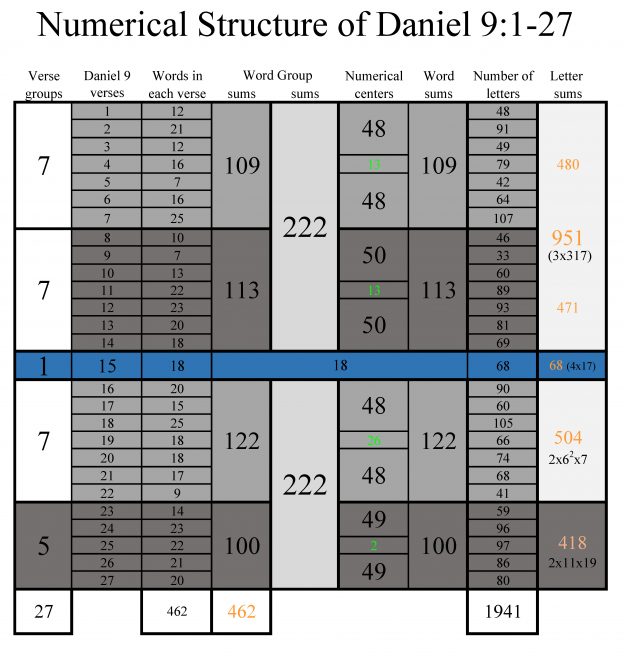
The Numerical Structure of Daniel 9 & the Prophecy of 70 Sevens
This week I have some wonderful information to share with you about Daniel 9 and the prophecy of 70 Sevens. I guarantee that after reading this article you’ll never look at Daniel 9 the same way again. My real hope though is that by the time you’ve finished this article you’ll have a new and fuller understanding of Yahweh’s redemptive plan for mankind and how richly He has woven that redemptive thread throughout the Biblical record. I hope you are prepared for an amazing adventure in Yahweh’s words. To begin lets talk about the power of words.
Words are powerful!
But have you ever thought about what makes them powerful?
Words are powerful because they convey meaning, right? But meaning alone doesn’t make words powerful. Words are powerful when they are arranged in specific ways to convey thoughts, emotions, and ideas. If we dig even deeper, we realize the same about the letters that make up those words. Letters are merely symbols (with meaning) which we arrange to make words.
Let me give you an example of why words, even though individually they have meaning, are only truly powerful when arranged with an intent to express thoughts or ideas. See if the following words have any noteworthy meaning to you.
Spot saw nor I never moor a in of how I the certain
I heather the saw given as spoke know
the with if visited a never were be what god never looks
I and heaven I charts yet am wave the sea yet.
While each of these words in the above sentence has a meaning, as they are currently arranged, they certainly are not what we would consider powerful or moving. In fact, as a whole they do not make much sense at all. Now take a look at those same words as they were arranged by the poet Emily Dickinson:
Chartless
I never saw a moor,
I never saw the sea;
Yet know I how the heather looks,
And what a wave must be.
I never spoke with God,
Nor visited in heaven;
Yet certain am I of the spot
As if the chart were given.
– Emily Dickinson
As you can see those are some powerful words once they have been imbued with order. That is what I want to talk about today – the order and design of words in the Bible.
Did you know that the Hebrew authors of the Old Testament were masters at arranging words to make powerful literary statements? Scholars have long realized that many passages in the Bible have been arranged in specific ways to bring meaning to the text. For example, many passages of the Bible are arranged a chiastic pattern. Chiasm refers to a crosswise arrangement of concepts or words that are repeated in reverse order. This chiastic arrangement of the text allows the author to emphasis important parts of the passage in an artistic and more meaningful way.
Psalm 119 is a classic example of another literary devices used by Hebrew wordsmiths. This 22 stanza Hebrew poem is ordered acrostically. Each stanza beginning with a Hebrew word whose first letter is one of the 22 letters of the Hebrew alphabet (arranged alphabetically). Further each stanza is exactly 8 verses. In total there are 1063 words to Psalm 119. There are 533 words in the first 11 stanzas and 530 words in the second. The numerical center of this Psalm is the three words of verse 88b which in English translates to:
“so shall I keep the testimony of thy mouth.”
This three Hebrew word statement situated in the exact middle (530+3+530) of Psalm 119 perfect summarizes what this Psalm is all about. Now that is a powerful numerical and literary statement! For more on the numerical arrangement of Psalm 119 I’d encourage you to read Casper Labuschagne’s logotechnical analysis of Psalm 119 here: Psalm 119
You see the Hebrew authors not only arranged many of the Biblical passages chiastically and poetically, but in some instances, they also structured them numerically to emphasize a word, verse, a larger passage, or an idea. As Casper Labuschange and others have demonstrated, many of the books of the Bible have a distinctive numerical structure which their authors used to emphasize their divine authorship.
Biblical scholars have noted that the Jewish scribes who painstakingly copied the Hebrew text meticulously counted the verses, words, and letters of the Hebrew Bible. As demonstrated by the Leningrad Codex, these summations were noted in margins of the text. One particularly interesting feature of these scribal notes is that they noted the exact numerical center word and often the letter of the Biblical books and even some passages. The significance of this has been debated but as demonstrated with Psalm 119 there is often a numerically structured design to the books of the Bible and many of its passages that focuses on the center of the passage.
If you think about it this propensity to mark the numerical center of a Hebrew passage, it could be seen as a type of encryption key which locked in the number of words in the particular passage in question because that numerical center was fixed relative to the entire passage. Just one wrong letter or word would change the entire numerical structure of the text. This precise layout of the Hebrew text also makes it hard for those who claim the Hebrew text of the Bible was corrupted to make their case. In a way you could look at as Yahweh’s way of numerically sealing the books and passages of the Bible.
In the modern era this numerical analysis of the Old Testament is in its nascent stages of rediscovery. I only recently stumbled upon this logotechnical analysis of the Hebrew Bible after reading an article by Israel Kohl on Academia.edu entitled: Solving the Mystery of Genesis 49:10b? – The Numerical Key. That article argued that the controversy surrounding Genesis 49:10b might be solved by looking at the overall numerical structure of the text. Professor Kohl’s makes his argument to good effect. In his article he referenced Casper Labuschange and his work. Mr. Labuschagne extensive research into the numerical structure of the Bible can be found at his website: Casper Labuschagne or at this Academia.edu page here: casperlabuschagne.academia.edu/research For what it is worth Mr. Labuschange would probably be considered a “liberal” scholar and does not share a “fundamentalist” (as he calls it) view of the Scriptures. Nevertheless, his work provides compelling evidence that the Hebrew MT text of the Scripture was intentionally designed to glorify Yahweh the living God of the Bible.
A Numerical (logotechnical) Analysis of Daniel 9
For those of you who have read my book The 13th Enumeration, I’ve long believed that the numbers 13 and 14 have special significance related to the Bible’s messianic message. Specifically, I’ve proposed that these numbers were incorporated into the Bible in order to show that Yeshua (Jesus) of Nazareth was the Bible’s promised Messiah. In fact, I’ve shown that a reasonable case can be made that these numbers identify Yeshua as the Bible’s prophesied Messiah and that they can be used to calculate the coming of the Messiah as prophesied in Daniel 9 and its 70 Sevens prophecy.
What I didn’t know until this past month is that Daniel 9 is designed to emphasize the numbers 7 & 13 (and their derivatives 14 & 26) in relation to the 70 Sevens Prophecy. Last week I shared with you a chart of 100 Hebrew words arranged into 49+2+49 word groups. I asked if any of you could tell me its significance. Some of you correctly identified the chart as Daniel 9:22-27. As you can see below the 13 & 14 words of verse 25 (the center verse) of that 100 words 5 verse passage were the words 70 Sevens (49). So like Psalm 119 and many other passages in the Bible, Daniel 9:22-27 was arranged to emphasize the very heart of the prophecy of 70 Sevens. But that’s not all that is special about Daniel 9. (A special thanks to NR for providing me with the English translation for the Hebrew words):
Please note the following chart is read right to left.
In this article I want to share with you something truly special about how Daniel 9 in general and the prophecy of 70 sevens in particular was arranged by the prophet Daniel under what I have to believe is divine inspiration, in order to provide you and me with the basis to prove that Yeshua (Jesus) of Nazareth was the Bible promised Messiah.
Let’s start by looking at the numerical structure of Daniel 9 and its use of the numbers 7 & 13 in the Daniel’s efforts to show that the prophecy of 70 Sevens was of divine origins. Based upon the work of Labuschagne and others this exploration also shows how the numerical center of Daniel 9 provides the pivot around which the entire chapter is organized. Further this organization brings to light the incredibly complex and intricate nature of the passage.
To start with Daniel 9, as given in the Hebrew (MT) text, has 462 words. The 18 words of verse 15 are the exact numerical center of this passage. There are 222 words before Daniel 9:15 and 222 words after. Daniel 9:15 reads as follows:
Daniel 9:15
5 And now, O Lord our God,
that hast brought thy people forth out of the land of Egypt
with a mighty hand, and hast gotten thee renown,
as at this day; we have sinned, we have done wickedly.
Thematically, Daniel 9:15 is the climax of Daniel’s confession and admission of guilt on behalf of himself and his people. Daniel opens his moving intercessory prayer in verse 4 with a plea for YHWH to remember his “covenant and mercy to them that love him and keep his commandments”. This “covenant and mercy” is a direct quote from Deut. 7:9 and Moses’ admonitions to Israel before they were to cross over into the promised land.
It’s important to note for the sake of context here, that Moses’ “covenant and mercy” is a reference to the oath (shabuwa’) YHWH swore (shaba) with Abraham in Genesis 22:16. This was the first recorded oath sworn with any man in the Bible.
Also note that the Hebrew word sware (shaba) is phonetically identical to the word seven (sheba). This has led some Bible commentators to acknowledge that Yahweh’s oath with Abraham could rightly be called a swaring of sevens. (For more on this please see my article: Seven, 70, & Sevens: Daniel 9 & the Bible’s Messianic Symbolism)
 Daniel’s
Daniel’s confessions on behalf of his people reaches its final climactic admission of guilt in verse 15 with the words “we have sinned, we have done wickedly”.
confessions on behalf of his people reaches its final climactic admission of guilt in verse 15 with the words “we have sinned, we have done wickedly”.
After verse 15, Daniel shifts his pleadings to YHWH from admissions of their collective guilt, to a petition for unmerited mercy and forgiveness. Verse 21 acknowledges that while Daniel was still in prayer the angel Gabriel came to answer Daniel’s petition with a prophecy of 70 Sevens. So with that general overview of the passage, we can now dig into the author’s arrangement of the passage.
In the chart below you can see that once the numerical center of Daniel 9 is acknowledged the passage then naturally organizes into three 7 verse groups and a final five verses in which the angel Gabriel’s gives a 14 words introduction followed by the prophecy of 70 Sevens.
It’s fascinating, I dare say mind boggling, the obvious effort that went into the design of this passage. Its verses are arranged into groups of 7+7+1+7+5. As becomes apparent each 7 verse grouping has its own numerical center of 13 (or 2×13) groups of words.
The Proper Name of YHWH in Daniel 9
The three 7 verse groupings also have another unique characteristic in common. They are the only places where the proper name of YHWH is found in the entire book of Daniel. YHWH is used 8 times in the book of Daniel and all 8 occurrences are found in Daniel 9 in one of the 7 verse groups, each of which have a numerical center of 13 or 26 (2×13) words – numbers which underline the numerical structure of YHWH’s name. Of these eight occurrences, 2 occurrences are found in the first 7 verses of Daniel 9. Five occurrences are found in the 2nd grouping of 7 verses of Daniel 9, and the final occurrence of YHWH is found in verse 20 in the final grouping of seven verses.
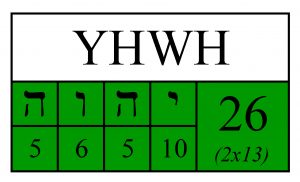 Using a symbolic flourish, the author bookends or seals the use of the name of YHWH by numerically highlighting the first and last usage of the name. The first occurrence of YHWH is the 13th word of Daniel 9:2. The last occurrence of YHWH in Daniel 9 is found in verse 20 and again it is the 13th word of that verse as well. The 4th occurrence of YHWH in Daniel 9 is the 4th word of verse 10 which itself has 13 words. This occurrence of YHWH is also the 130th word of the chapter 9.
Using a symbolic flourish, the author bookends or seals the use of the name of YHWH by numerically highlighting the first and last usage of the name. The first occurrence of YHWH is the 13th word of Daniel 9:2. The last occurrence of YHWH in Daniel 9 is found in verse 20 and again it is the 13th word of that verse as well. The 4th occurrence of YHWH in Daniel 9 is the 4th word of verse 10 which itself has 13 words. This occurrence of YHWH is also the 130th word of the chapter 9.
The name YHWH is used three times (5th, 6th, 7th) in a unique 15-word pattern running through verses 13 and 14. There the first and last occurrence of the name is separated by 13 words and the 2nd and 3rd occurrences are each 7th successive words from the next. In other words, it is written: (YHWH + 6 + YHWH + 6 + YHWH). Again, this pattern bridges the 13th and 14th verses of the chapter.
Finally, the 6th and 7th usage of the name are the 206th and 213thwords of the passage. Call it a coincidence, if you will, but the numbers 206 and 113 both remind the reader of the divine name numbers of YHWH. Even discounting some of these usages as coincidental, there is sufficient reason to see an effort by Daniel in Daniel 9 to emphasize the name of YHWH and its numerical basis in the number 13.
The Numerical Middle of the 7 Verse Groupings
Next let’s turn our attention to the Daniel’s use of 13 and 26 as the numerical centers of the 7-verse groupings as described in the following chart.
Once again, the Daniel’s amazing efforts are on bold display. The numerical center of the first 7 verses of Daniel 9 are the 13 words in which Daniel pleads with YHWH to remember his “covenant and mercy to them that love him, and to them that keep his commandments.”
Daniel 9:4
….and made my confession, and said, O Lord, the great and dreadful God,
keeping the covenant and mercy
to them that love him, and to them that keep his commandments;
This 13-word numerical center begins with the 49th word of Daniel 9:23-27 – thus again linking the numbers 13 & 49. Those 13 words are proceeded by 48 words and are followed by the same. (48+13+48)
To repeat, this “covenant and mercy” mentioned by Daniel is a quote taken from Deut. 7 and Moses’ admonitions to Israel before entry into the promised land. Note also, that Deut. 7:7-12 (quoted below) mentions the “mighty hand” of YHWH which brought Israel out of Egypt – the very same sentiments highlighted by the numerical center of Daniel 9. So, we can see that Daniel is framing his plea for Israel’s deliverance in terms that shadow Israel’s Exodus from Egypt.
Further, a close reading of Deut. 7-9 reveals that Moses’ mention of YHWH’s “covenant and mercy” (as mentioned above) finds its source in the oath (shabuwa’) that YHWH personally sware (shaba) with Abraham in Geneses 22:16. (see also Gen. 26:3-4, Deut. 9:5, Luke 1:67-80, Acts 3:25-26, Hebrews 6:13-20) This oath which promised, in part, that through Abraham’s seed “all nations of the earth would be blessed”.
While this oath with Abraham was seen from an Old Testament perspective as primarily a promise of Israel’s national restoration, the New Testament authors saw the fulfillment of this oath, primarily as a restoration of Israel’s spiritual fortunes through the Messiah and only after this spiritual restoration would come the fulfillment of the other promises made to Abraham. This is important to note because the Prophecy of 70 Sevens, found in the final verses of Daniel 9 speak primarily to this redemptive nature of Israel’s future restoration.
Deuteronomy 7:7-12
7 YHWH did not set his love upon you, nor choose you, because ye were more in number than any people; for ye were the fewest of all people: 8 But because YHWH loved you, and because he would keep the oath which he had sworn unto your fathers, hath YHWH brought you out with a mighty hand, and redeemed you out of the house of bondmen, from the hand of Pharaoh king of Egypt.
9 Know therefore that YHWH thy God, he is God, the faithful God, which keepeth covenant and mercy with them that love him and keep his commandments to a thousand generations; 10 And repayeth them that hate him to their face, to destroy them: he will not be slack to him that hateth him, he will repay him to his face. 11 Thou shalt therefore keep the commandments, and the statutes, and the judgments, which I command thee this day, to do them.
12 Wherefore it shall come to pass, if ye hearken to these judgments, and keep, and do them, that YHWH thy God shall keep unto thee the covenant and the mercy which he sware unto thy fathers:
Genesis 22:16-18
6 And said, By myself have I sworn, saith YHWH, for because thou hast done this thing, and hast not withheld thy son, thine only son: 17 That in blessing I will bless thee, and in multiplying I will multiply thy seed as the stars of the heaven, and as the sand which is upon the sea shore; and thy seed shall possess the gate of his enemies; 18 And in thy seed shall all the nations of the earth be blessed; because thou hast obeyed my voice.
The 2nd Seven
The 2nd seven verse group also has a numerical center of 13 words. Here there are 50 words before and 50 words after the numerical center. Just as the numerical center of the 1st seven verse group harkened back to words of Moses, so do these 13 words. They are as follows:
Daniel 9:11-12
…because we have sinned against him.
And he hath confirmed his words, which he spake against us,
and against our judges that judged us,..
The context here are the words of YHWH as given through Moses. They related to the curses pronounced upon Israel by Moses if they departed from YHWH’s righteous instructions. Daniel is acknowledging their deserved nature.
As demonstrated, both of these 13-word numerical centers find their context in the words of YHWH through Moses. To emphasis this Moses is mentioned just before and just after this center point. Here is the fuller context:
Daniel 9:11-13
11 Yea, all Israel have transgressed thy law, even by departing, that they might not obey thy voice; therefore the curse is poured upon us, and the oath that is written in the law of Moses the servant of God, – – – because we have sinned against him. 12 And he hath confirmed his words, which he spake against us, and against our judges that judged us, – – – by bringing upon us a great evil: for under the whole heaven hath not been done as hath been done upon Jerusalem. 13 As it is written in the law of Moses, all this evil is come upon us: yet made we not our prayer before the YHWH our God, that we might turn from our iniquities, and understand thy truth.
The 3rd Seven Verse Grouping
The final seven verse grouping are verses 16-22. The numerical center are the 26 (2×13) words that bridge verses 18-19. In this passage there are 48 words before and 48 words after (48+26+48). They are as follows:
Daniel 9:18-19
…for we do not present our supplications before thee for our righteousnesses,
but for thy great mercies.
O Lord, hear; O Lord, forgive; O Lord, hearken and do;
defer not, for thine own sake, O my God…. called by thy name.
[note here the reading in English is not exactly the same as in Hebrew. To get the full sense of the passage and its order it is better to read the Hebrew provided at the bottom of this paper.]
There are several neatly congruent things about this passage. First, these 26 words have their own numerical center. That center is the 13 & 14 words “O Lord hear”. (12+2+12) These two words begin a uniquely emphatic triplet phrase of petition,
“O Lord, hear; O Lord, forgive; O Lord, hearken and do…”
Another neat aspect of this passage is now that we are on the back side of the 18-word numerical center of Daniel 9:15 (the numerical center of the entire chapter), Daniel is petitioning YHWH to remember his people, sanctuary, and city – not because Israel deserves it, but rather for YHWH’s righteous name sake. Here are verses 18-19 in full. Notice the emphasis on YHWH’s holy name:
Daniel 9:18-19
O my God, incline thine ear, and hear; open thine eyes, and behold our desolations, and the city which is called by thy name: for we do not present our supplications before thee for our righteousnesses, but for thy great mercies. 19 O Lord, hear; O Lord, forgive; O Lord, hearken and do; defer not, for thine own sake, O my God: for thy city and thy people are called by thy name.
 You have to admit, it is incredibly congruent in light of the Daniel’s emphasis on “the name” in this seven verse grouping that He makes the numerical center of this passage 26 words in length. As most know the proper name of YHWH has a Hebrew letter numerical value of 26.
You have to admit, it is incredibly congruent in light of the Daniel’s emphasis on “the name” in this seven verse grouping that He makes the numerical center of this passage 26 words in length. As most know the proper name of YHWH has a Hebrew letter numerical value of 26.
Further adding to the congruency, is just as the numerical center of the first seven verses appealed to YHWH to remember his “covenant and mercy”, these 26 words also emphasize the importance of that plea by not just pleading for YHWH’s mercy but His forgiveness as well.
Summary of the Seven
In summary, by acknowledging the 18 words of Daniel 9:15 as the numerical center of Chapter 9, the three groups of seven verses stand out as individual mini-themes in their own right. Further each of these passages have their own numerical center emphasizing the particularly important aspect of the seven verses in which they are centered. All three of these three 7-verse groupings build to the coming revelation of the 70 Sevens prophecy.
- The heart of the first seven verses called to remembrance YHWH’s “covenant and mercy” – that oath of sevens which He sware with Abraham in Gen. 22:16.
- The 2nd seven verses confess the individual and national guilt of Israel.
- The final group of seven verses requests YHWH divine intervention.
The final 5 verses of chapter 9 then provide YHWH’s answer to Daniel. Let’s look at the response Daniel received in light of its numerical structure.
The Prophecy of 70 Sevens
Now we turn to the final 5 verses of Daniel 9 and the prophecy of 70 Sevens as given by Gabriel to Daniel. If we looked at the first 22 verses of Daniel 9 as “the problem” the final five verses represent the solution. Daniel’s people were captives in Babylon, Jerusalem was destroyed, and YHWH’s house desolate. Daniel raises these issues with YHWH, acknowledges the reasons for them and then pleads for YHWH to intervene. The 70 Seven’s prophecy is YHWH’s answer to Daniel.
The passage includes verses 23-27 of chapter 9. Curiously, the word count develops as a countdown of sorts:
Verse 23 = 14 words
Verse 24 = 23 words
Verse 25 = 22 words
Verse 26 = 21 words
Verse 27 = 20 words
These final five verses of Daniel 9 begin in Daniel 9:23 with 14 words. The 13th and 14th word of which are key to “understanding” the prophecy. In English it is as follows:
Daniel 9:23
23 At the beginning of thy supplications the commandment came forth, and I am come to shew thee; for thou art greatly beloved: therefore understand the matter, and consider the vision.
The 14 words which begin Gabriel’s introduction to the prophecy of 70 Sevens start with the Hebrew word techillah (begining) and end with the words biyn mar’eh which means discern/ understand the vision / prophecy. The Hebrew word biyn to discern or understand is the 13th word of verse 23.
We’ve already seen the two numbers 7 & 13 and its factors prominently displayed in the numerical structure of the first 22 verses of Daniel 9 (used alternatively as 14, 49 & 26). As we dig deeper here, it will become more apparent that not only were the numbers 7 and 13 (and their derivatives) an important part of the numerical structure of the first 22 verses but they also appear to be numerical keys that demonstrate the exquisite symbolism of the 70 Sevens prophecy and the means by which we also find a unique numerical solution.
The Numerical Center of the 70 Sevens
So the prophecy opens with an introduction of 14 words, the 13th word of which reminds us to discern or understand the vision. As you can see from the provided charts, the final 5 verses of Daniel 9 are exactly 100 words in length. The numerical center of this passage being the two words shabuwa’ sheba (Sevens 7) found in verse 25.
This numerical center then makes for 49 words before and 49 words after the Hebrew words sheba’ shabuwa’ “7 Sevens” which itself is a representation of 49. In other words, these two words sheba’ shabuwa’ which represent the heart of this prophecy are numerically equal to 49. These words are also the 13th and 14th word of Daniel 9:25 – the central verse of the prophecy.
Solidifying the authors intent to showcase sheba’ shabuwa’ as the heart of this prophecy is the fact that there are also exactly 204 letters before the two words and ten letters that make up sheba’ shabuwa’. There are also exactly 204 letters after this heart of the prophetic passage.
Further showing the design of this prophetic passage was meant to emphasize the word “seven” which begins the numerical center of Daniel 9:23-27, we find that this word is the 50th of the passage and its first letter the 50 letter of verse 25.
This unique occurrence of “seven” in Daniel 9 has the numerical value of 377 or 13×29. This does not seem to be an accident as I’ll explain below. Bringing special attention to this word the Masoretes marked the letter Ayin with an Etnachta. This cantillation mark was used to mark a pause or dividing point in the passage. In this case the letter Ayin under which this mark is used has the numerical value of 70. Obviously, the Masoretes saw some significance to this word and its numerical placement in the text.
Digging Deeper
It worth reiterating here, as partially noted at the beginning of this article, the 13-word numerical center of the first 7 verses of Daniel 9 begins with yadah (confess/praise) – this word is the 49th word of Daniel 9. Incidentally, yadah comes from the root yad which means hand. So, one might see there in the numerical center of this passage, the hand of Daniel raised in supplication for YHWH to remember his oath (shabuwa’) that He the living god of the Bible sware (shaba) with Abraham. This contrasts with the numerical center of the entire chapter of Daniel 9 which acknowledges and calls upon the mighty “hand” of YHWH which delivered Israel out of Egyptian bondage.
13 & 14 in Daniel 9
By now it’s apparent that the numbers 7 & 13 and their derivatives 14 & 26 have a certain prominence and structural significance in Daniel chapter 9. As we’ve seen, this is especially apparent in the fact that the two words 7 Sevens (49) of the numerical center of Daniel 9:23-27 are the 13th and 14th words of verse 25. I believe the significance of this has been underappreciated by scholars.
I’ll explain more of this significance later but to recap, Daniel opens his pleadings with a call for YHWH to remember His “covenant and mercy” – a phrase, which comes by way of Moses, from Gen. 22:16 and YHWH’s “oath” (shewbu’ah) that “by Himself” He sware (shaba) with Abraham, an swaring of sevens if you will, that promised (in part) that through Abraham’s seed “all nations of the earth would be blessed”. Then in answer to Daniel’s pleadings YHWH sends a prophecy of Shibiym Shabuwa’ (70 Sevens) both Hebrew words which find their roots in the Hebrew word Shaba / Shiba (sware / seven) and YHWH’s oath (shaba) with Abraham, the first “swaring of sevens” with any man in the Biblical record. Exquisitely congruent to say the least!
I believe it is important to note here that YHWH’s answer to Daniel’s prayer with the prophecy of 70 Sevens is primarily redemptive in nature. Of the six goals that will be fulfilled by the coming “anointed” one, four are specifically redemptive in nature.
Daniel 9:24 4 Seventy weeks are determined upon thy people and upon thy holy city, to finish the transgression, and to make an end of sins, and to make reconciliation for iniquity, and to bring in everlasting righteousness, and to seal up the vision and prophecy, and to anoint the most Holy.
This redemptive context is important to the numerical symbolism of the Bible in general and Daniel 9 in particular because these numbers -13 & 14 – are intimately connected to the sacrificial redemptive rites given in the Torah. Each month and during nearly every one of the 7 Biblical holy days throughout the year, Israel was required to make atonement with 13 or 14 sacrifices. The following are exemplar.
The Use of 13 & 14 in Daniel 9:23-27
Now let’s look at what happens when we view the prophecy of 70 Sevens through the numerical structural lens of 13 & 14:
- The 13th and 14th words of verse 23 tell us to “discern or understand the vision”.
- The 13th and 14th words of verse 24 emphasize the redemptive nature of the prophecy with the words “atone for iniquity”.
- The 13th and 14th words of verse 25 – “seven sevens” (49) are the numerical center of the prophecy. Both words find their roots in the Hebrew shaba/shiba a “swaring of sevens”. These words are a richly symbolic answer to Daniel’s plea for YHWH to remember His “covenant and mercy” – the oath that He sware with Abraham – an oath that New Testament authors claimed was fulfilled in Yeshua – the promised “seed” through who all nations of the earth would be blessed.
- Counting down from the numerical center and climax of the passage the 13th and 14th word are “cut off anointed” and parallel the OT idea of a suffering servant.
Isaiah 53:4-5
4 Surely he hath borne our griefs, and carried our sorrows:
yet we did esteem him stricken, smitten of God, and afflicted.
5 But he was wounded for our transgressions, he was bruised for our iniquities:
the chastisement of our peace was upon him;
and with his stripes we are healed.
After the numerical center of Daniel 9, the prophecy takes a decidedly negative turn. After the 13th and 14th word of the numerical center mentions “cut off anointed”, there does not seem to be any further numerical significance to these numbers in the prophecy (that I can find).
Daniel 9 and the New Testament book of Matthew
In light of the redemptive nature of Daniel 9 and the symbolism of 13 & 14, one can’t help but think of Matthew’s representation of Yeshua’s (Jesus’) lineage. As described in Matthew 1, there are 14 + 14 + 14 generations from Abraham to Yeshua. As give in the text though, Yeshua is the 14 + 14 +13 generation from Abraham – thus symbolically making Yeshua both the 13th & 14 generation.
This unique arrangement is further emphasized by noticing the location where the author removed 4 kings from Yeshua’s generations. 3 kings are removed between the 6th & 7th generation and 1 king is removed from between the 13th and 14th generation. Incidentally both 6 & 7 and 13 & 14 are cycles representative of the Bible’s lunar/solar calendar. More on the significance below.
 Like the author of Daniel who uses the numbers 7, 13, & 14 to emphasize the divine and redemptive nature of Daniel 9, Matthew uses those very same numbers to represent Yeshua as a descendant of Abraham and David. Matthew seems to have understood the messianic symbolism of Daniel 9 and used that very same symbolism in his opening arguments to prove that Yeshua was the Bible’s promised Messiah.
Like the author of Daniel who uses the numbers 7, 13, & 14 to emphasize the divine and redemptive nature of Daniel 9, Matthew uses those very same numbers to represent Yeshua as a descendant of Abraham and David. Matthew seems to have understood the messianic symbolism of Daniel 9 and used that very same symbolism in his opening arguments to prove that Yeshua was the Bible’s promised Messiah.
A New Testament Perspective
It is worth noting here that from a New Testament perspective there are strong grounds to believe that Matthew saw in Yeshua of Nazareth a fulfillment of the prophecy of Daniel. Aside from the symbolic parallels between the lineage of Yeshua in Matthew 1 and the numerical structure of Daniel 9, the Biblical calendar, and the Bible sacrificial rites, a reasonable chronological case could also be made that Yeshua’s birth fulfilled the statement of Daniel 9:25a.
Daniel 9:25
Know therefore and understand, that from the going forth of the commandment
to restore and to build Jerusalem unto the Messiah the Prince
shall be seven weeks,
This countdown to the Messiah begins with a “commandment” to restore and build Jerusalem. Interestingly, the English word “commandment” comes from the Hebrew dabar. Dabar is used 1439 times in the Old Testament and of those, the vast majority refer to the “dabar” or word of YHWH the living God of the Bible.
In Daniel 9 dabar is used four times including the instance in Daniel 9:25. Excluding Daniel 9:25 the other three occurrences clearly refer to the words of YHWH (Dan. 9:2, 12, 23). For comparison here is the 3rd and 4th occurrence of the word dabar in Daniel 9:
Daniel 9:23
At the beginning of thy supplications the dabar (commandment) came forth…
Daniel 9:25
Know therefore and understand, that from the going forth of the dabar (commandment) to restore and to build Jerusalem…
Surprisingly few Biblical scholars today consider the possibility that Daniel 9:25 refers to the word (dabar) of YHWH despite the contextual use of the word in the Bible in general and its use in Daniel 9 in particular. This oversight is especially problematic because we have a specific and datable dabar of YHWH to restore and build Jerusalem given through the prophets Haggai and Zechariah and witnessed by Ezra 6:14:
This dabar of YHWH commanded the Jewish people to return and build YHWH’s holy sanctuary., the very beating heart of the city of Jerusalem. If there was one de facto event that marked the return and building of Jerusalem then it would have been YHWH’s house, the very event that Daniel interceded for in his prayer to YHWH in Daniel 9:17.
Daniel 9:17
17 Now therefore, O our God, hear the prayer of thy servant, and his supplications, and cause thy face to shine upon thy sanctuary that is desolate, for the Lord’s sake.
Ezra 6:14
14 And the elders of the Jews builded, and they prospered through the prophesying of Haggai the prophet and Zechariah the son of Iddo. And they builded, and finished it, according to the commandment of the God of Israel….
Zechariah 1:7, 16
Upon the four and twentieth day of the eleventh month, which is the month Sebat, in the second year of Darius, came the word of YHWH unto Zechariah, the son of Berechiah, the son of Iddo the prophet, saying,…..
Therefore thus saith YHWH; I am returned to Jerusalem with mercies: my house shall be built in it, saith YHWH of hosts, and a line shall be stretched forth upon Jerusalem.
Both Haggai 1 and Zechariah 1 date YHWH’s divine “word” to return and build the Temple to year 520 BC. For the sake of argument, let’s assume that Matthew saw in this divine decree the starting point of Daniel’s 70 Sevens countdown to the Messiah.
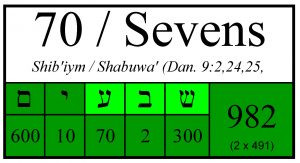 Now that we have the starting point (terminus a quo) in 520 BC, verse 25 states that it would be “Sevens 7” (Hebrew is read from right to left). It should be noted here that most scholars assume Hebrew reads sheba (7) shebuwa’ (sevens) but this assumption is based upon the Masoretic vowel pointings which were added over a thousand years later.
Now that we have the starting point (terminus a quo) in 520 BC, verse 25 states that it would be “Sevens 7” (Hebrew is read from right to left). It should be noted here that most scholars assume Hebrew reads sheba (7) shebuwa’ (sevens) but this assumption is based upon the Masoretic vowel pointings which were added over a thousand years later.
As given, the Hebrew (without vowel pointings) would have read Seventy 7 (shib’iym sheba). Literally 490 periods of time. So, in other words, from the dabar of YHWH until the coming of the anointed prince there were 490 periods of unspecified time.
Keep in mind here the numerical center of the prophecy was the 13th and 14th words of Daniel 9:25. Scholars have long acknowledged the curious fact that prophecy of 70 Sevens does not specify the units of time the prophecy was to be measured in. Many evangelical scholars see that unit of time as a “prophetic” year of 360 days. Others see a year of 365.24 days. Still other see a jubilee period of time.
These units of time aside, one must ask how the Jewish people to whom this prophecy was given might have calculated time. Most scholars acknowledge that the Biblical calendar was lunar/solar. The solar side of the calendar regulated the day. As mandated by the Torah, these days were arranged into a cycle of 6 & 7 days. Six days of labor and a day of rest. There were 52 (4×13) cycles of these in a year.
The other half of the Biblical calendar, (the lunar side of the calendar) regulated the various Biblical holydays throughout the year, as demonstrated in the charts above, each of these holydays had mandated sacrificial rites which often included 13 or 14 sacrifices. Because the lunar side of Israel’s calendar was regulated by the moon and its 29.53 days lunar cycle, each month there were two cycles of 13 or 14 waxing days of (visible) light followed by the same 13 or 14 days of waning (visible) light. Each month through the centuries these cycles of waxing and waning light were the means by which the Israelites kept “time” and marked events on their religious calendar.
So one might argue that “time” in the Bible was not a certain number of days, but rather a certain number of lunar cycles. Most years it was 12 lunar cycles of 29.54 days each for a “year” of 354.36 days. Every 3 years or so though, a Biblical intercalary year of 13 lunar cycles of 29.53 days was needed to rebalance the Biblical calendar. This intercalary “year” was 383.89 days.
 With these facts in mind it would not be unreasonable to entertain the idea that the Jewish people might have considered the 70 Sevens units of “time” in the Bible as a “year” of 12 or 13 lunar cycles.
With these facts in mind it would not be unreasonable to entertain the idea that the Jewish people might have considered the 70 Sevens units of “time” in the Bible as a “year” of 12 or 13 lunar cycles.
Curiously the 13th word of verse 25 is “seven”. This unique occurrence of the Hebrew word sheba in Daniel 9 – right in the numerical center of the prophecy – believe it or not, has a numerical value of 377. The factor of which are the prime numbers 13 and 29 – the very factors that delineate a 13 month Biblical “year”.
Summary
To summarize, the 13 words of Daniel 9:25 tell of a dabar to restore and build Jerusalem. A contextual Biblical case can be made that this dabar was the word of YHWH given through the prophets Haggai and Zechariah in the year 520 BC. Further, this 13 word Hebrew passage tells that the “anointed prince” will come after 70 seven. The 13th word of this passage is a unique occurrence of the Hebrew word sheba or seven (unique to Daniel 9). This unique occurrence of sheba in Daniel 9 has the numerical value 377 and the factors of 13 & 29. These factors being the very root of a 13th month Biblical year of 383.89 days.
By the way the Hebrew word Sevens (Shabuwa’) in Daniel 9:27 has a numerical value of 383. Which as demonstrated above is the number of days in 13 month Biblical (lunar) year.
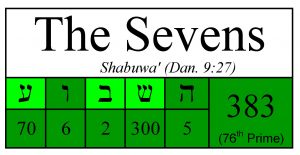 Using a 13th month year of 383.89 days multiplied by 70 seven or 490 periods of time gives 515.05 solar years. From the terminus a quo in 520 BC, theoretically this places the coming of the anointed prince in the year 5 or 4 BC. It doesn’t take much imagination to see why the New Testament authors would have seen in Daniel 9:25 a fulfillment in Yeshua of Nazareth who by many conservative estimates was born in 4 BC and thus would have been conceived in 5 BC.
Using a 13th month year of 383.89 days multiplied by 70 seven or 490 periods of time gives 515.05 solar years. From the terminus a quo in 520 BC, theoretically this places the coming of the anointed prince in the year 5 or 4 BC. It doesn’t take much imagination to see why the New Testament authors would have seen in Daniel 9:25 a fulfillment in Yeshua of Nazareth who by many conservative estimates was born in 4 BC and thus would have been conceived in 5 BC.
In Conclusion
Daniel 9 and the Prophecy of 70 Sevens was uniquely designed to highlight the “divine” numbers 7 & 13 – numbers which are intimately woven into the Biblical calendar and its sacrificial rites. The New Testament’s belief that Yeshua (Jesus) was the promised Messiah appears to have both a chronological and symbolic connection to the prophecy of 70 Sevens found in Daniel 9. This connection likely contributed to the early New Testament’s basis for their belief that Yeshua (Jesus) was the promised Messiah.
For a more in-depth explanation of Daniel 9 and the Prophecy of 70 Sevens you can download my free book: Daniel’s 70 Weeks: The Keystone of Bible Prophecy at the following link: Free Book Download Please note my books at this download link are several years old and do not reflect my latest research on the prophecy of 70 Sevens such as this present article.
Maranatha!
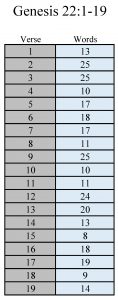 A Treasure Hunt for Next Time
A Treasure Hunt for Next Time
For those of you who like to dig deeper on your own I have a special challenge for you. As this article demonstrated, the numerical center of the first 7 verses of Daniel 9 is a reference to “covenant and mercy” of YHWH – a quote that comes from Gen. 22:1-19 by way of Moses in Deu. 7. This covenant and mercy was but a reference to the first oath Yahweh swore with any man in the Bible. An oath which promised in part that through Abraham’s “seed” all nations of the earth would be blessed. A promise which the New Testament authors clearly demonstrates as being fulfilled in Yeshua.
Yahweh willing my next article will take a look at the numerical structure of Genesis 22:1-19 to see what Biblical treasures we can find. To give you a hint of how amazing this passage is there are a total of 307 words which tell of Abrahams willingness to sacrifice Isaac – and his faith that He and Isaac would return home. A faith that was rewarded by YHWH with an oath that promised through Abraham’s “seed” all nations of the earth would be blessed. This wonderful messianic picture of YHWH “providing Himself a lamb” has long been seen as a foreshadowing of Yeshua.
The numerical center of this passage is a single word – a name. See if you can figure out who’s name is highlight by the numerical arrangement of the text. There are 153 words before this name and 153 after. The first verse of Genesis 22 has 13 words in it and the last verse of this passage (v. 19) has 14 words. Believe it or not!
So see if you can figure out how the author of this passage organized it to highlight its redemptive message. I hope you enjoy the treasure hunt.
For Further Reflection
Its also worth mentioning that Yeshua and His twelve disciples made 13. Later when Yeshua called Paul as the apostle to the Gentiles this made 14.
Paul and the Middle Wall of Partition
As the apostle to the gentiles, Paul in his epistle to the Ephesians described Yeshua and his work at Calvary as breaking down the “middle wall of partition”. This “wall” was built to keep the gentiles from entering the temple proper and by extension the presence of Yahweh. Only the Jewish people had access through this wall. In a symbolic picture par excellence it is fascinating to note that during Paul’s and Yeshua’s era that middle wall was access by 14 steps and 13 gates:
Ephesians 2:13-14
13 But now in Christ Jesus ye who sometimes were far off are made nigh by the blood of Christ. 14 For he is our peace, who hath made both one, and hath broken down the middle wall of partition between us;
Click on images to enlarge
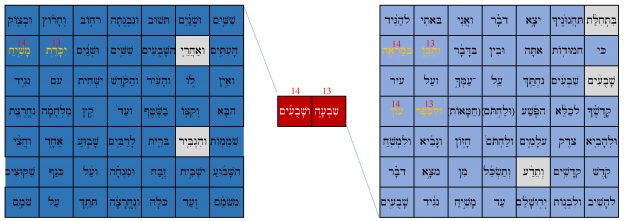
A 100 Hebrew Word Challenge
The past several weeks I’ve been rediscovering some amazing information that I believe will change how you look at one of the most significance passages of prophetic Scripture in the Bible. The information has wide ranging implications that frankly I’m still trying to wrap my mind around.
I hope to be able to put this wonderful information together in a congruent article in a week or two but to give you just a glimpse, below is an image of a 100 word passage of Scripture that most of you are familiar with. These 100 Hebrew words are as they are found in the Hebrew Bible only I’ve arrangement them in a special way as indicated by the larger context in which they are found.
The Challenge:
Can anyone tell me where this exquisite numerical arrangement is found in the Bible?
A Bonus Challenge:
Any Ideas on the larger context of this passage which might support such an arrangement?
Hints:
These five verses are from a chapter of the Bible in which the name of YHWH is used 8 times and no other times in the other chapters of the book. There are 100 words in these five verses and they are arranged by its author in a symbolic pattern of 49+2+49.
The two words of the numerical center of this passage clearly identify it, and the 13th & 14th words of the first three verses and the 13th and 14th words after the numerical center of the passage tell the story. The gray boxes market the start of each verse – – – Hebrew is read from right to left.
Click on Image to Enlarge:

